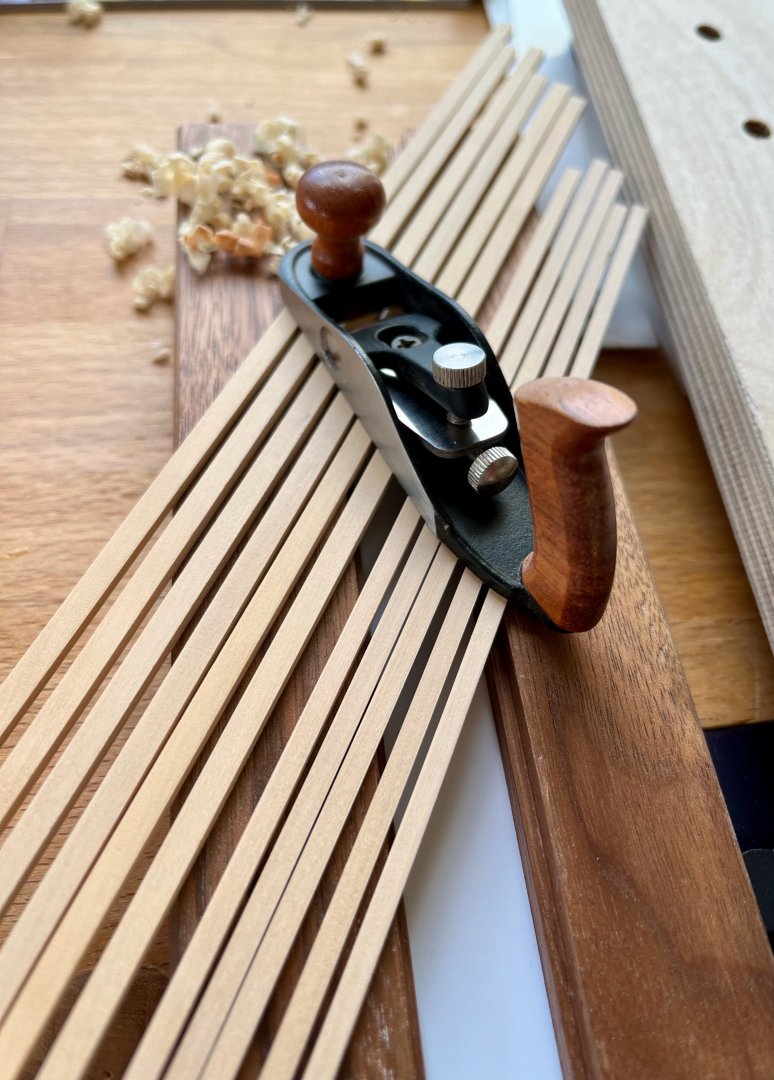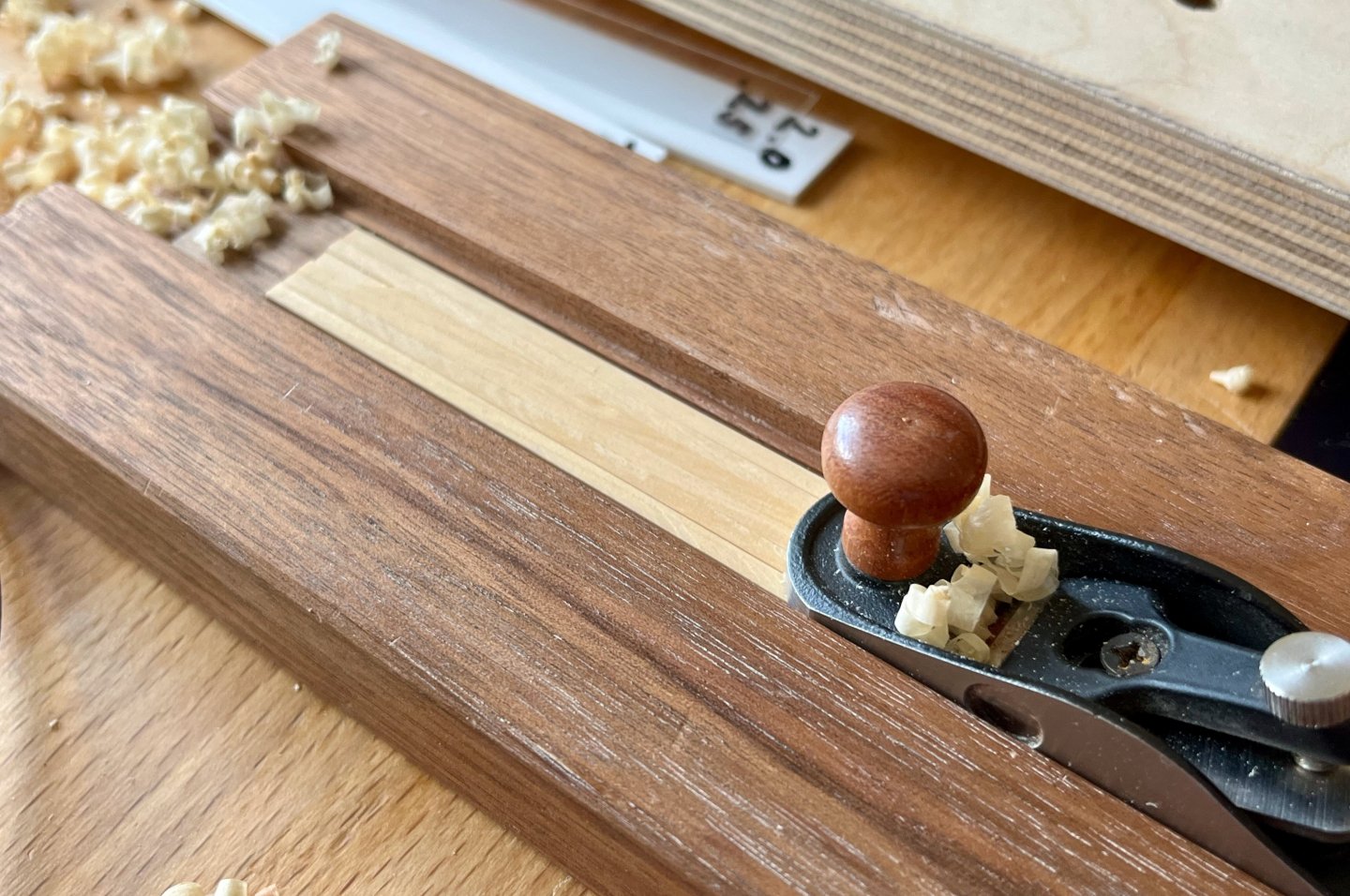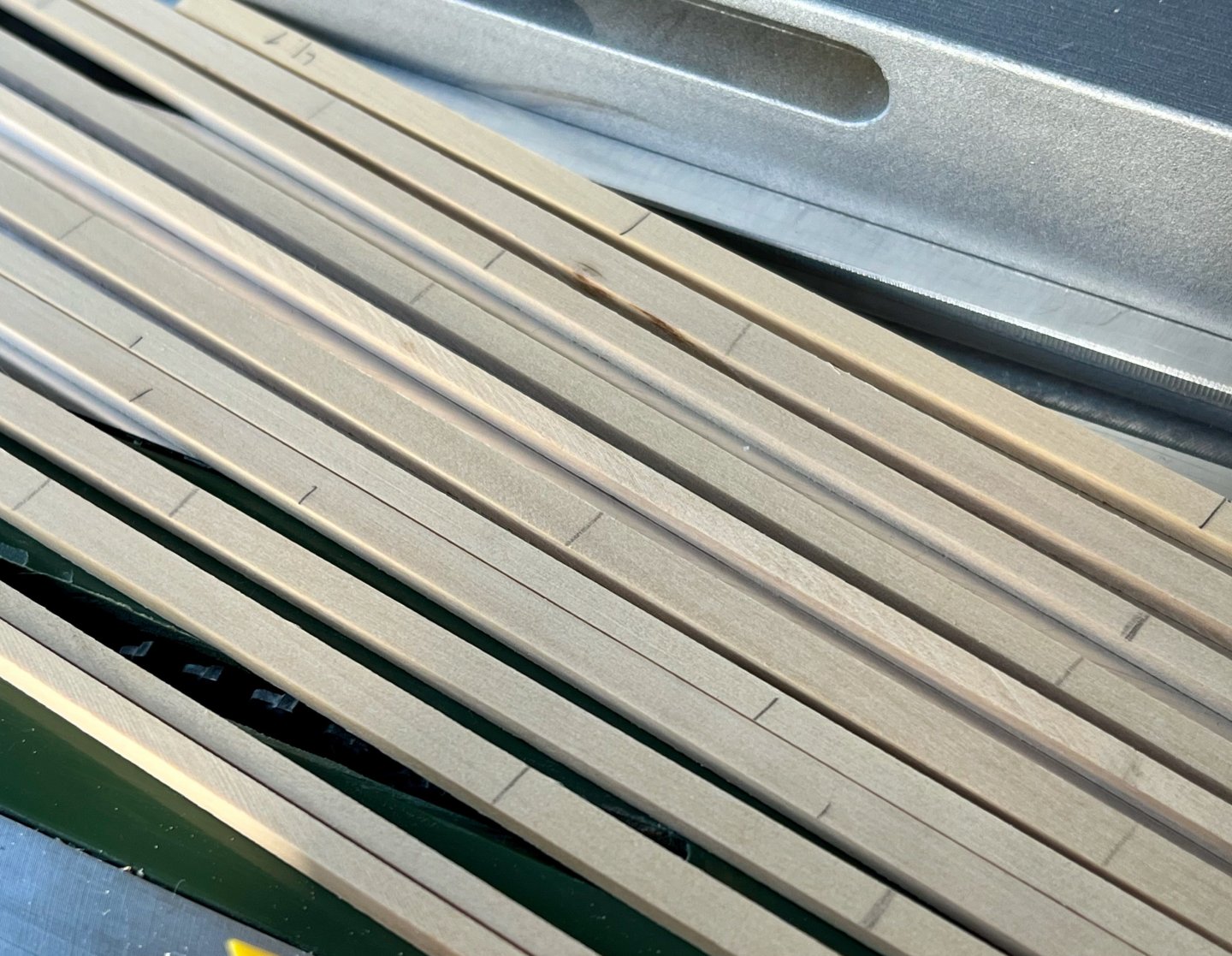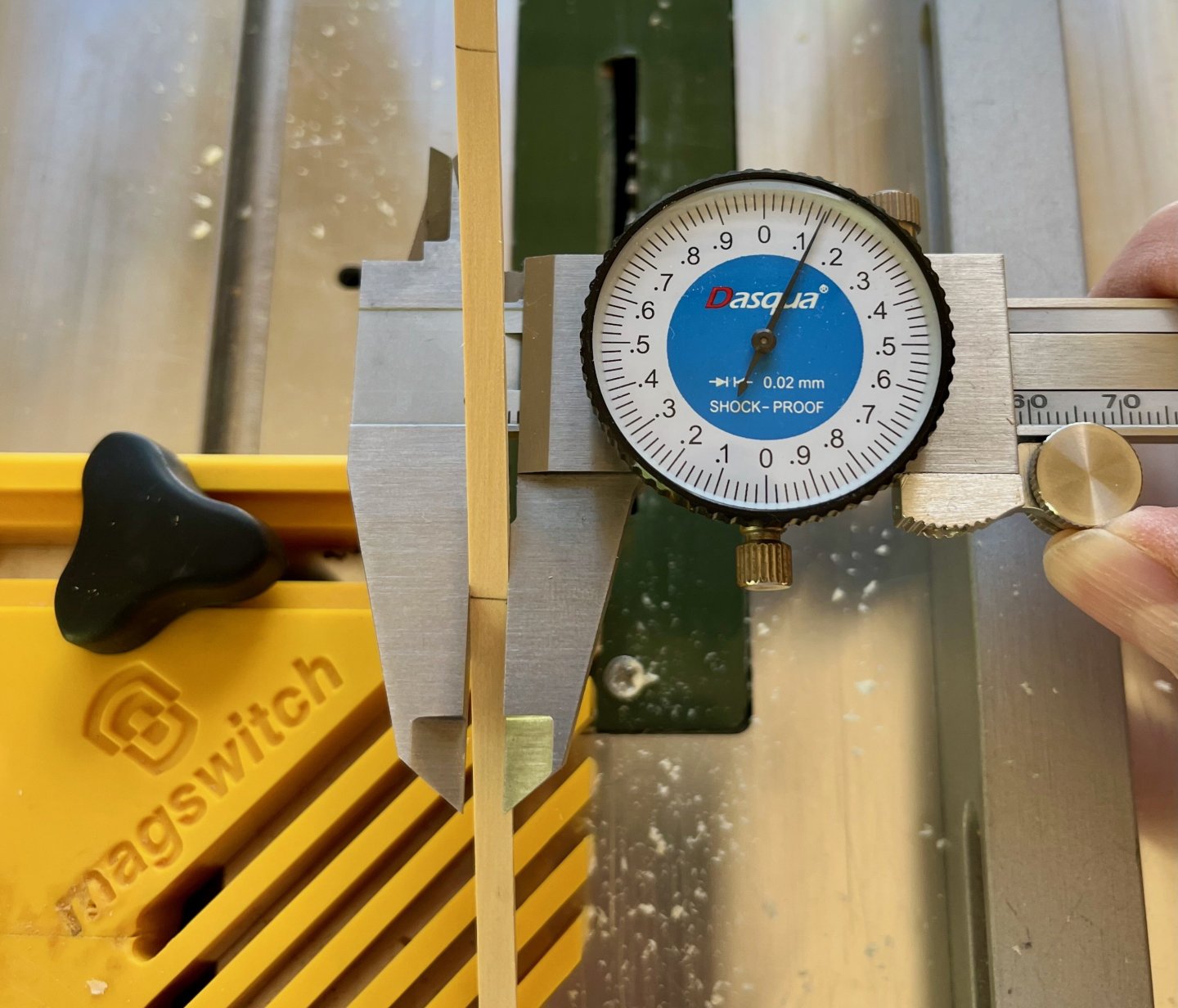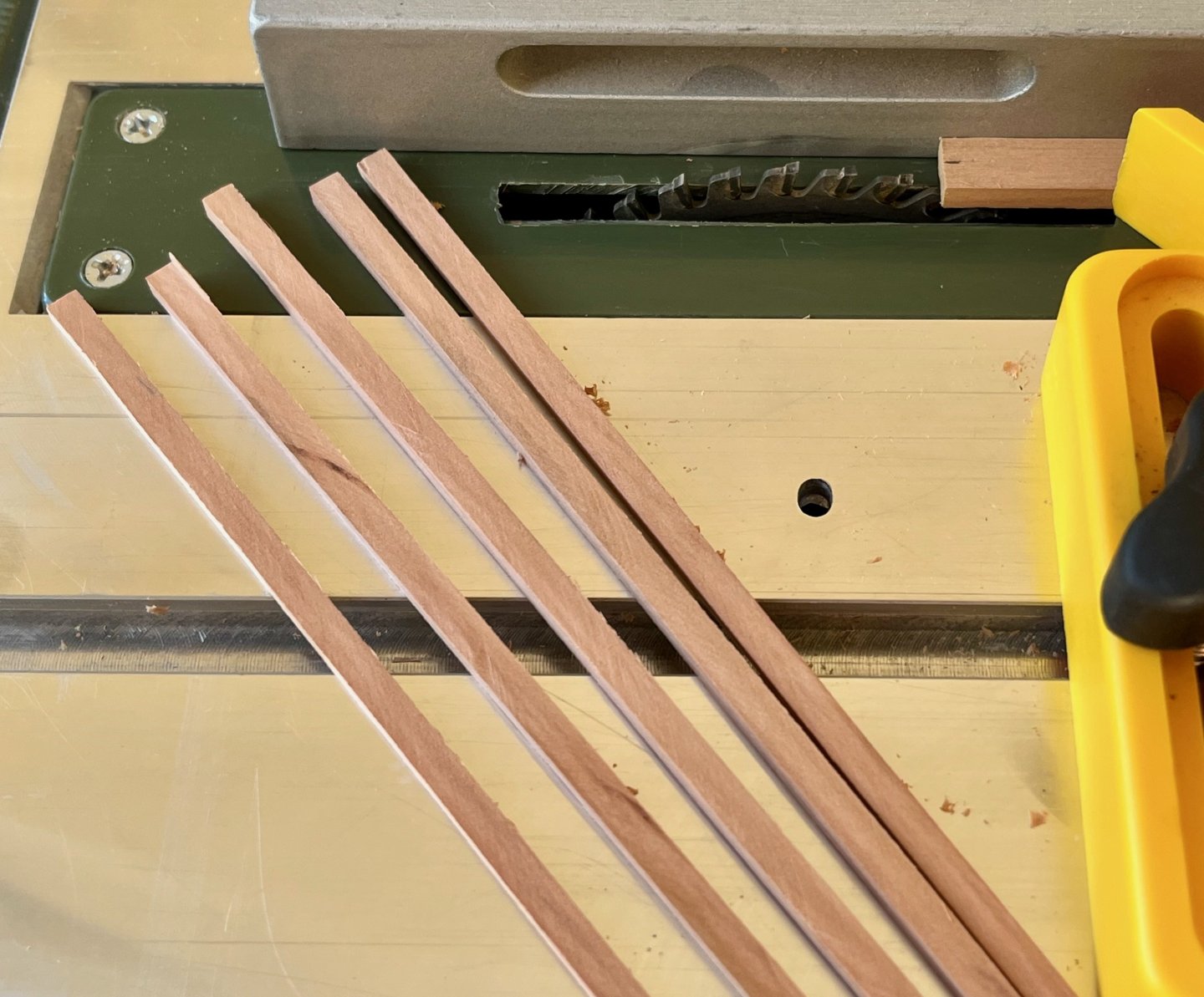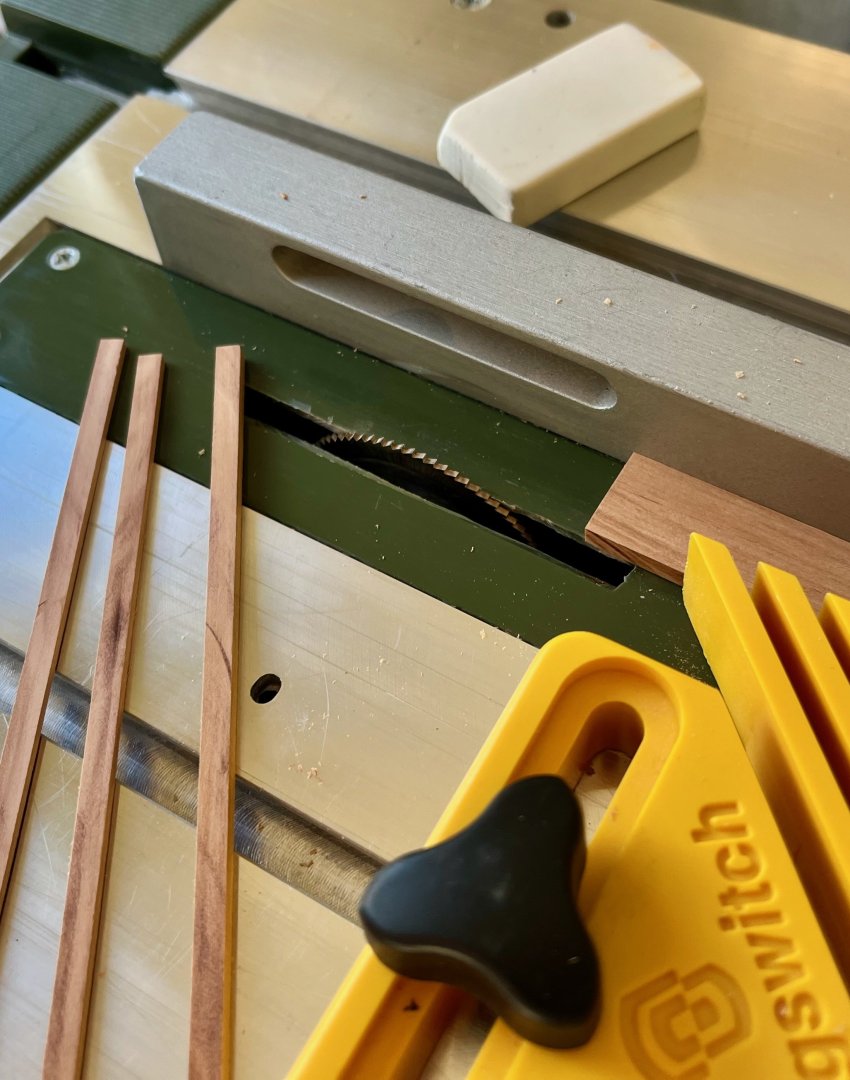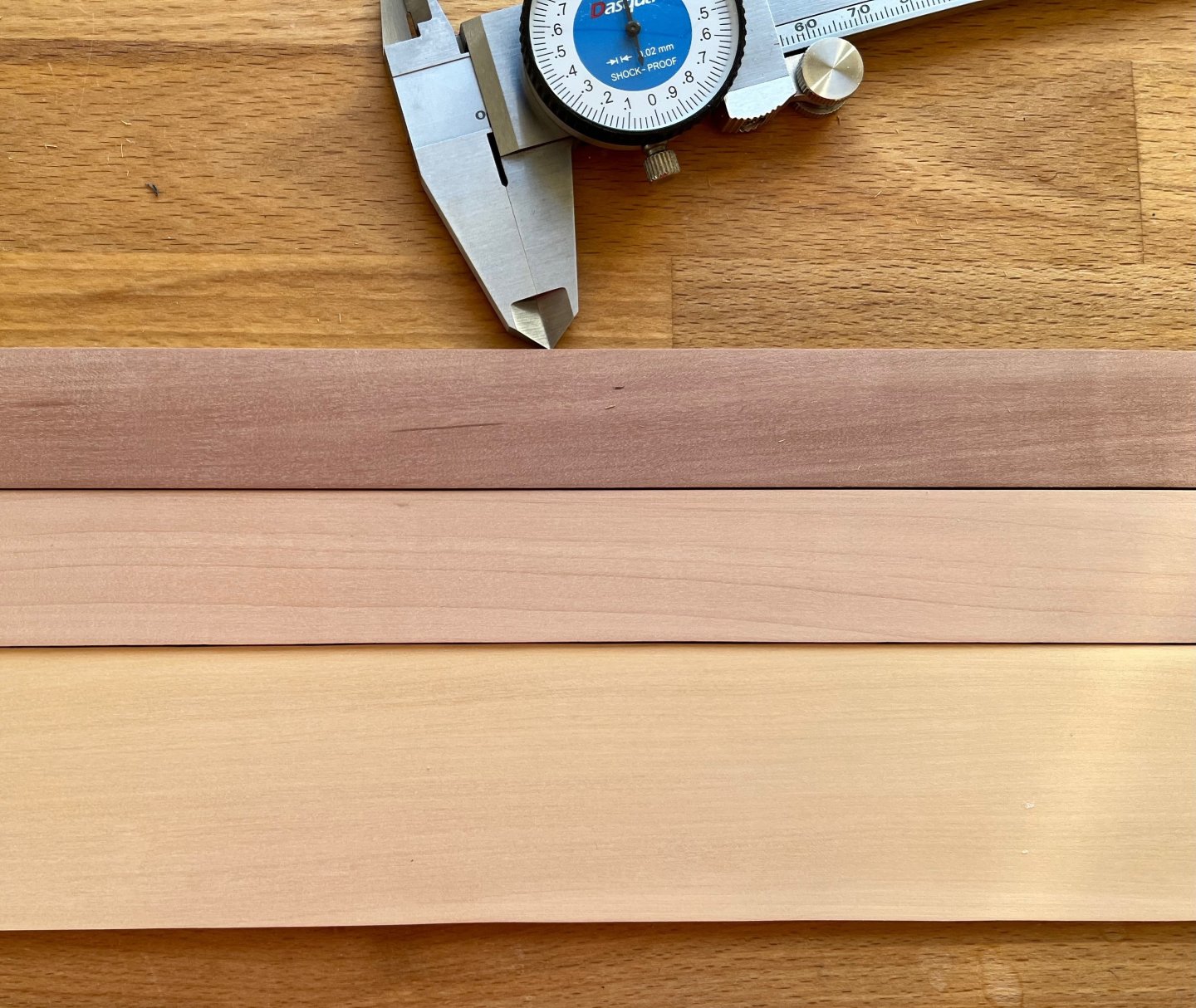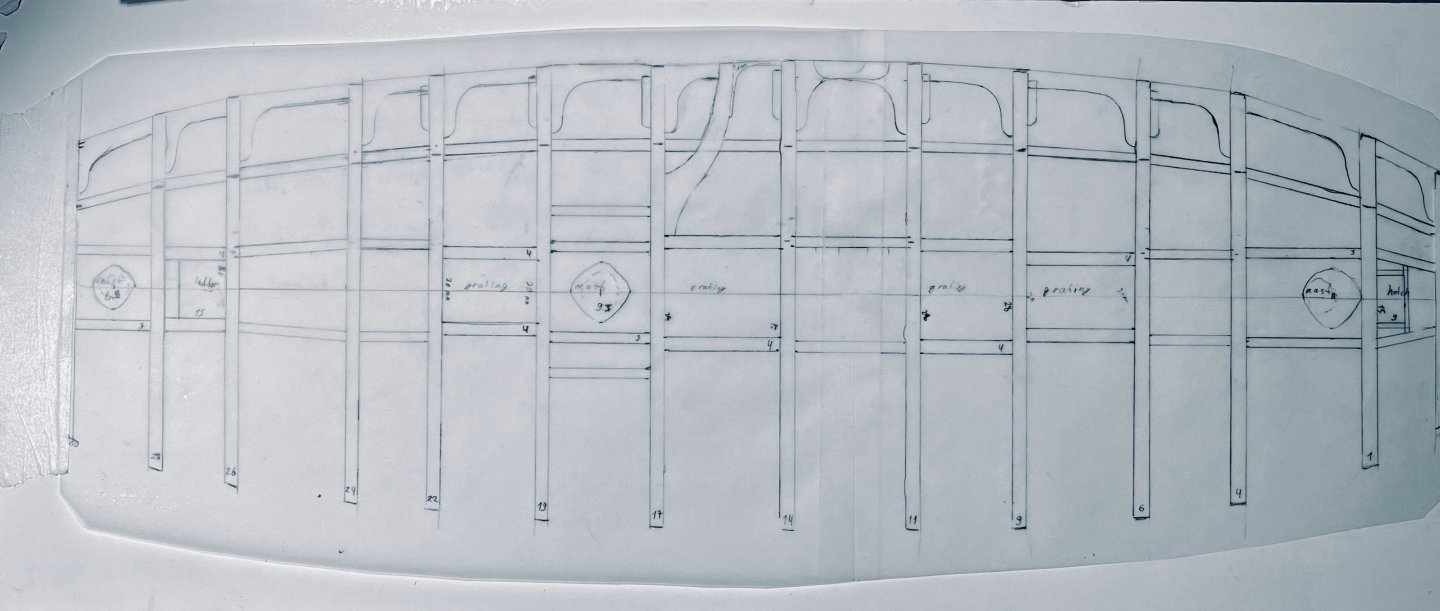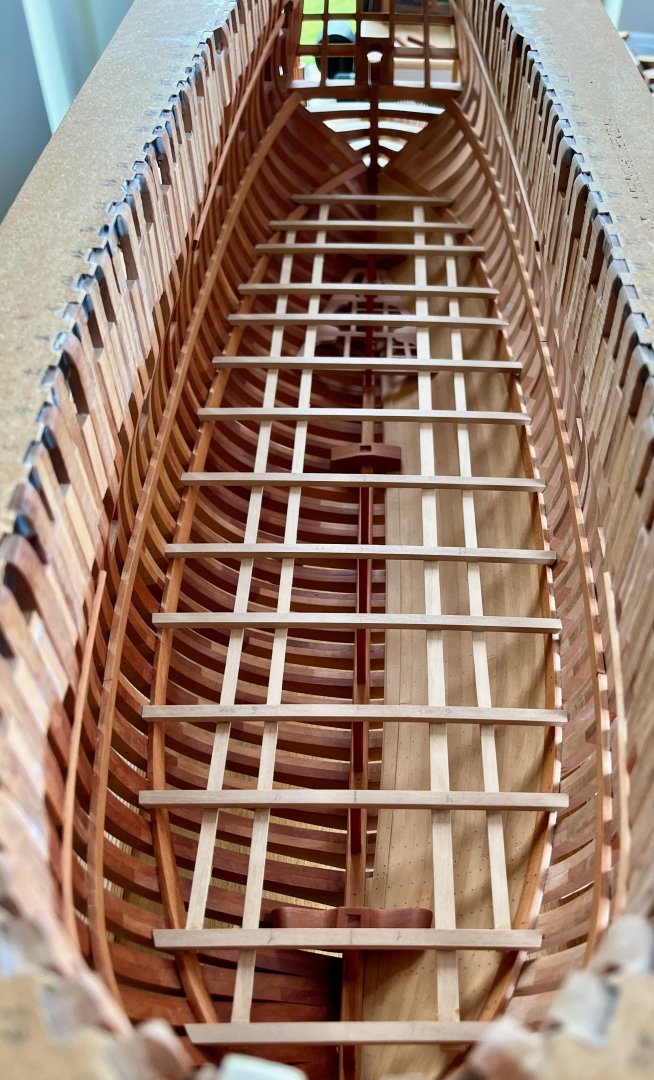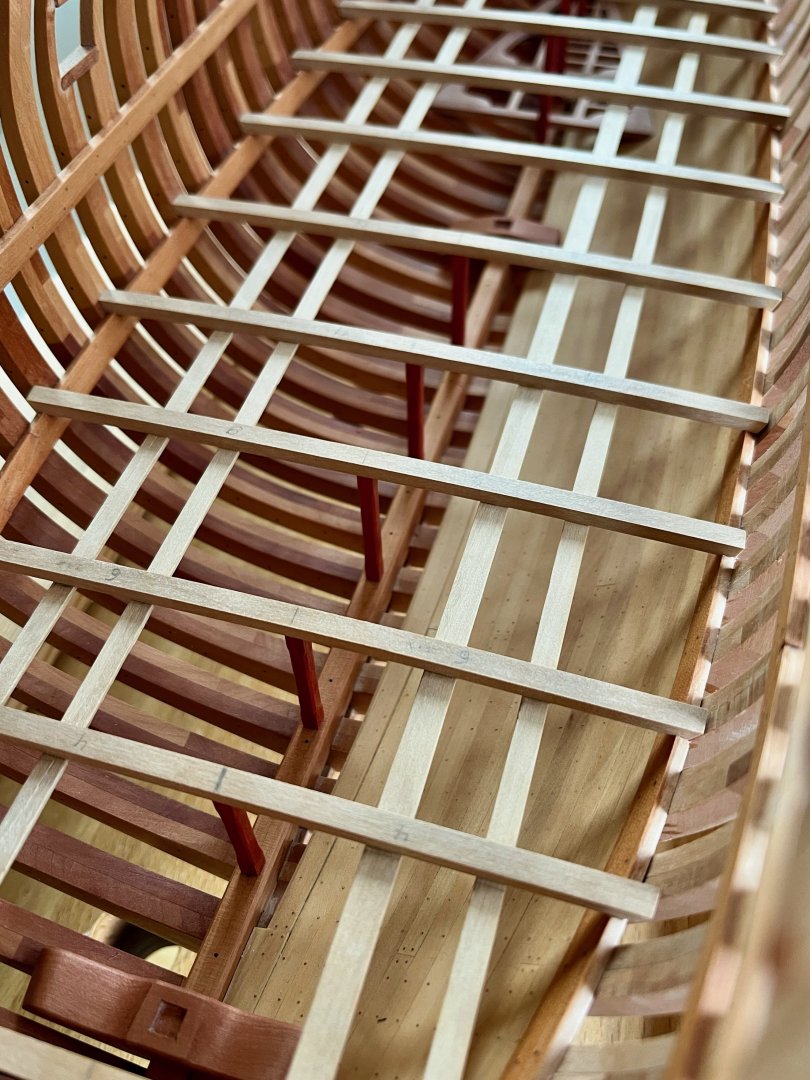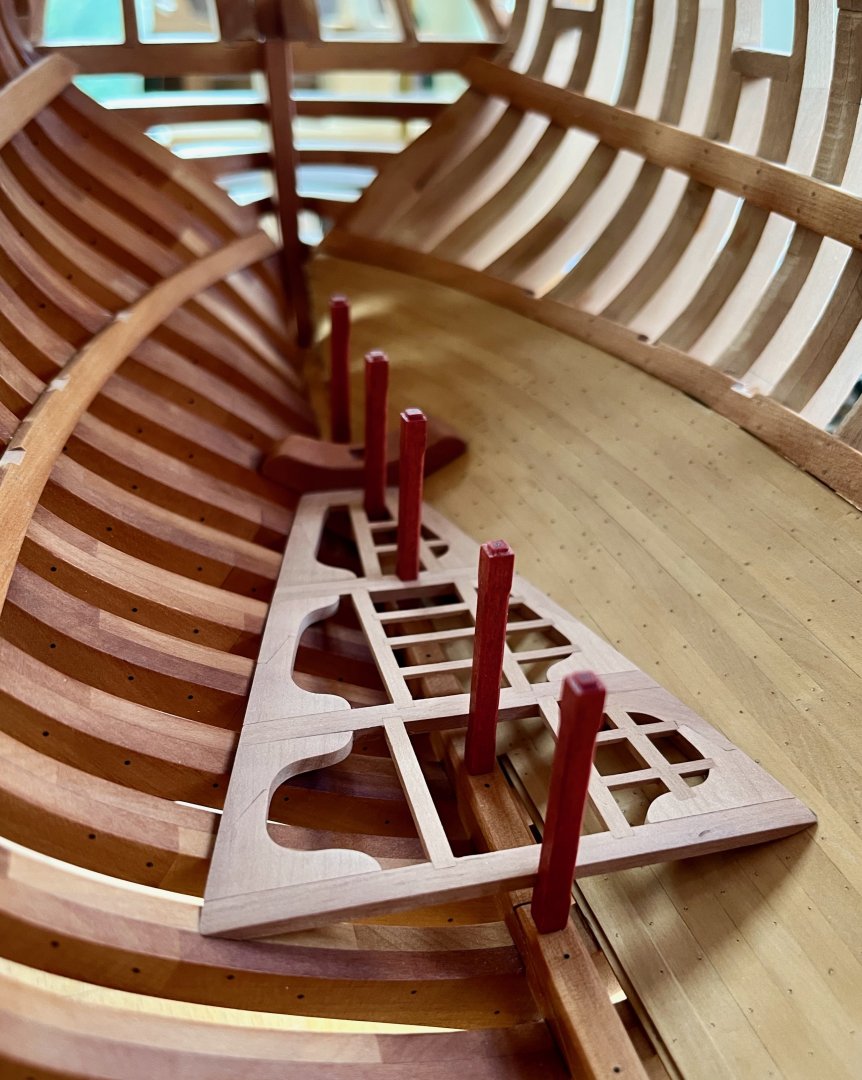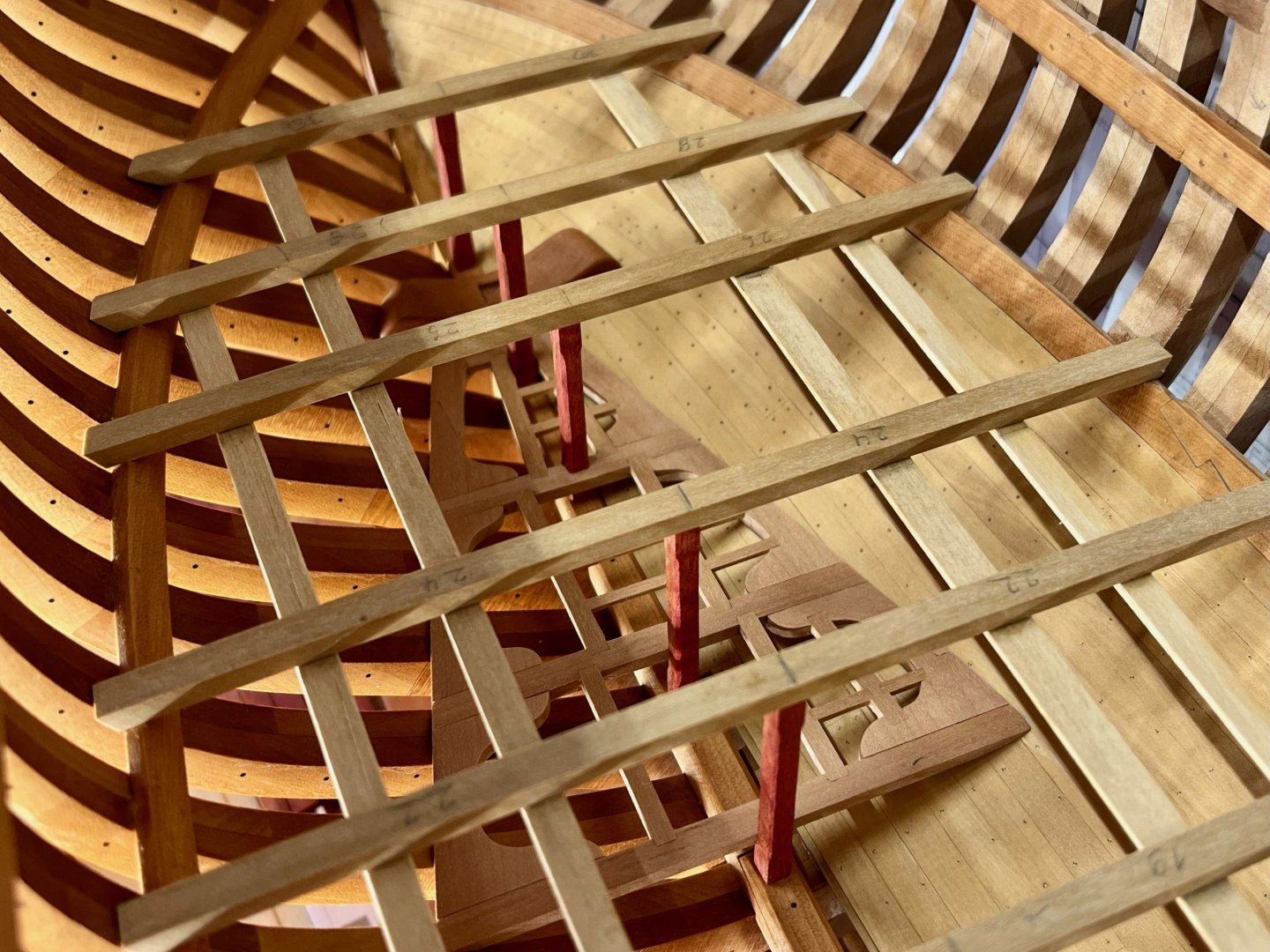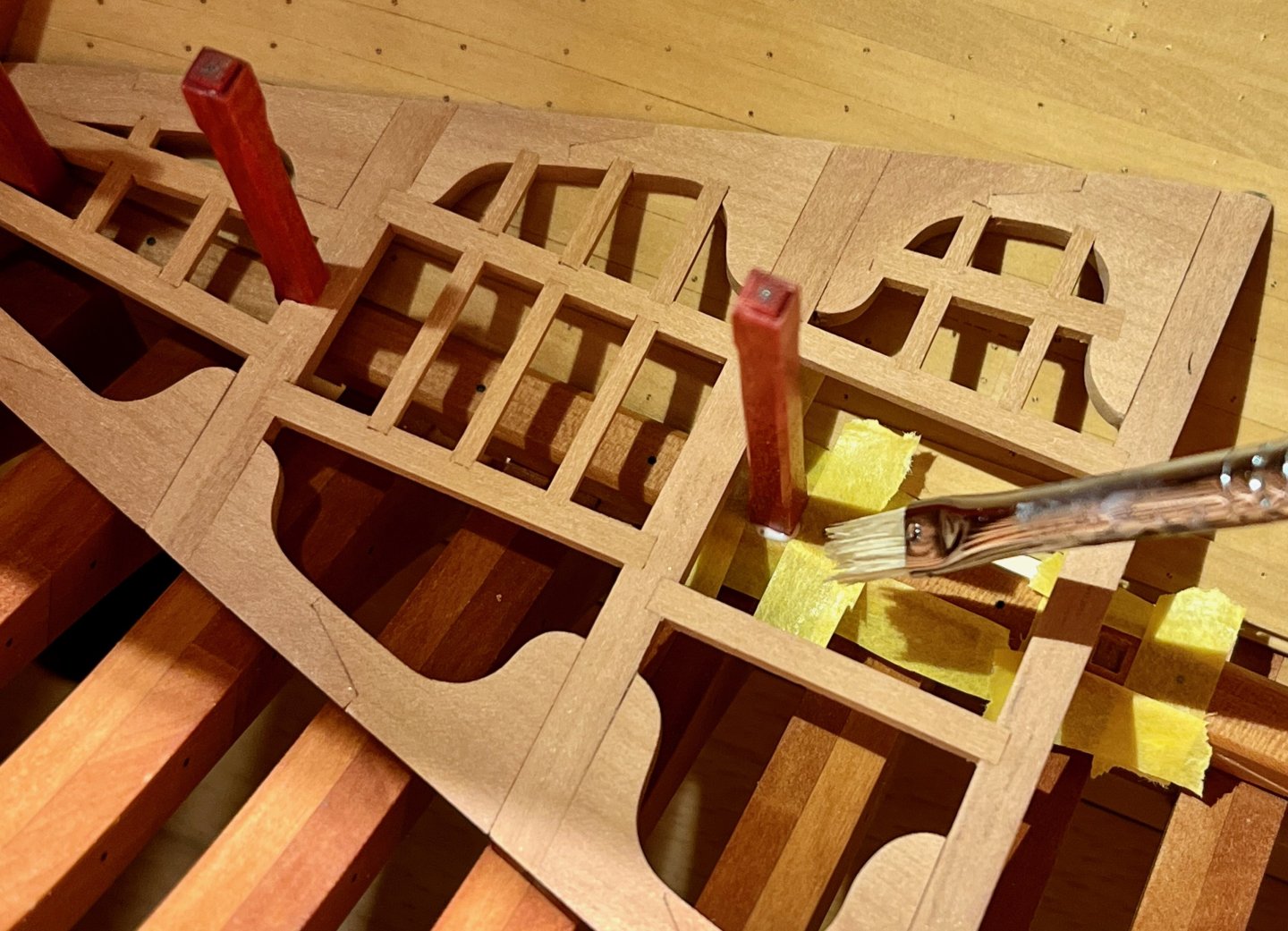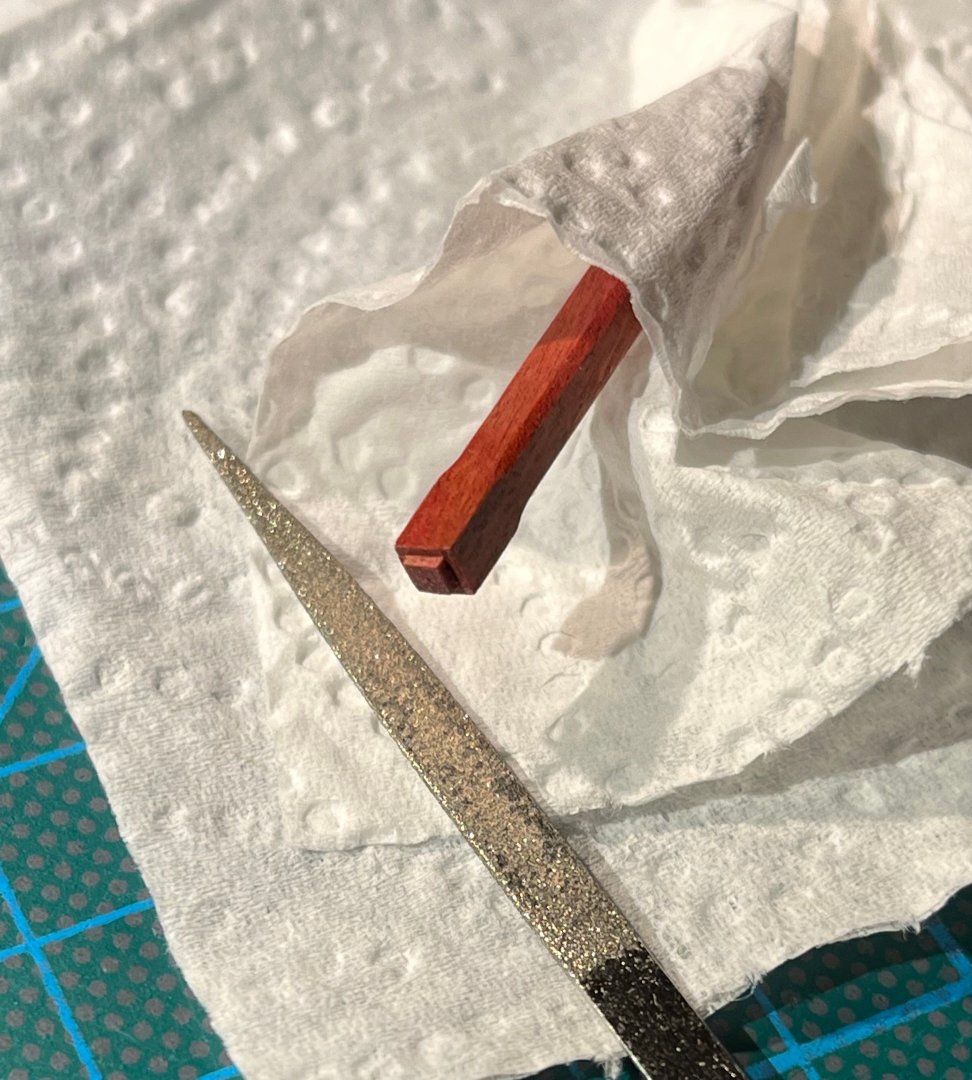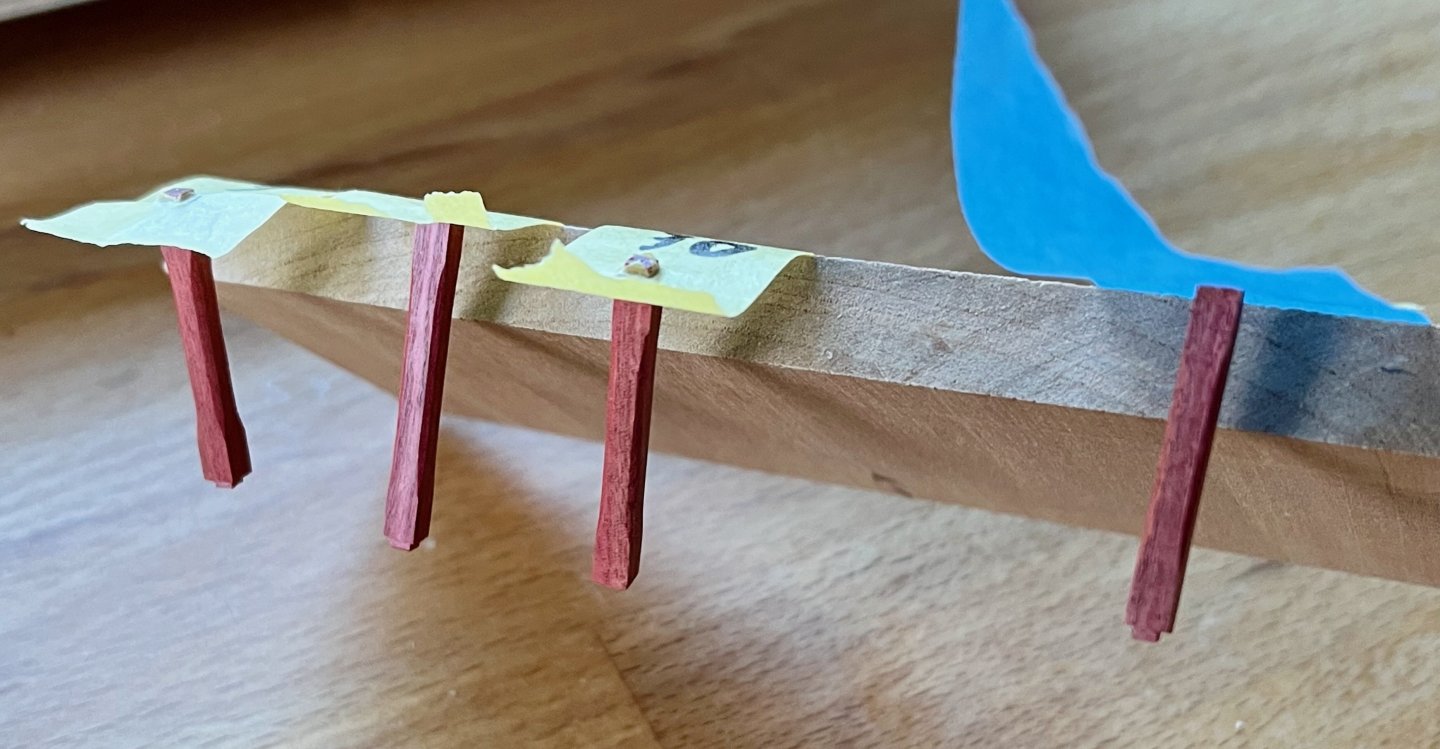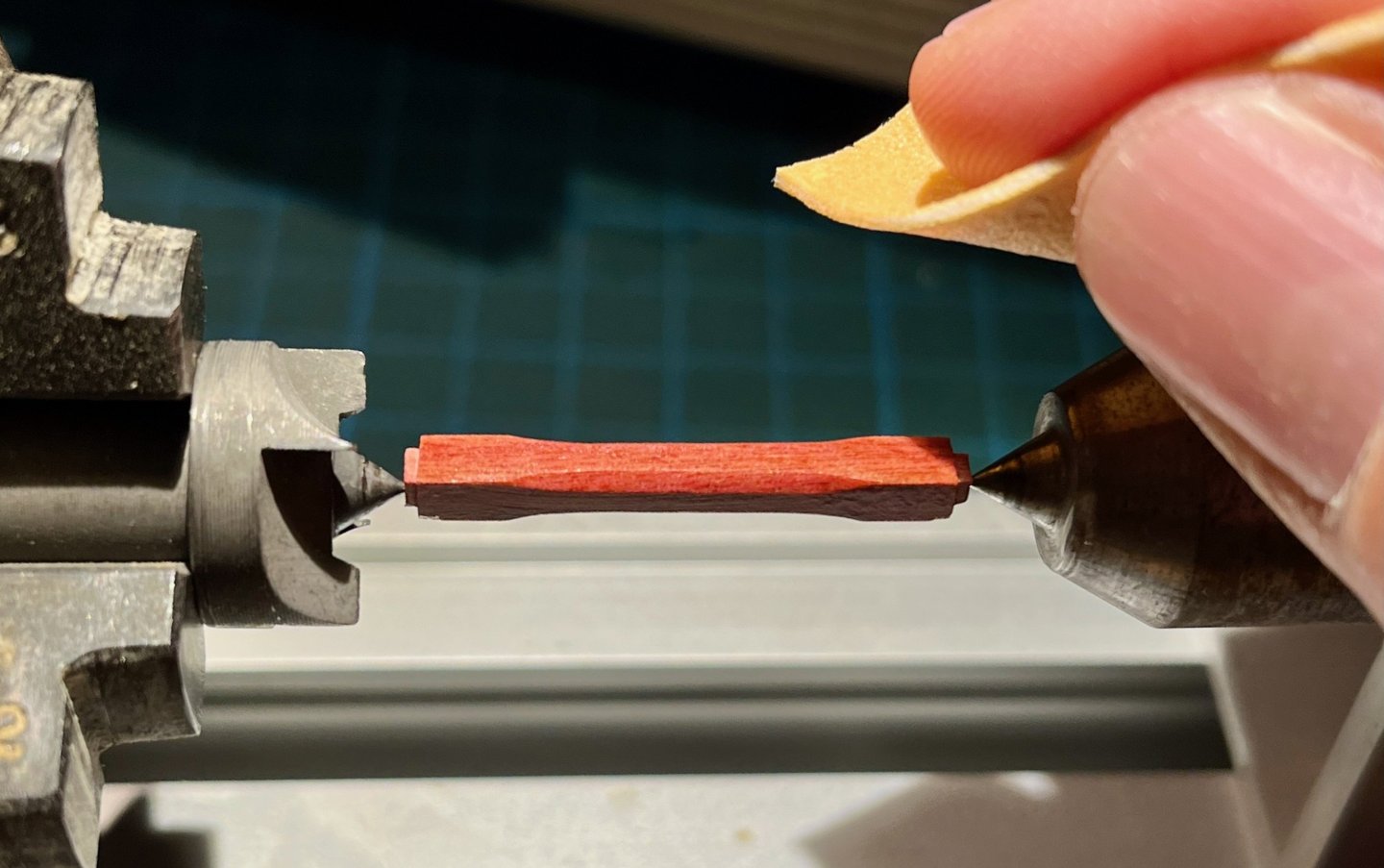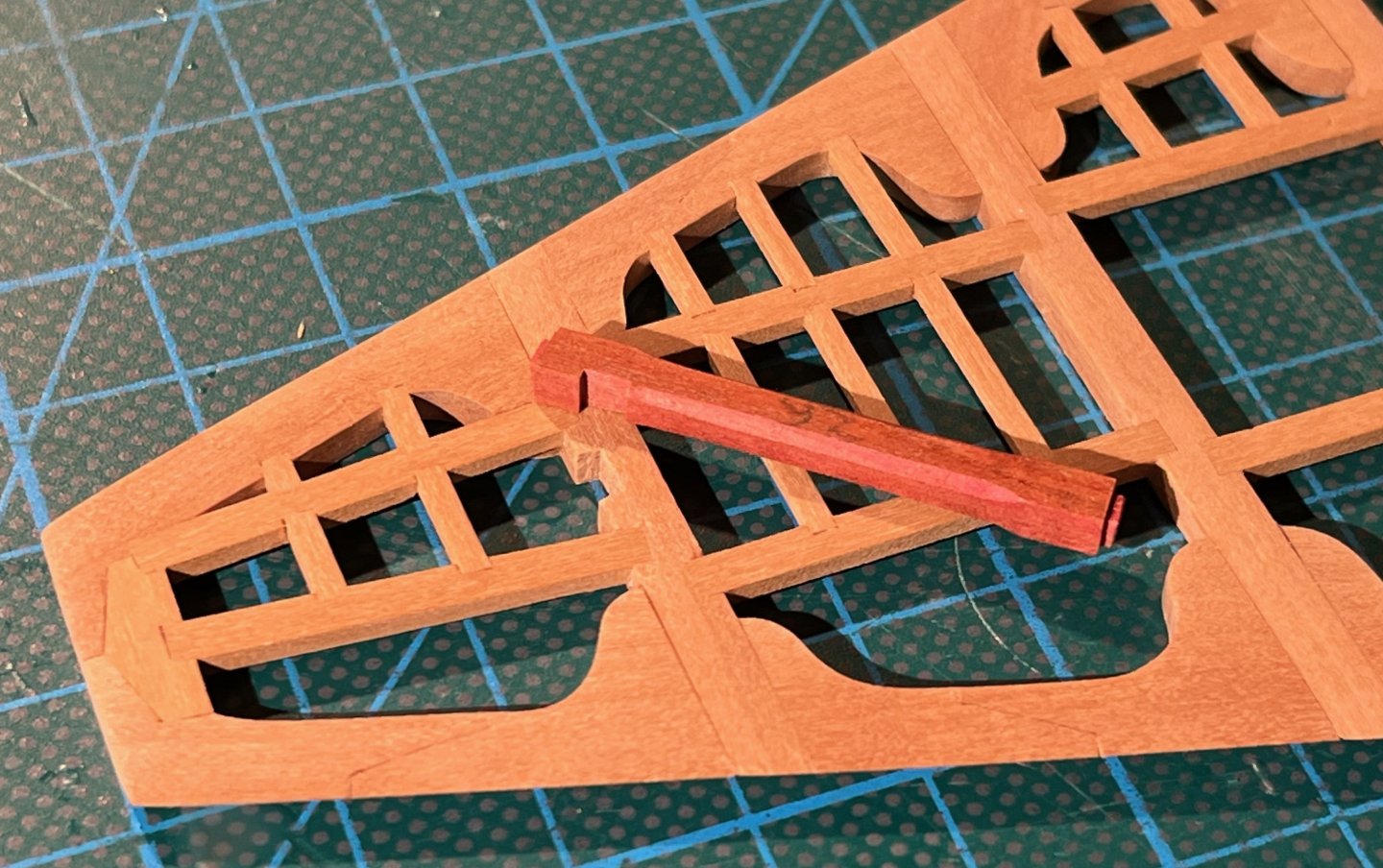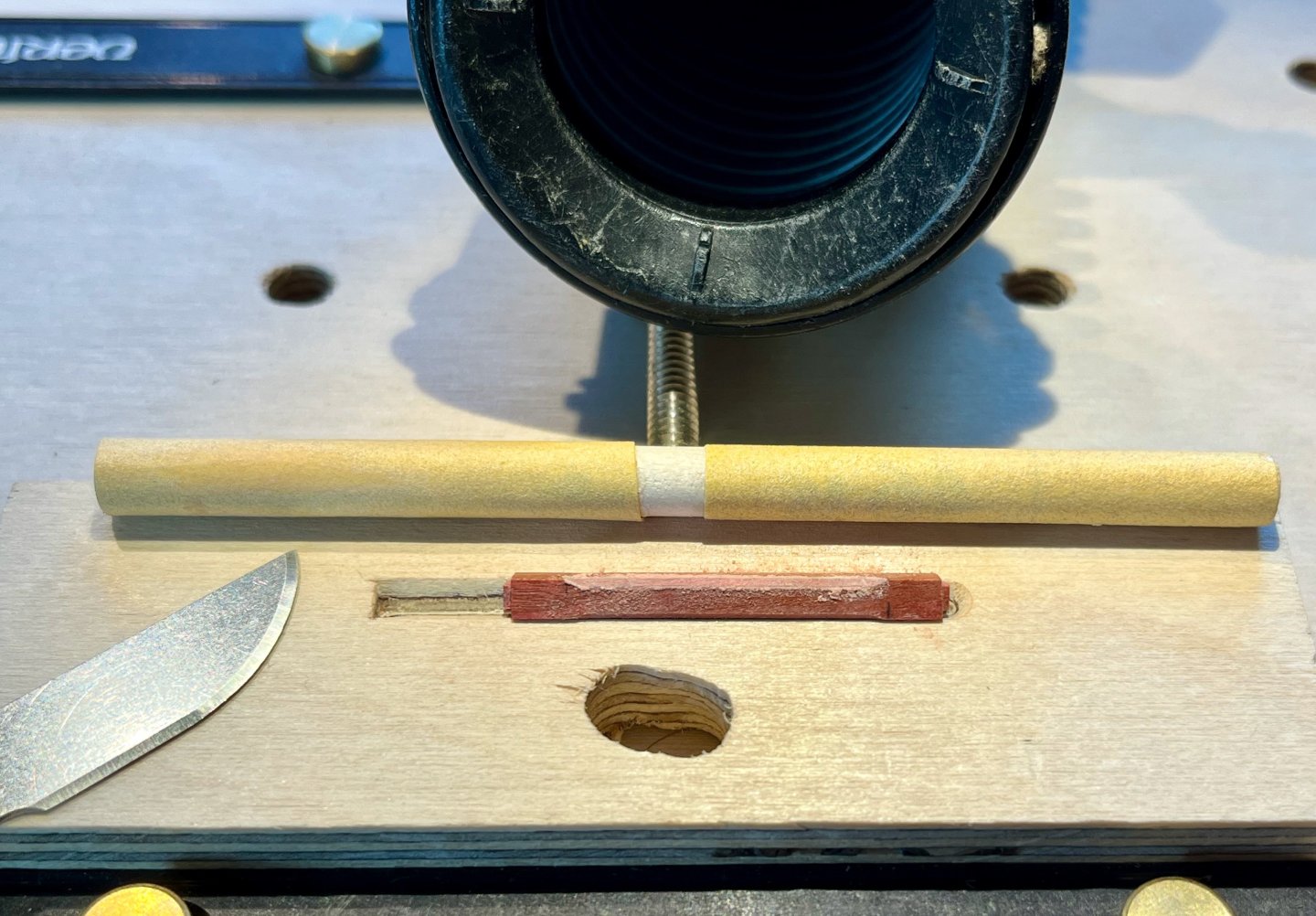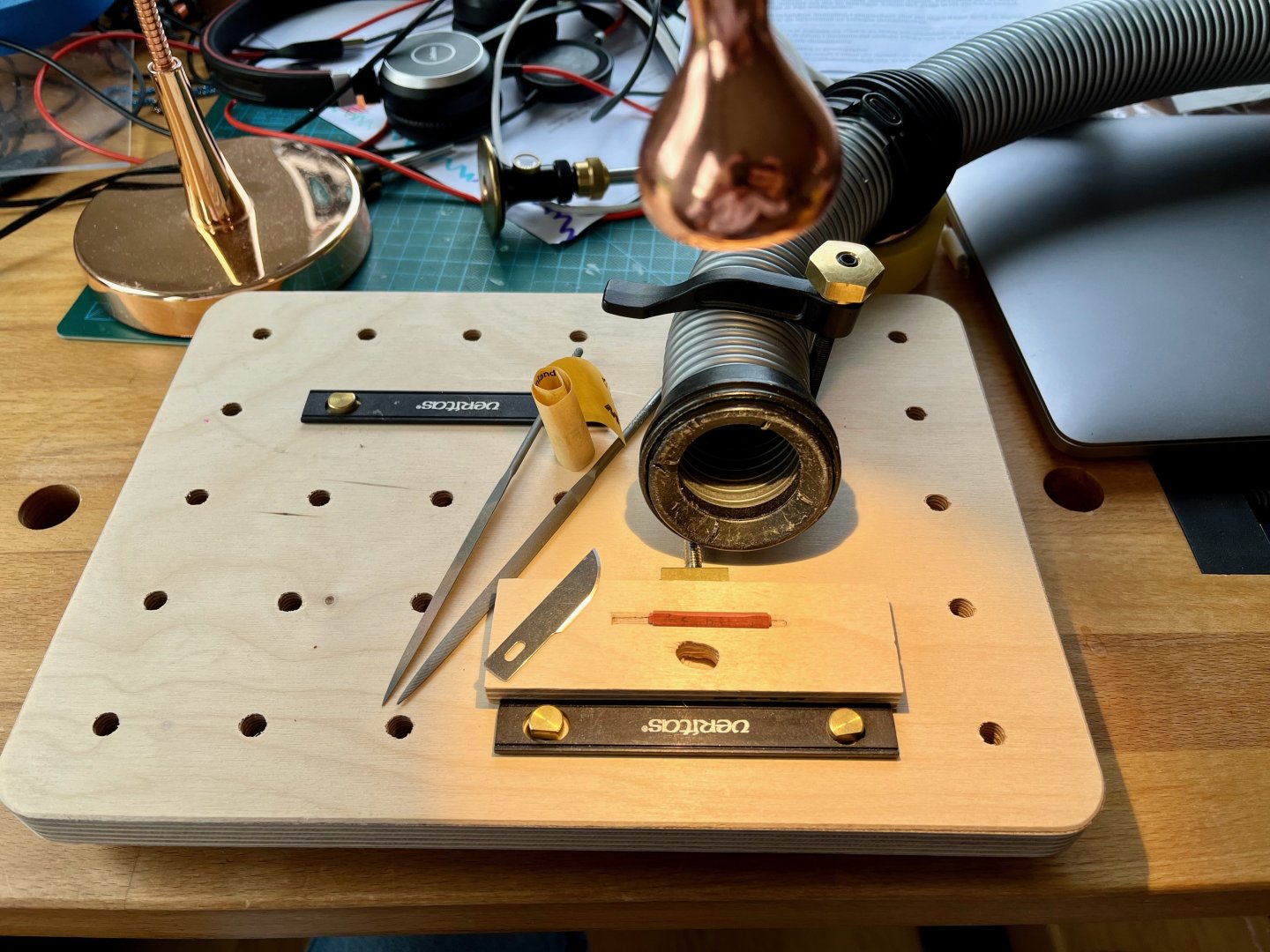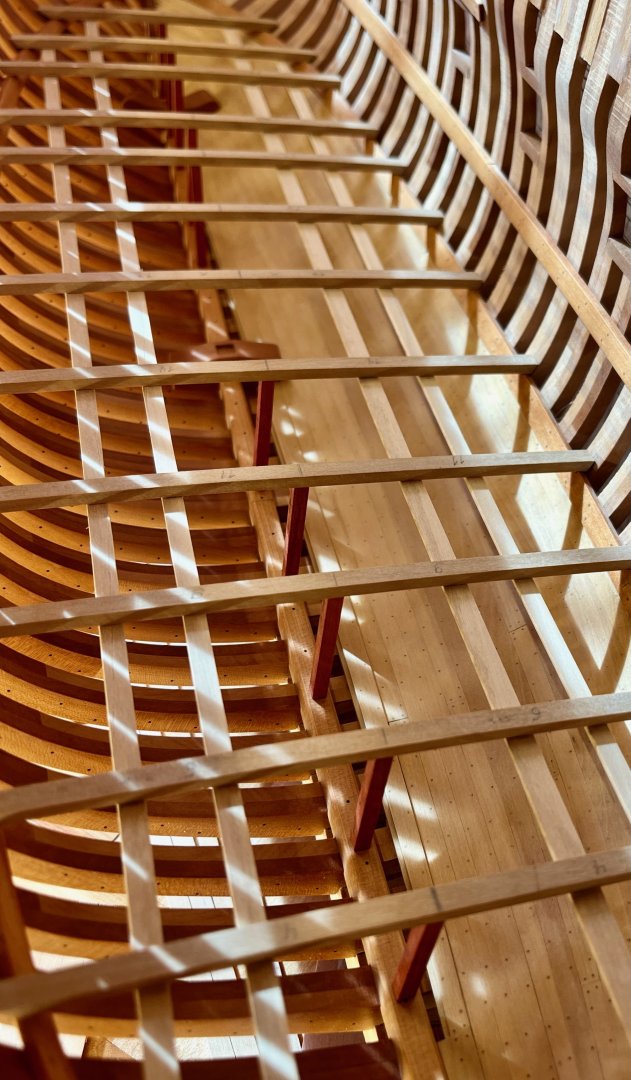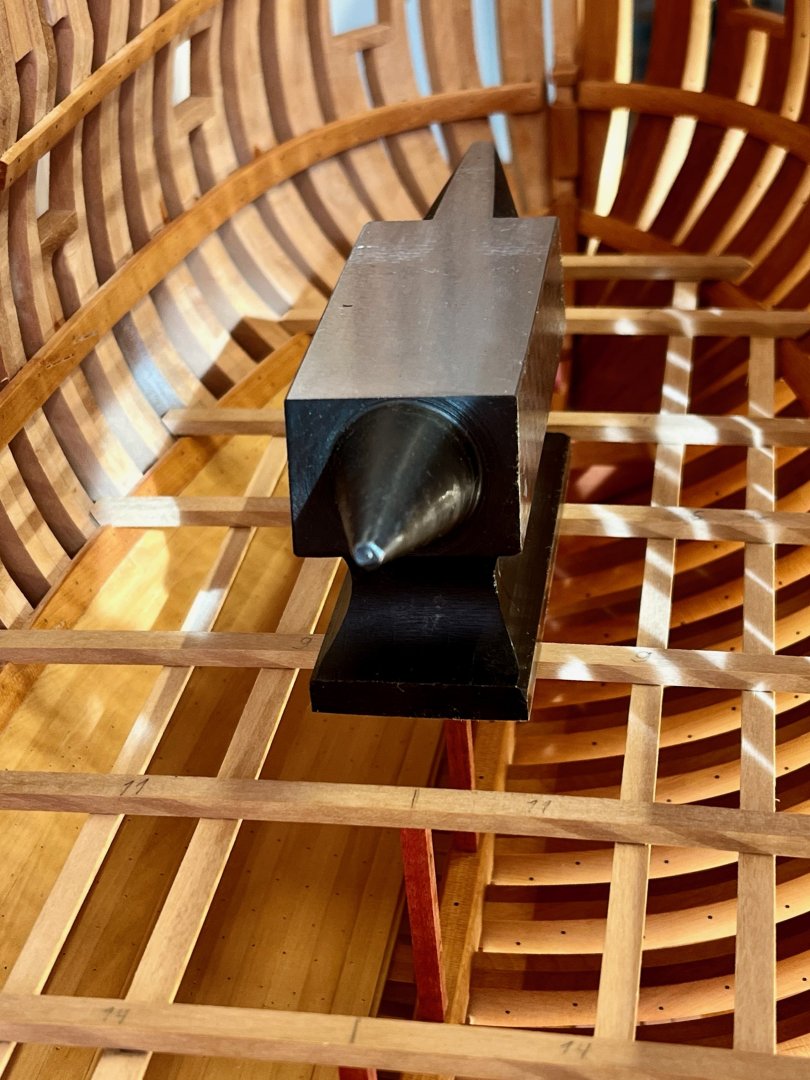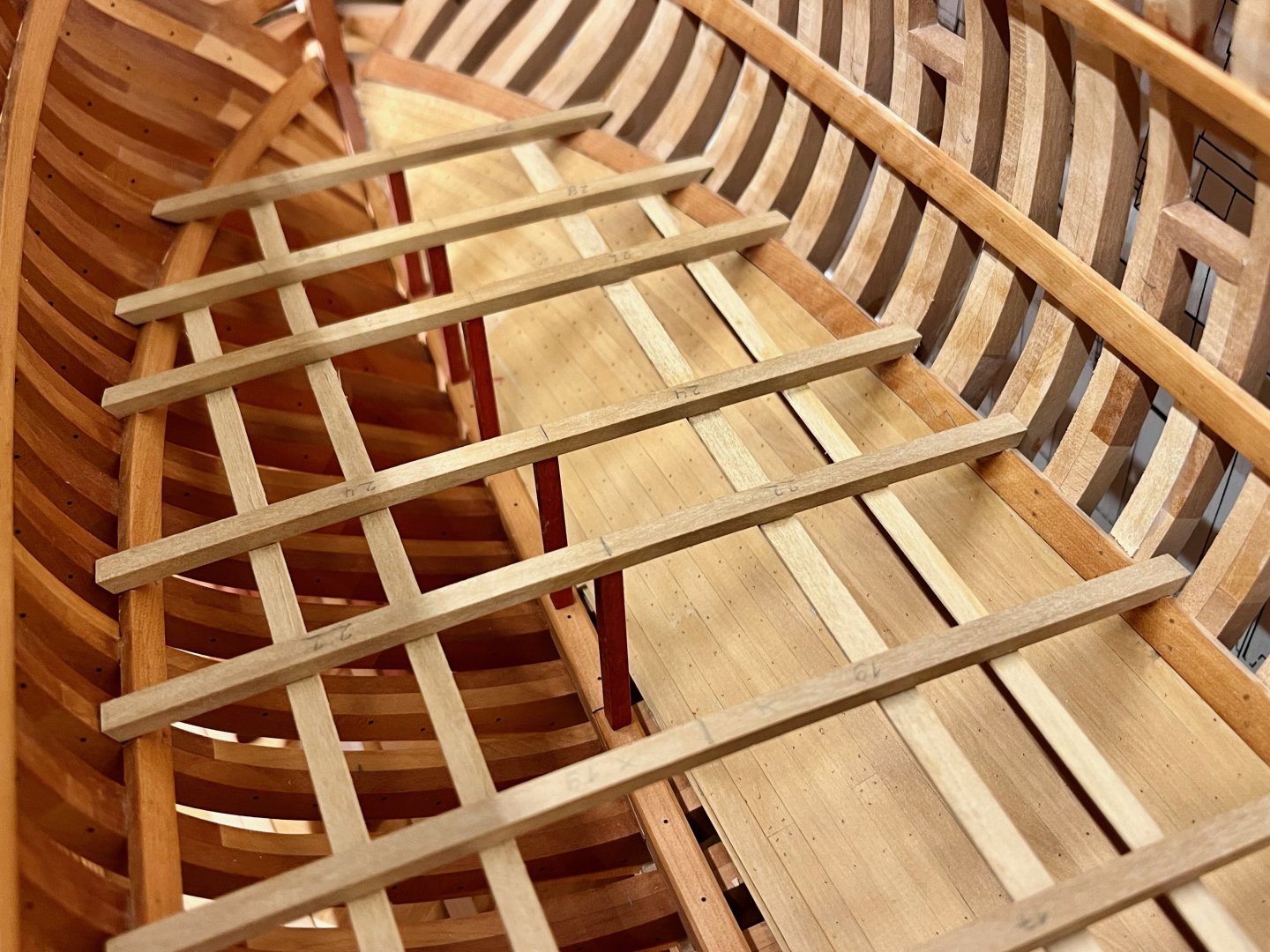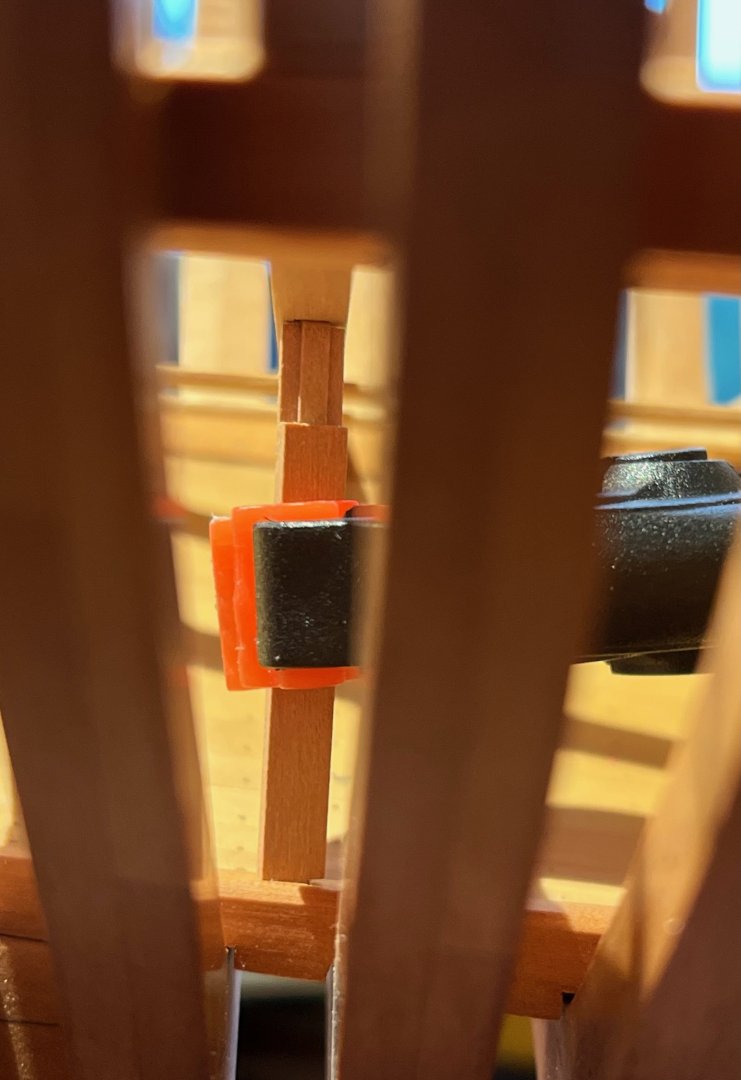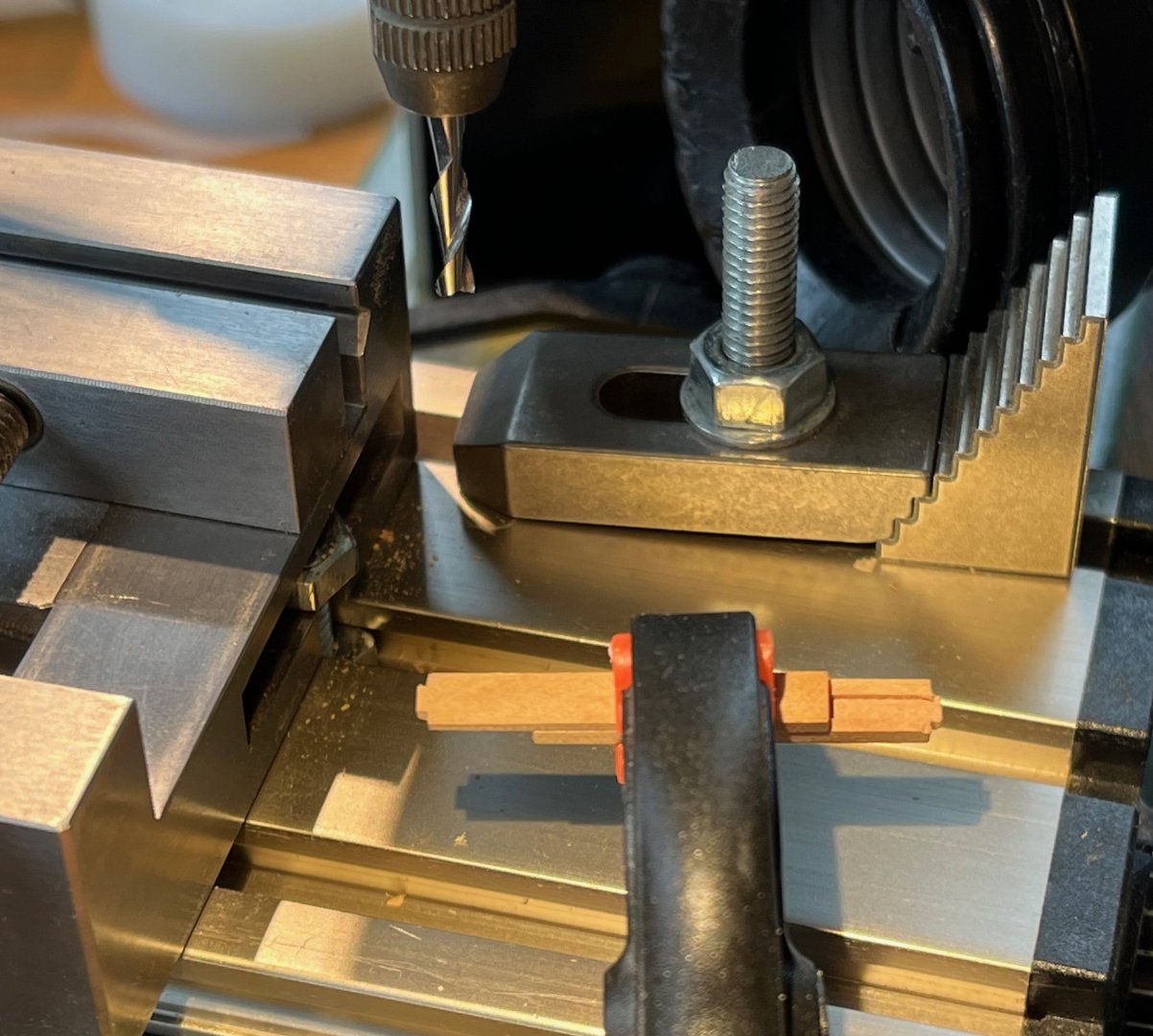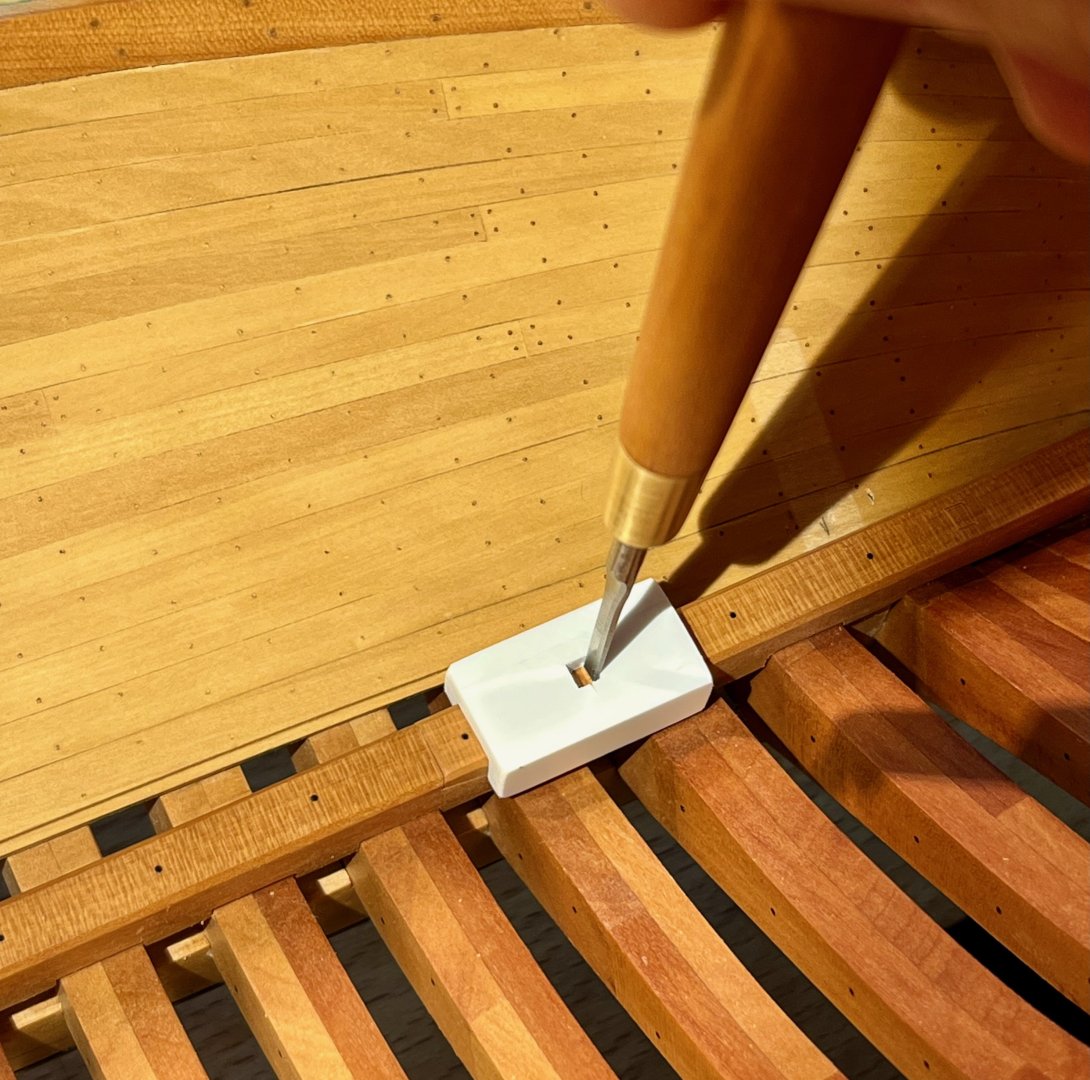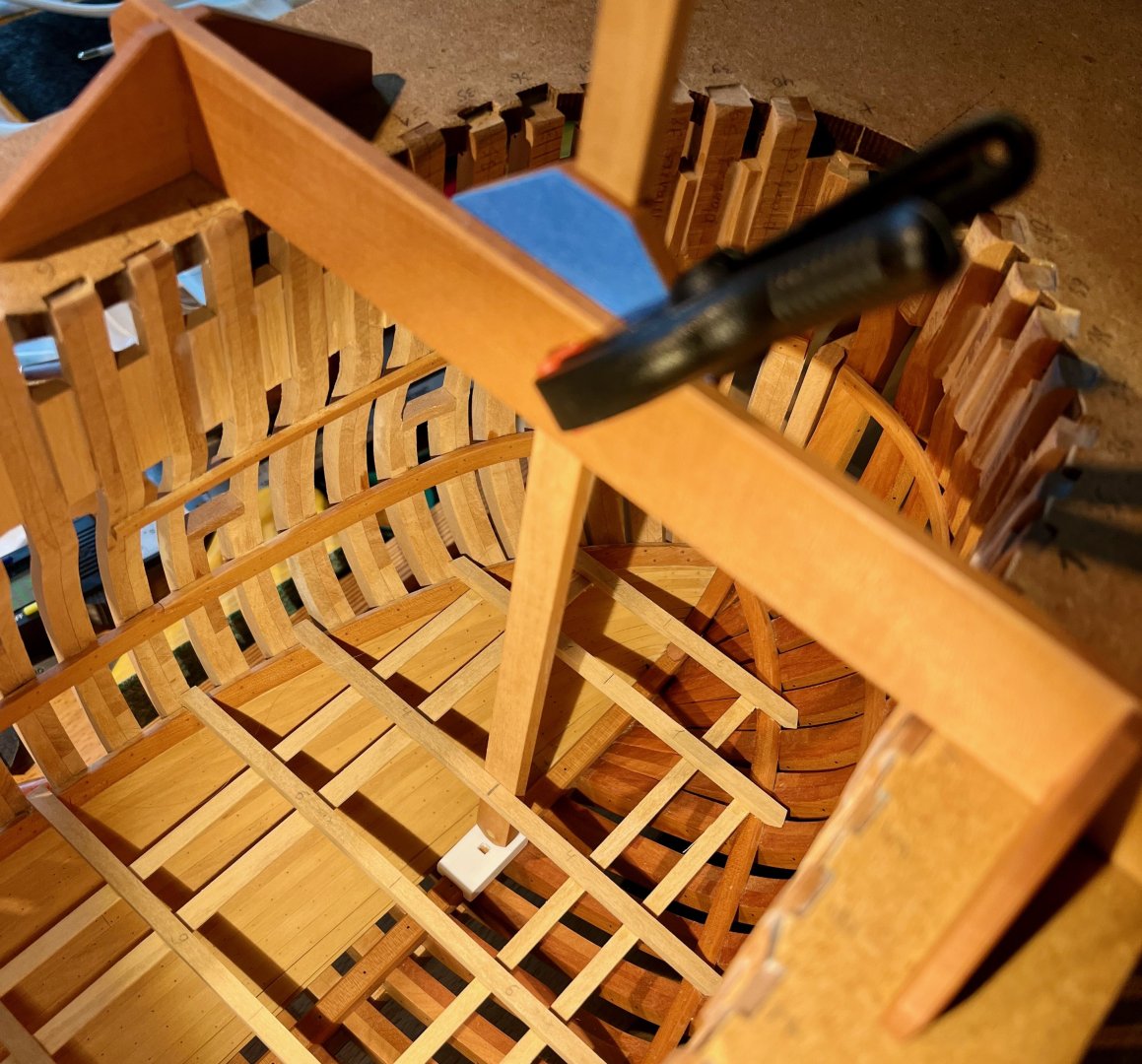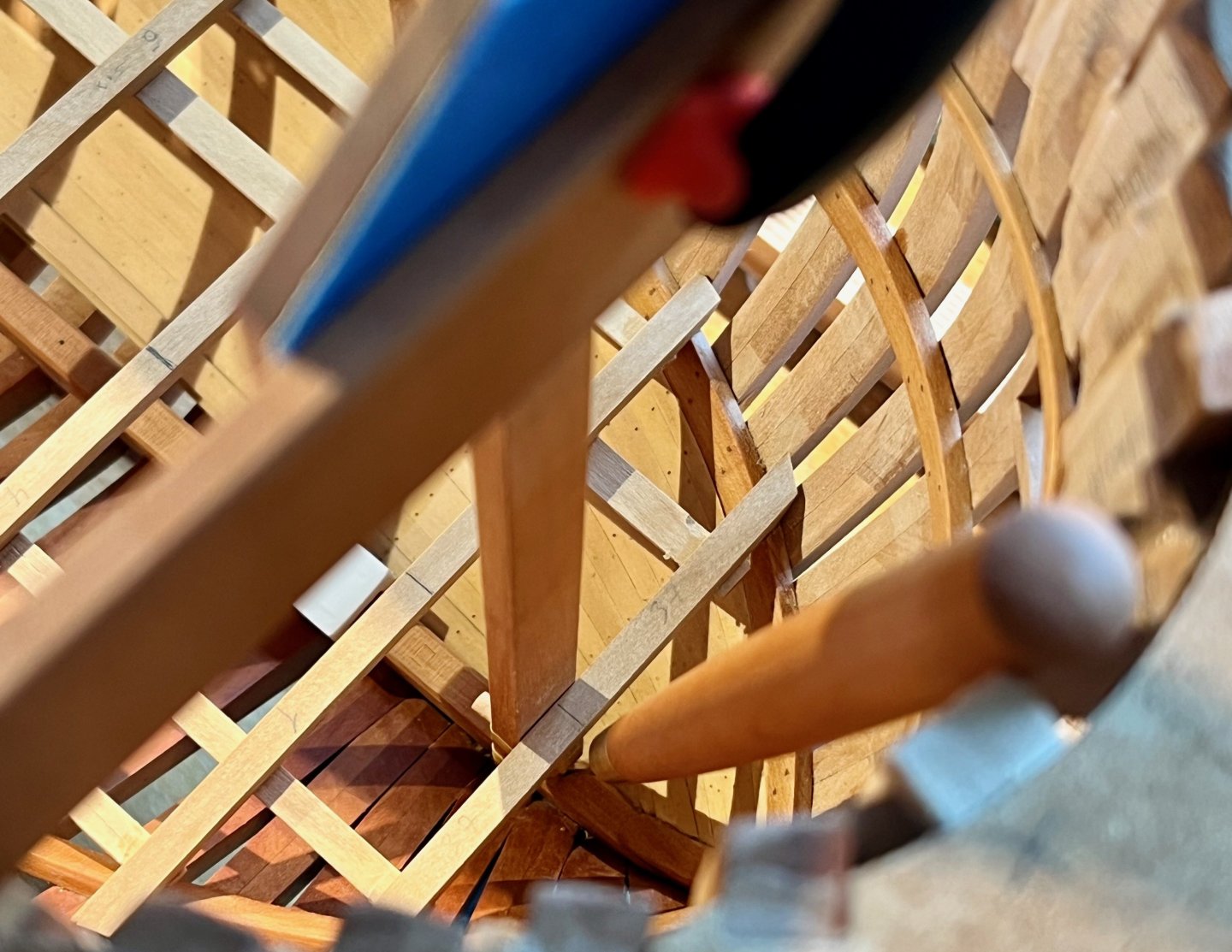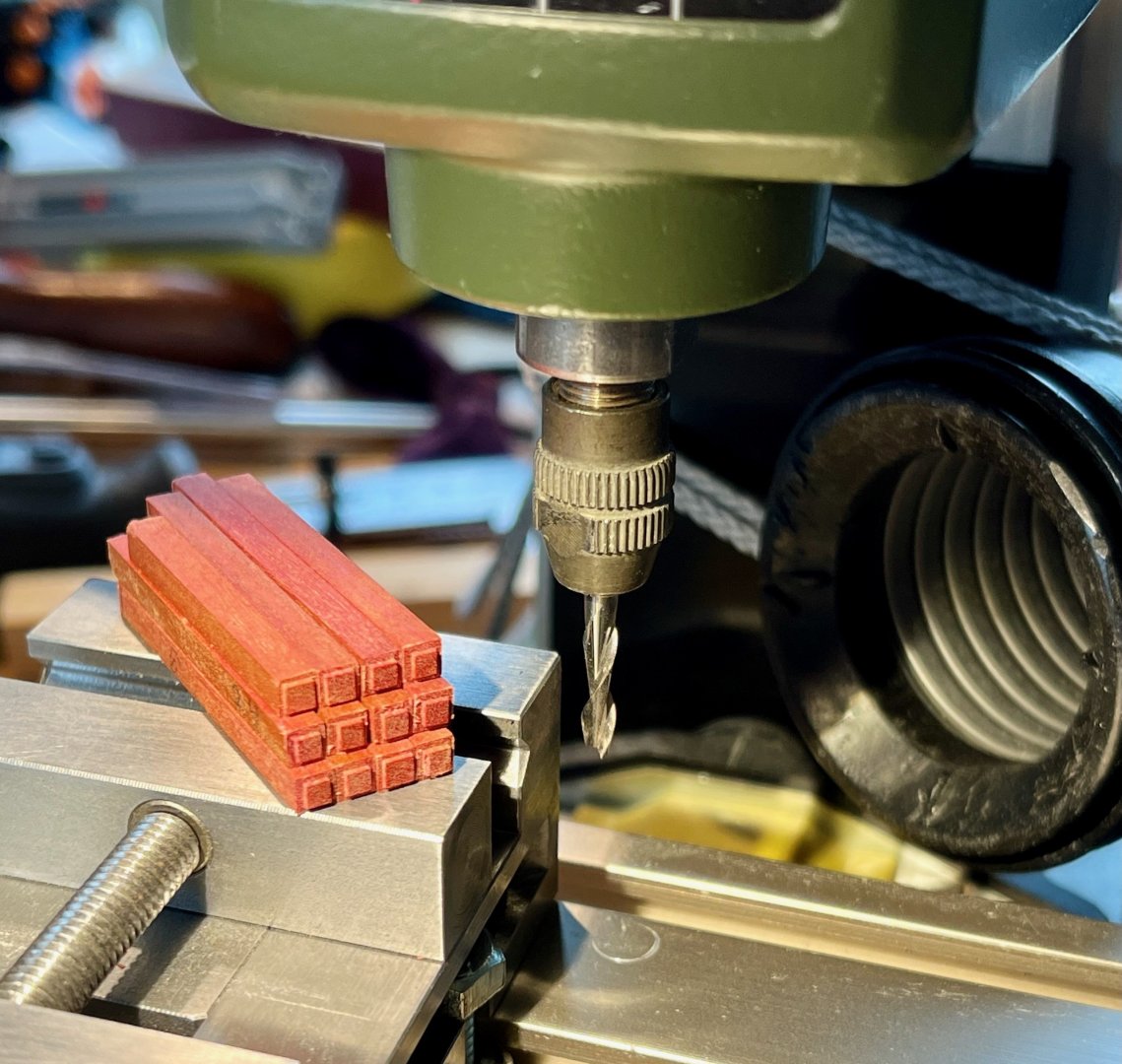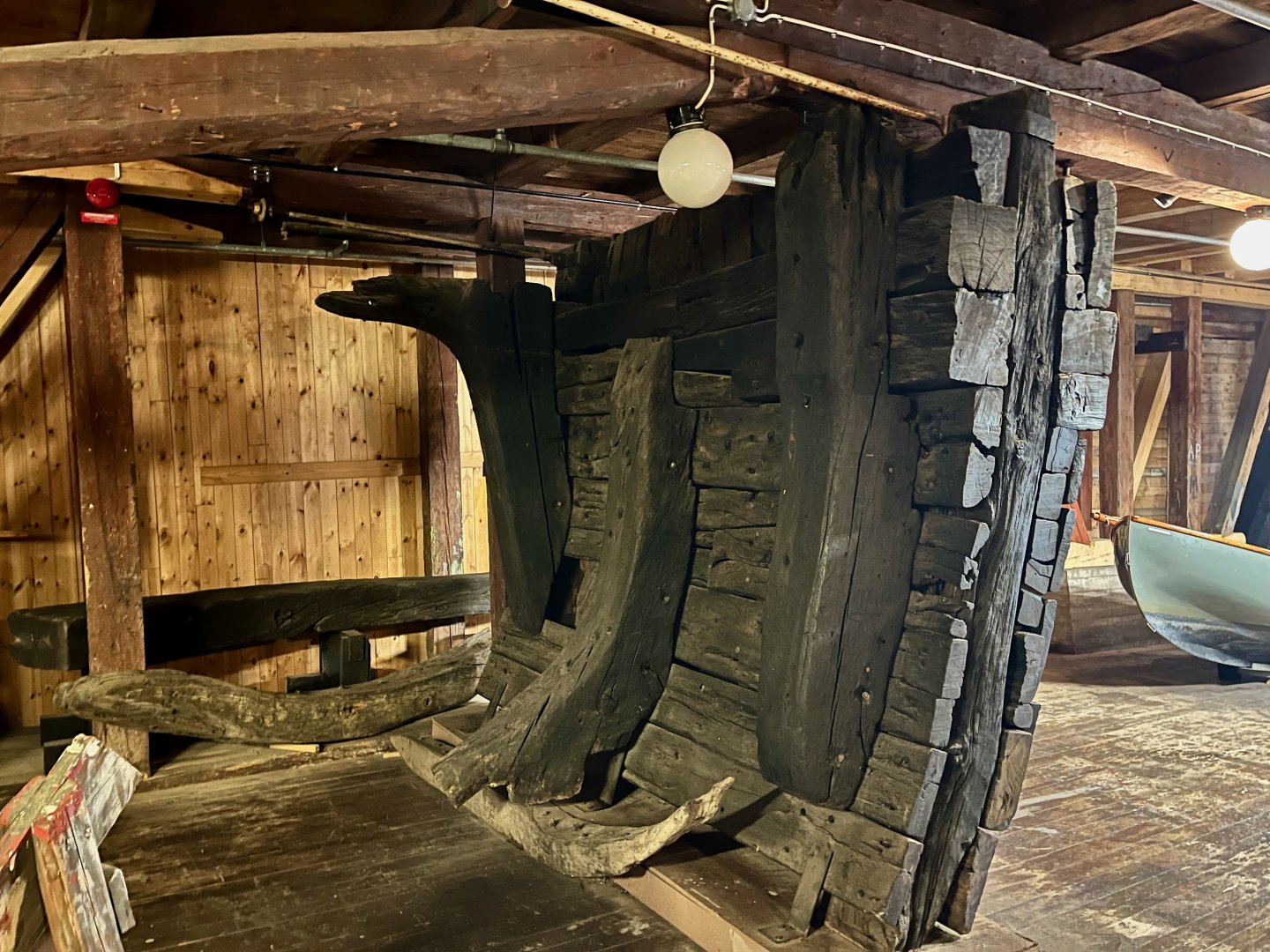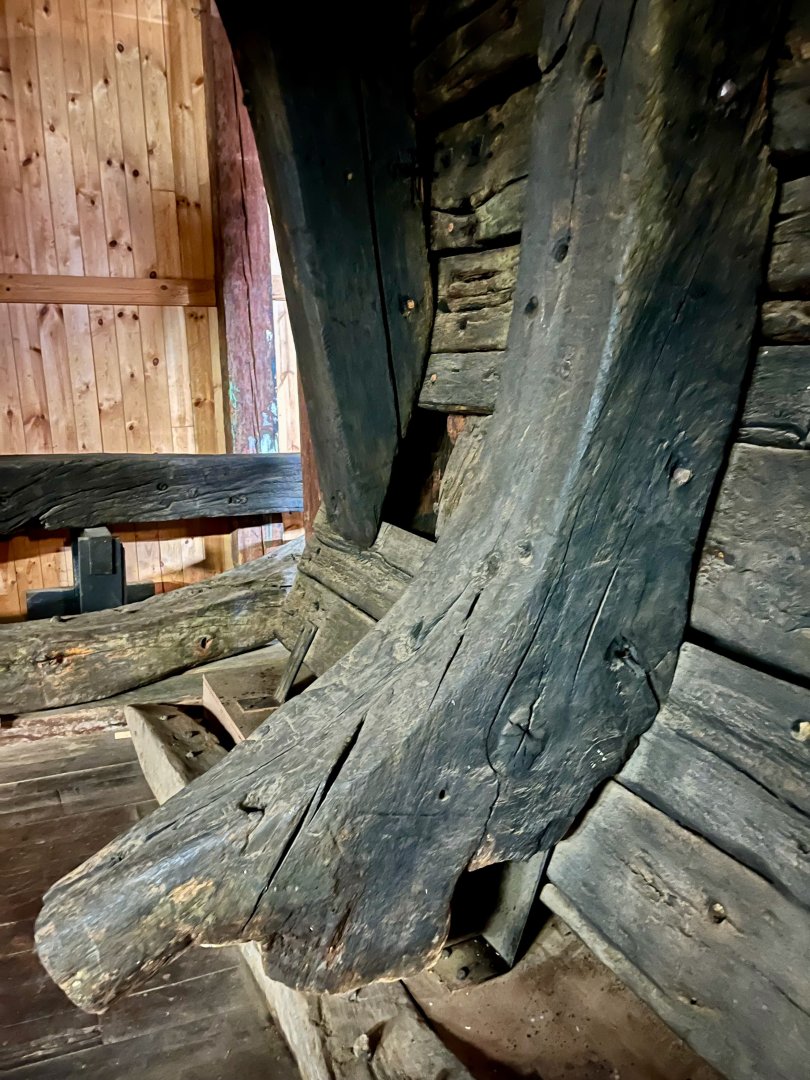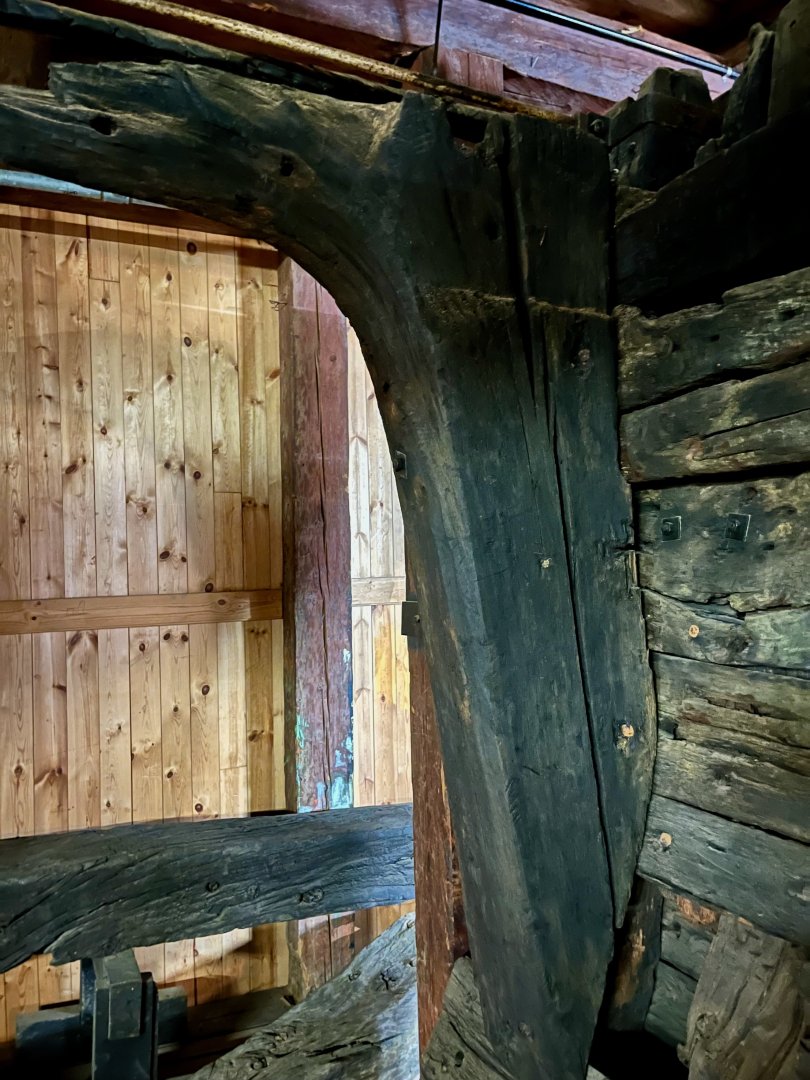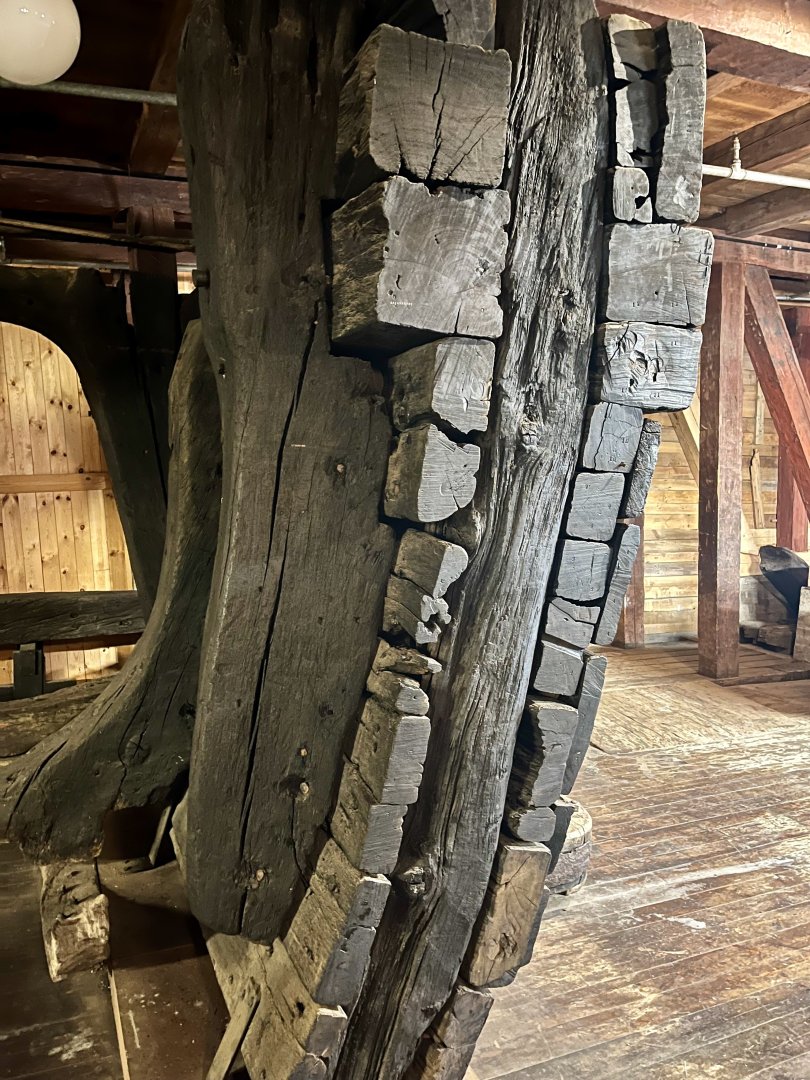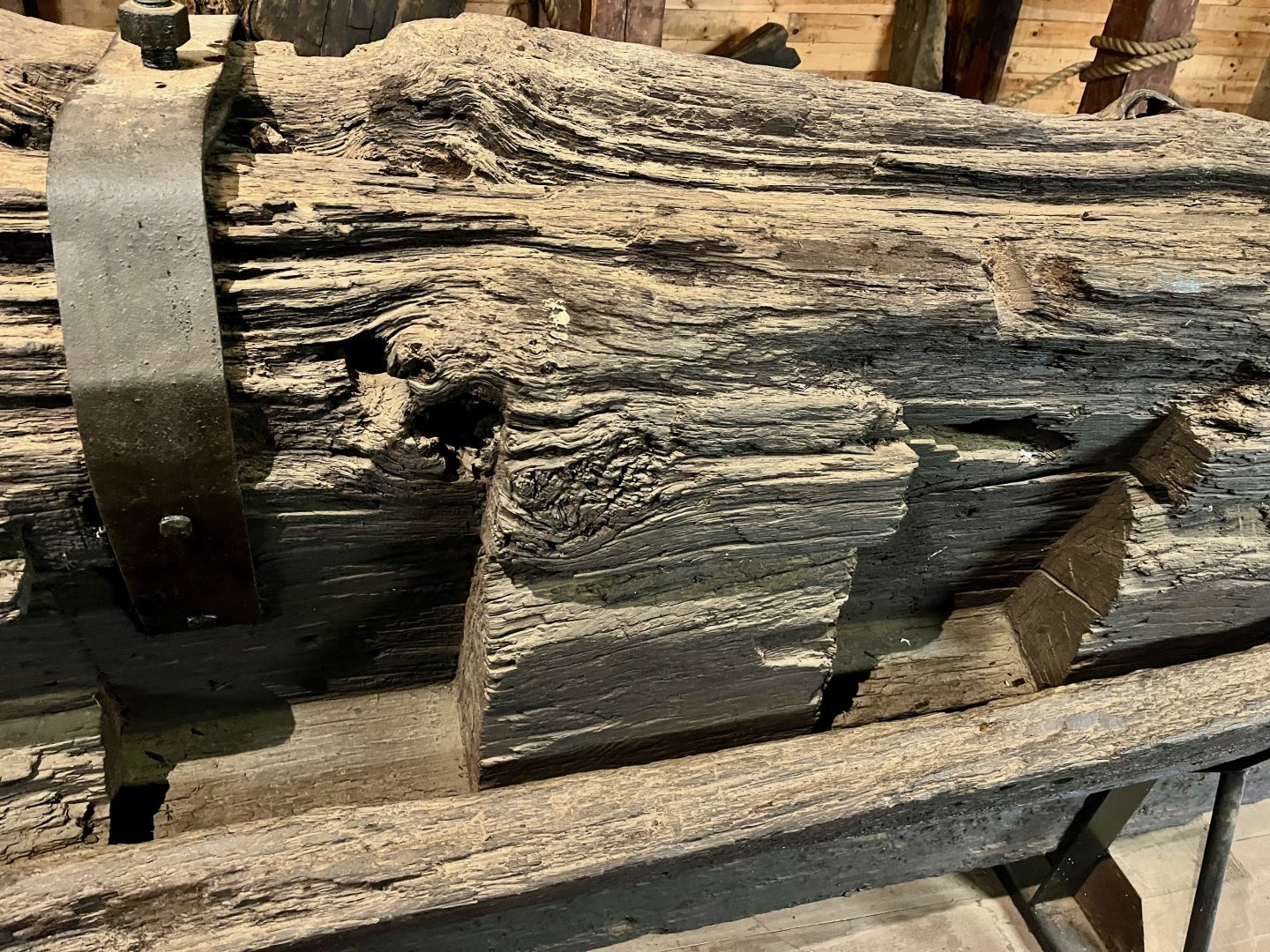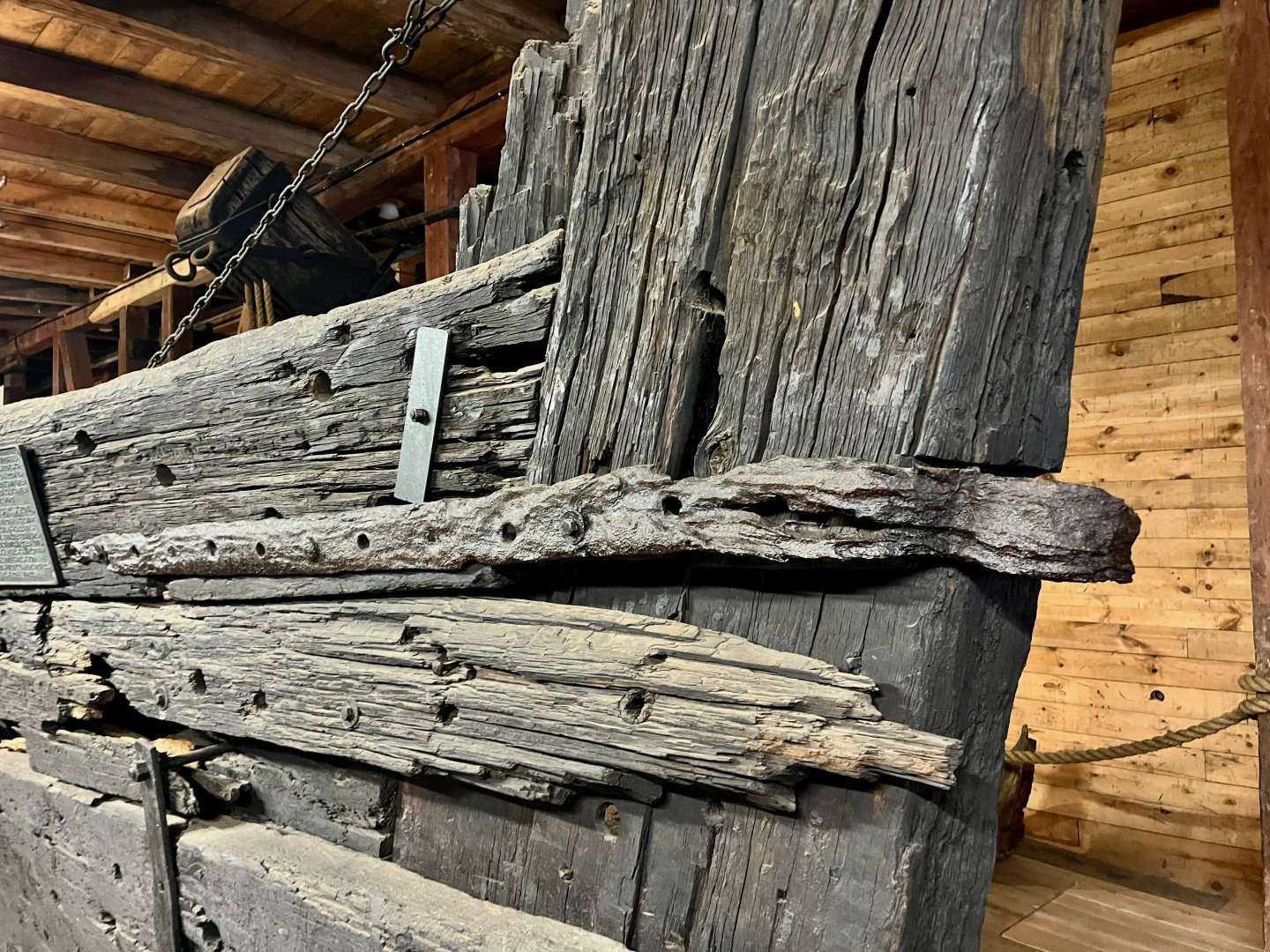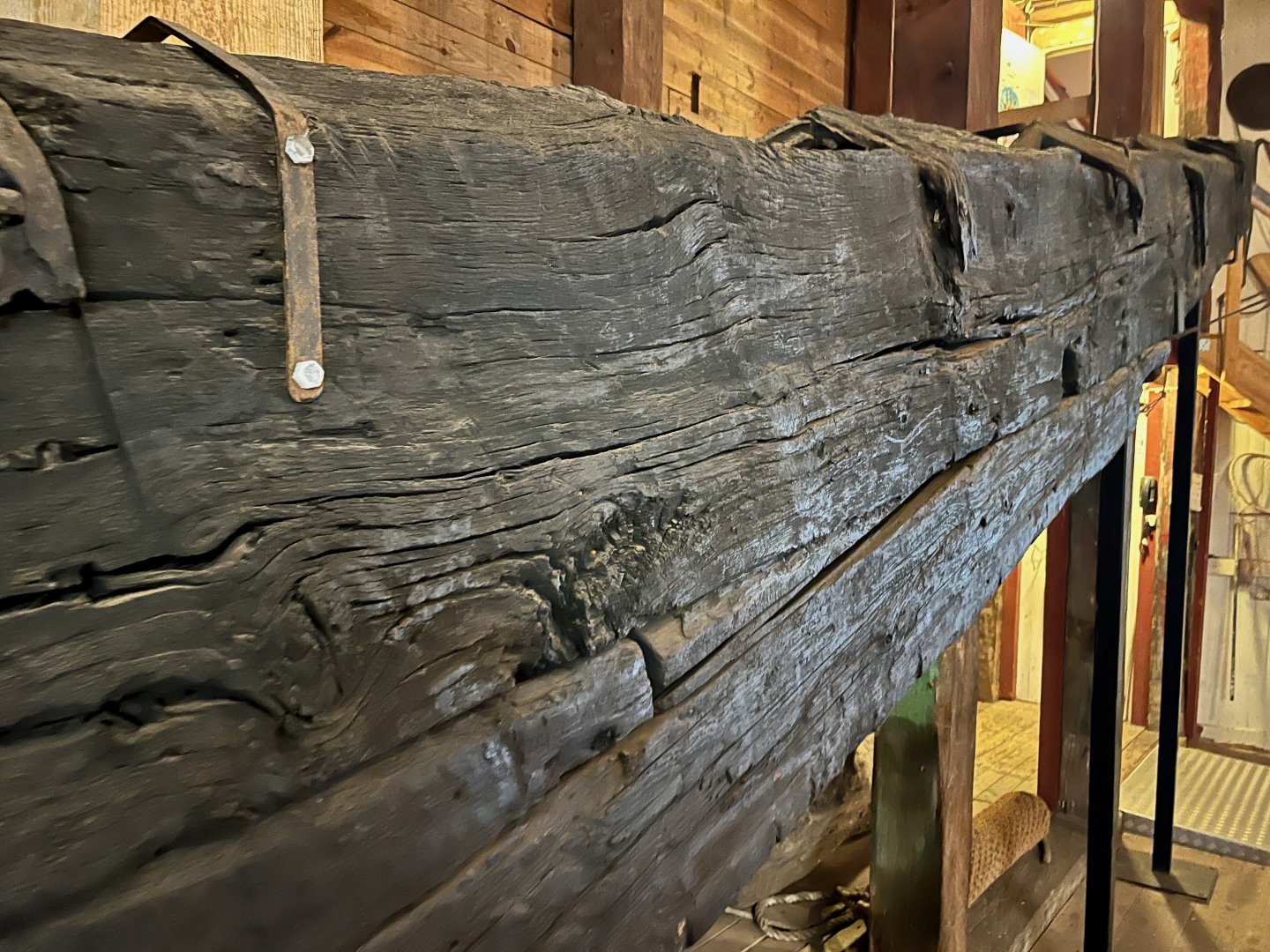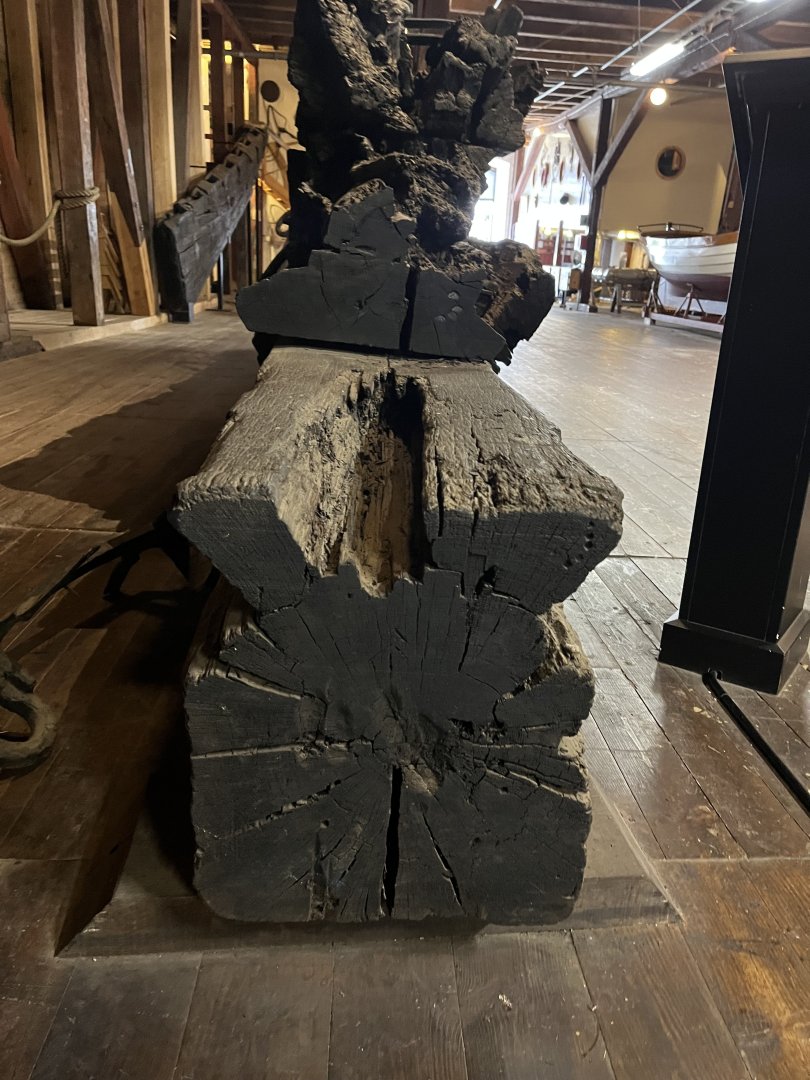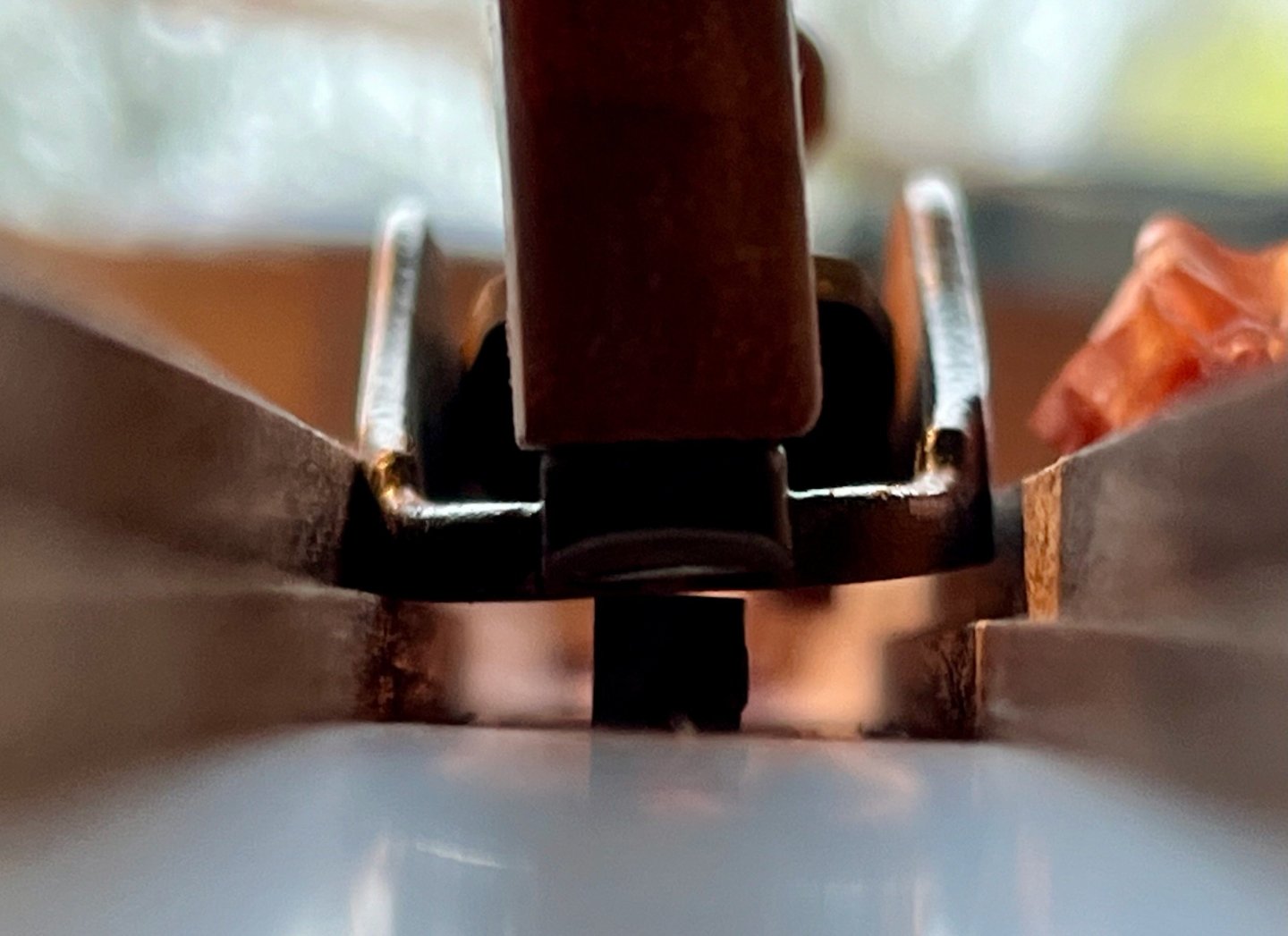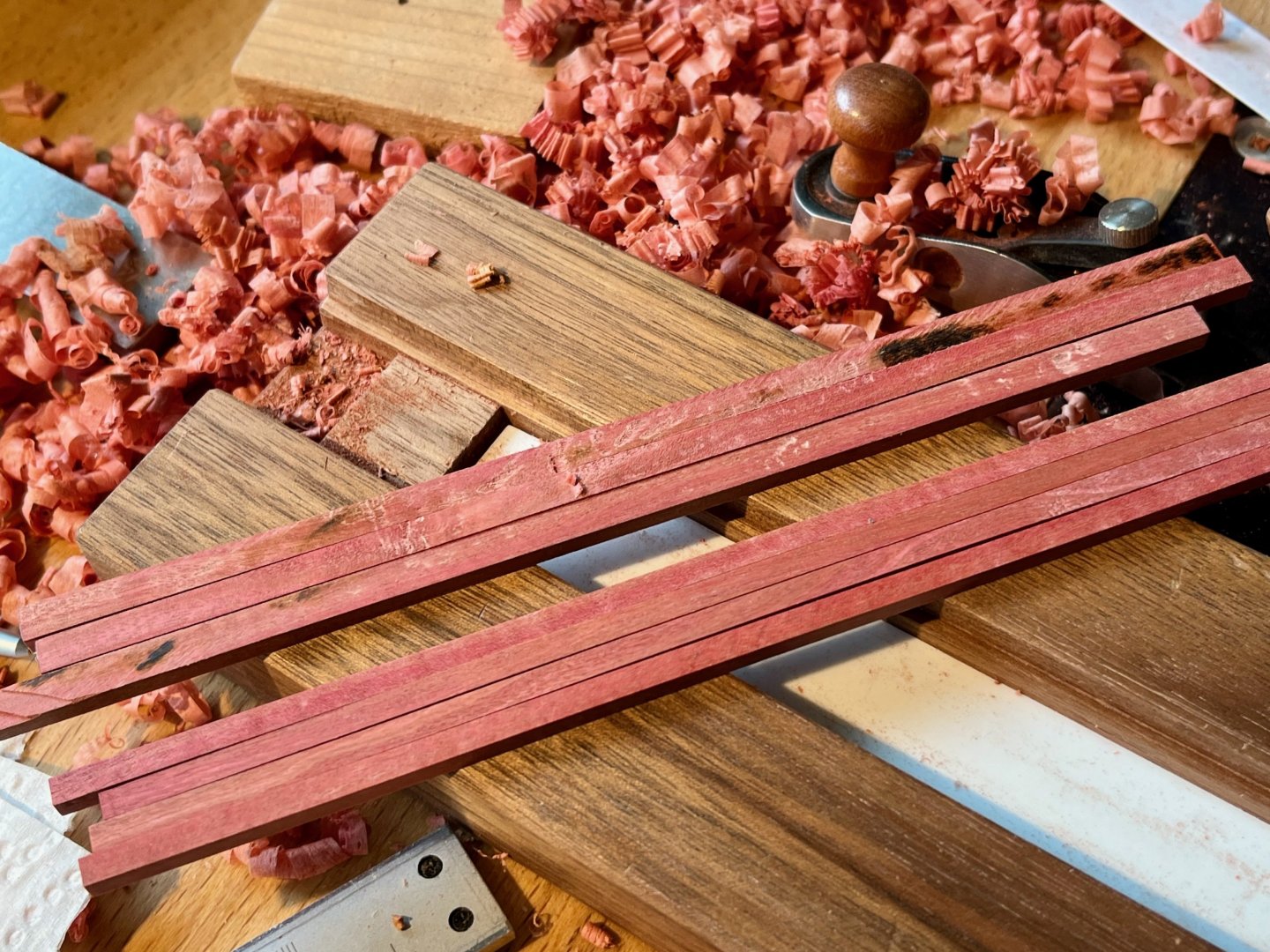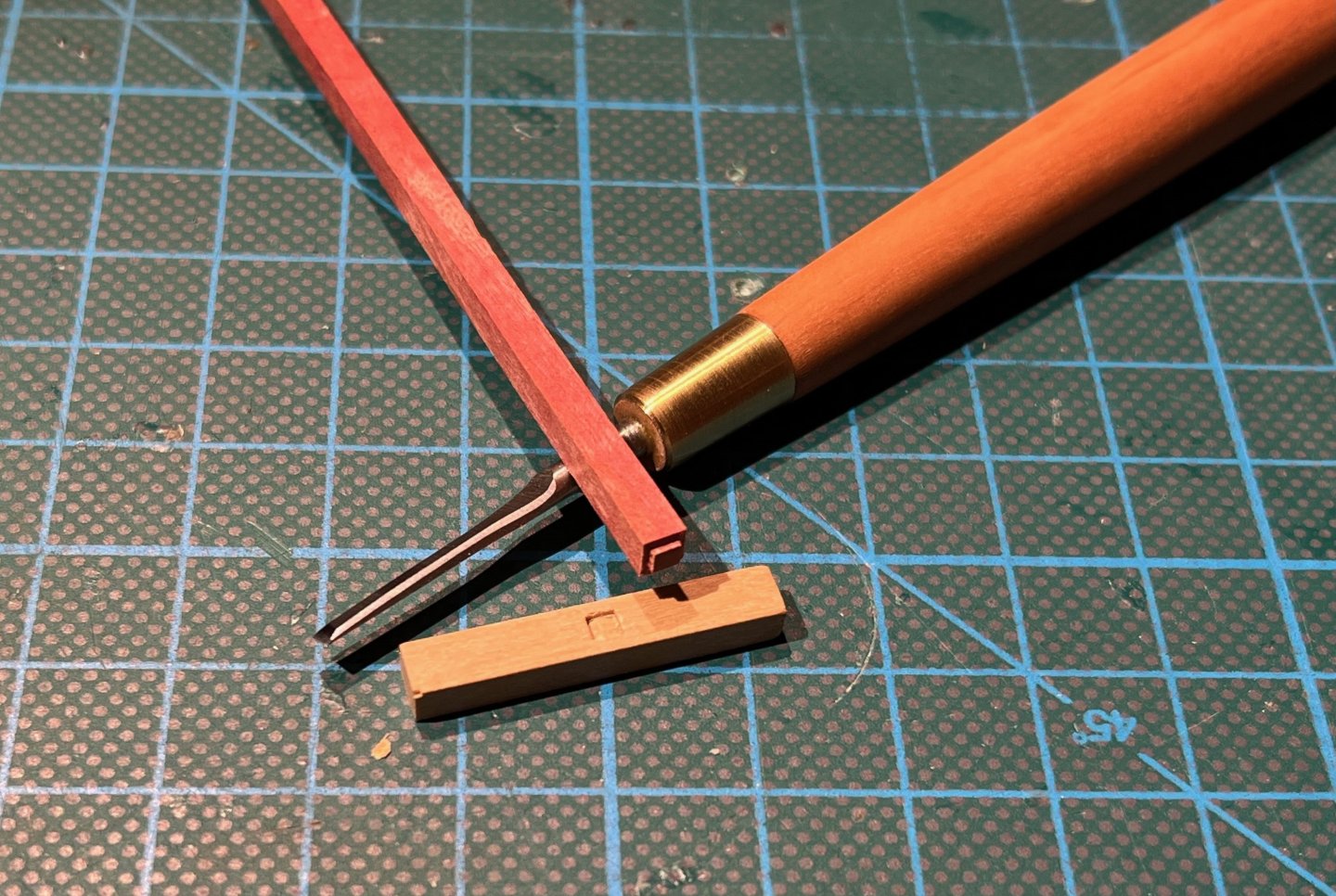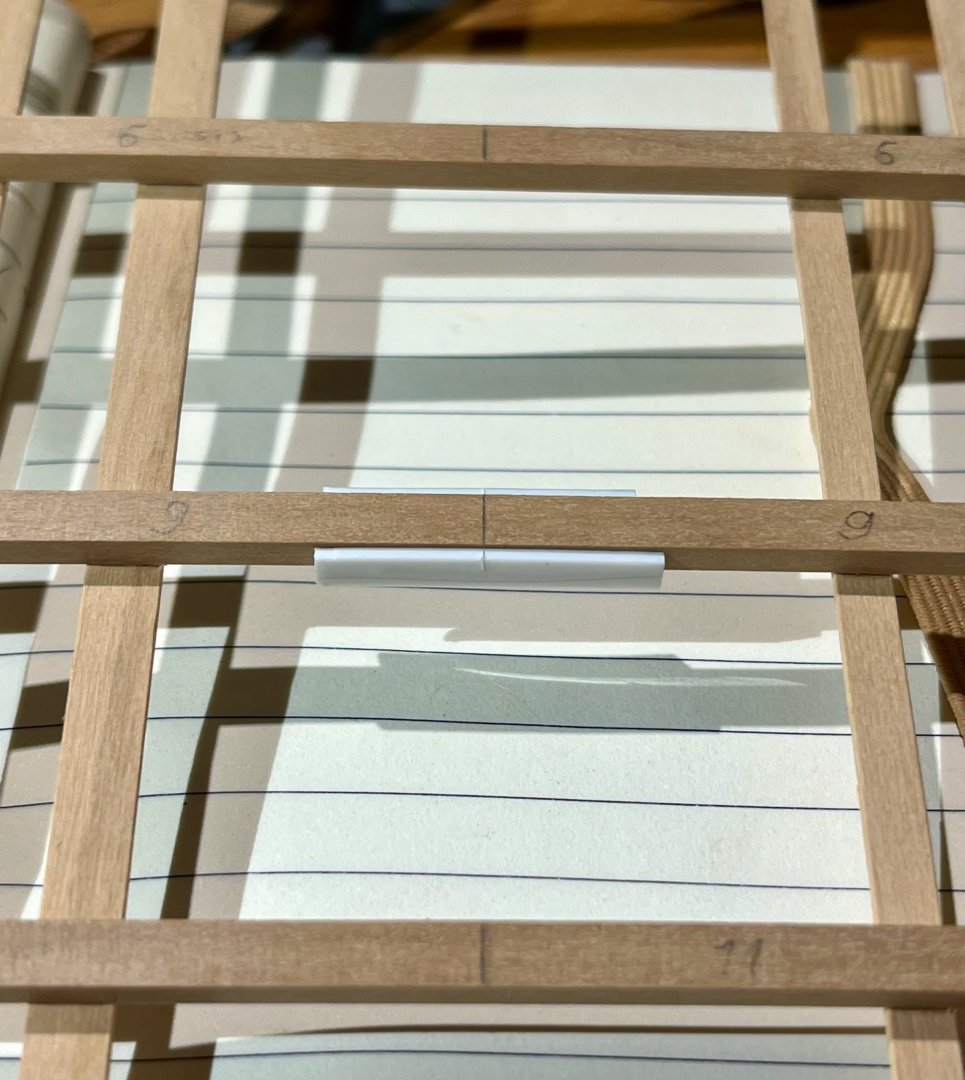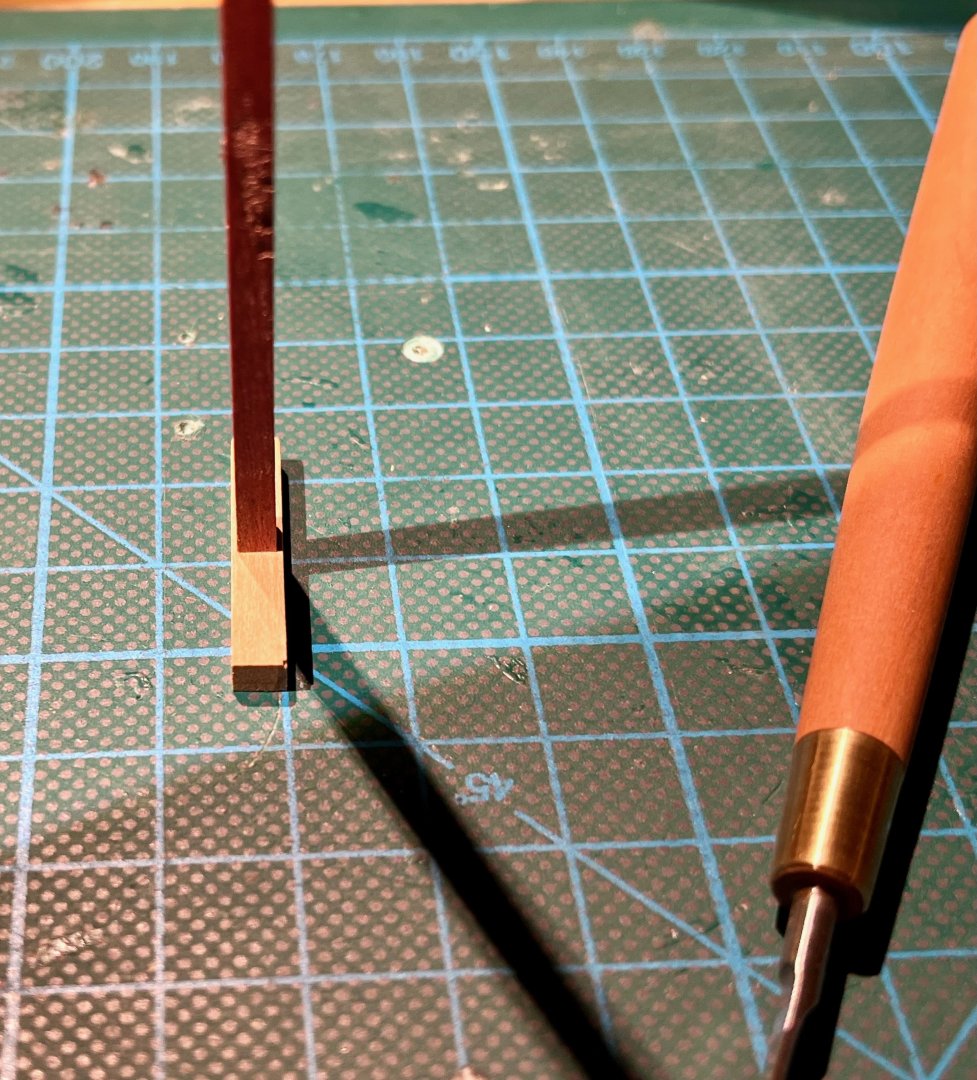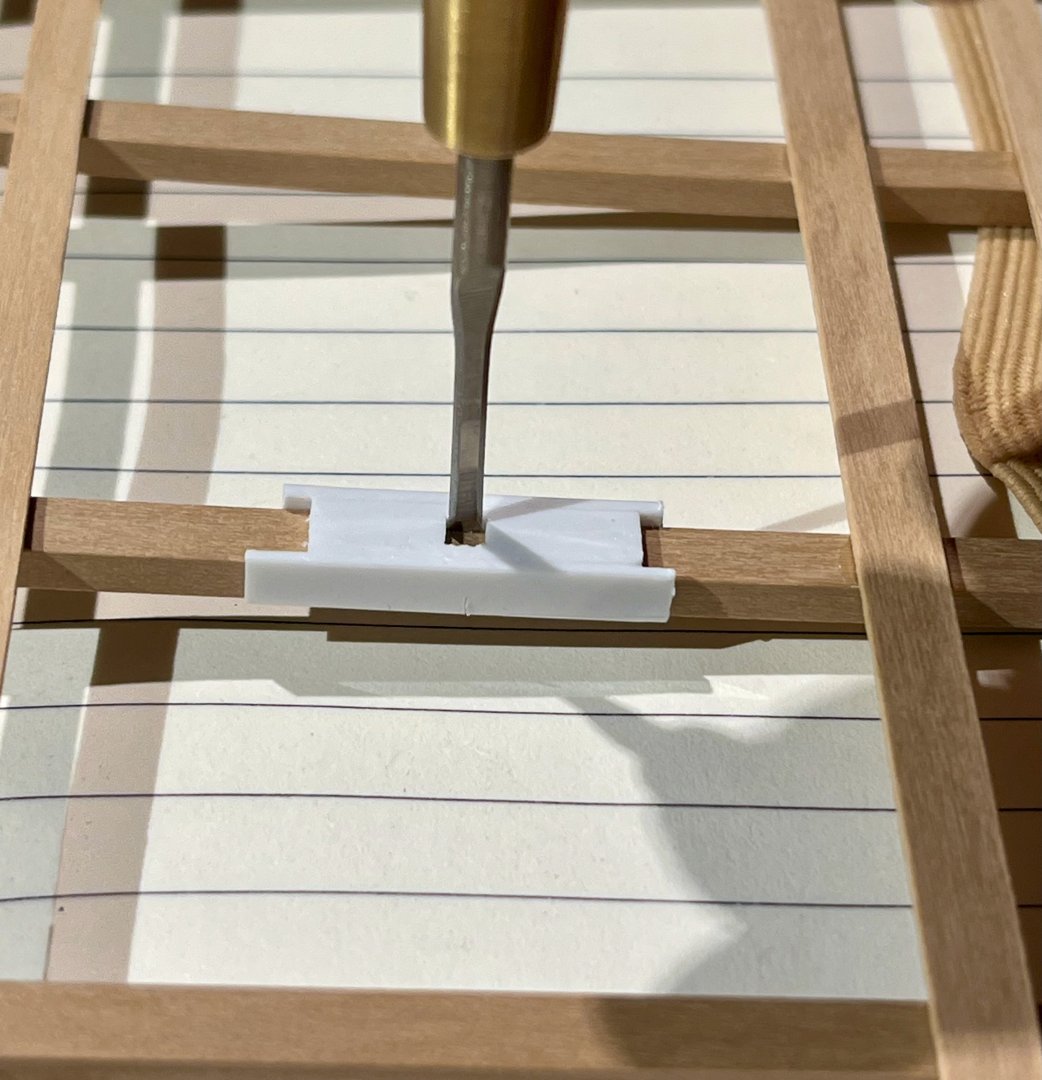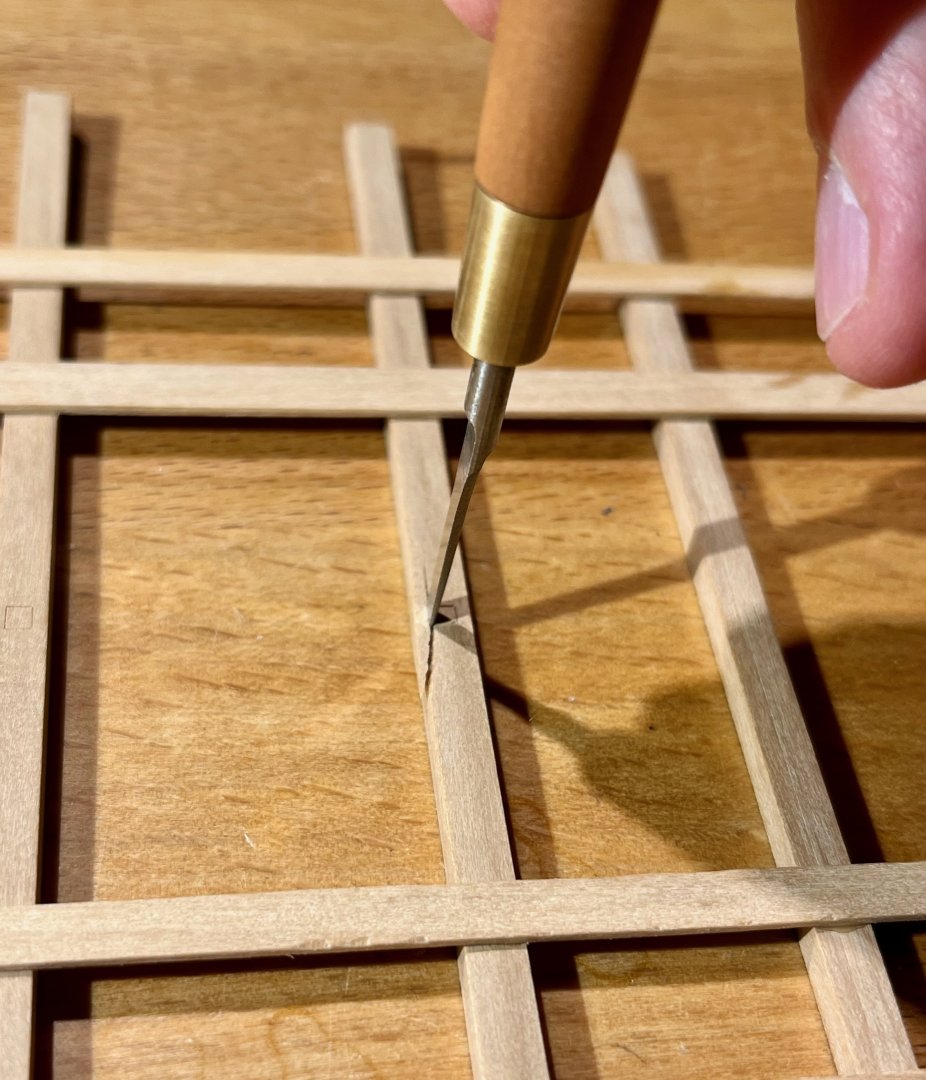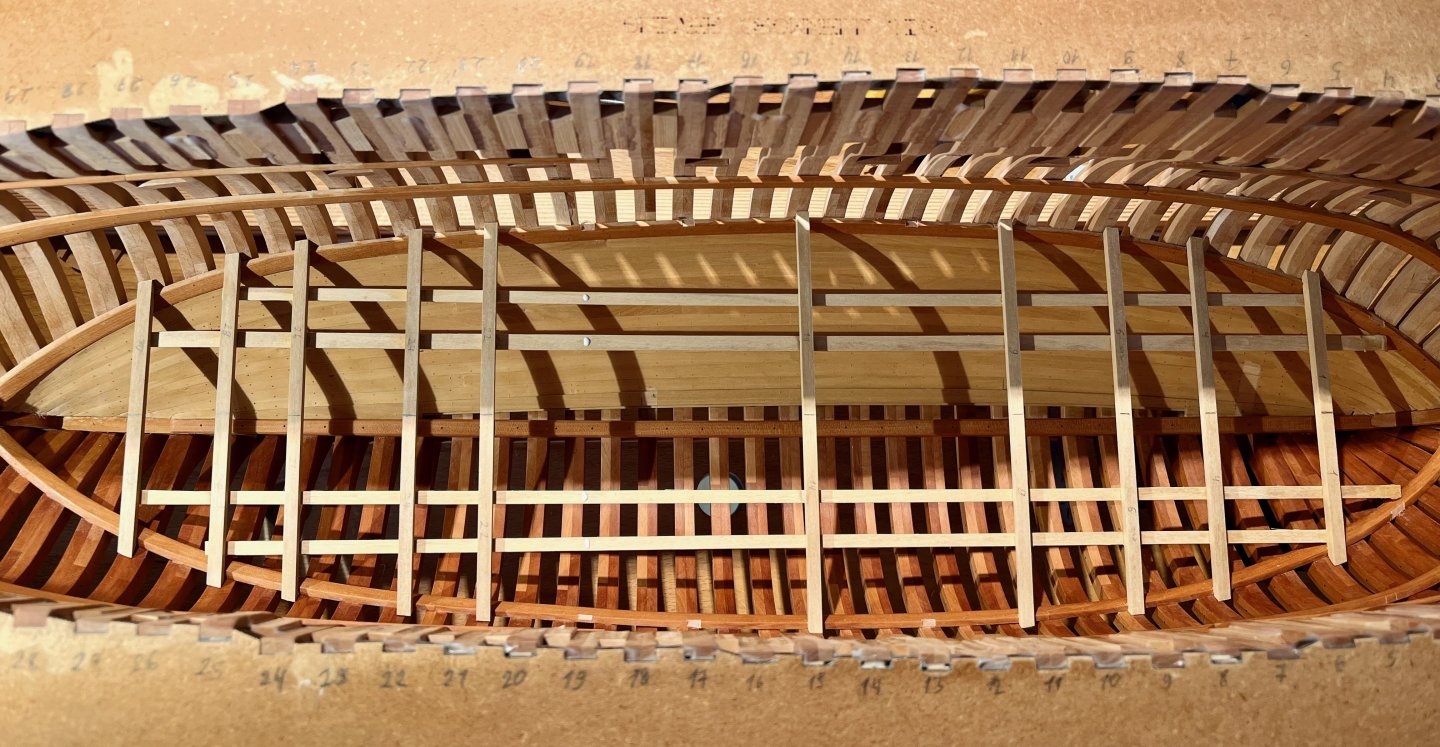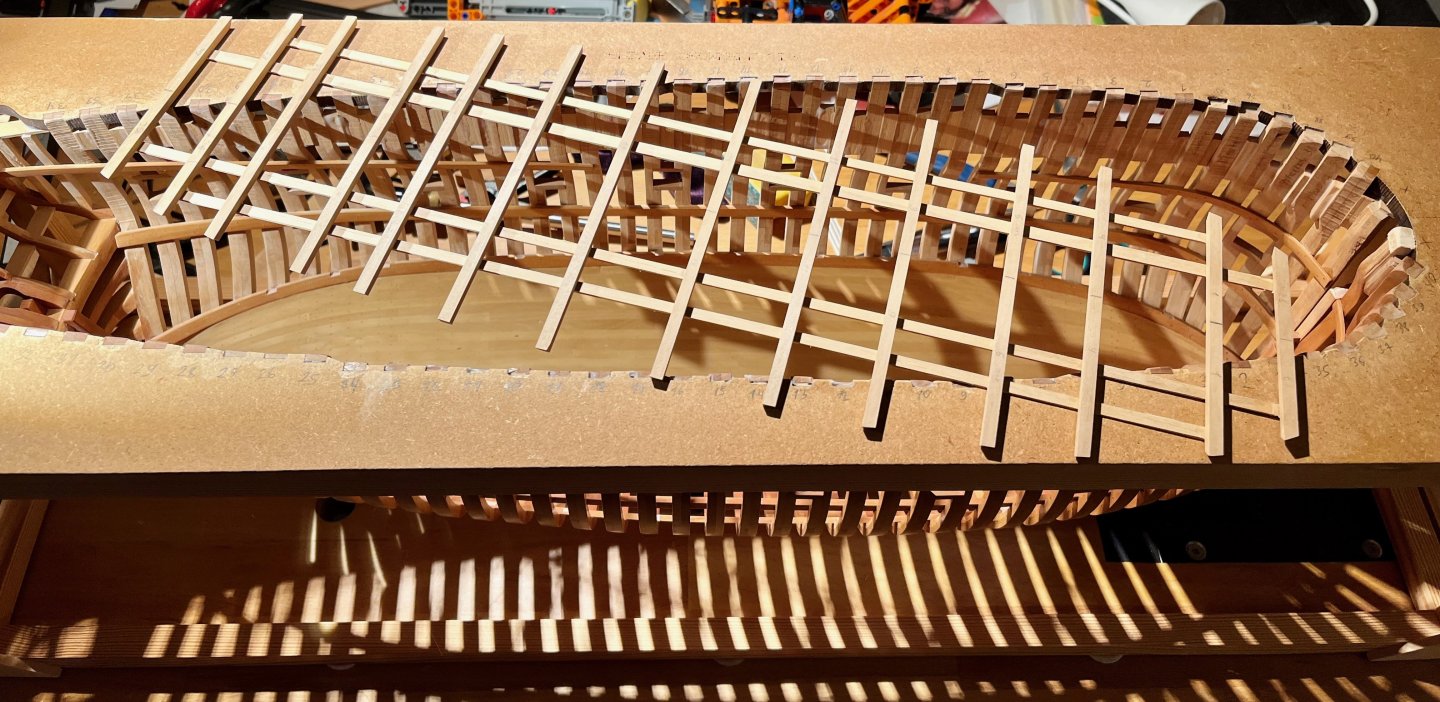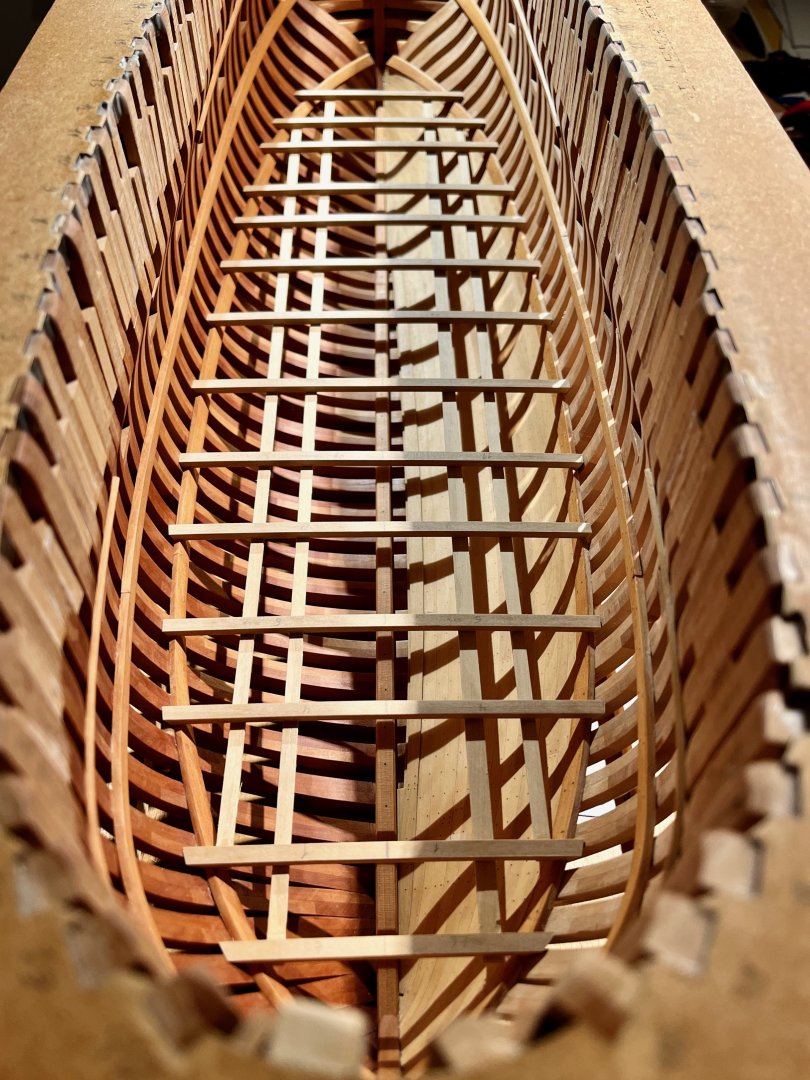-
Posts
1,543 -
Joined
-
Last visited
Content Type
Profiles
Forums
Gallery
Events
Everything posted by Mike Y
-
It's incredible what a bit of sanding can do! If only you could have that magic wand in other areas, not just woodworking Very nicely done, waiting in suspense for the post-finish photos
- 229 replies
-
- Model Shipways
- constitution
-
(and 5 more)
Tagged with:
-
How serious do you get about dust protection
Mike Y replied to bigcreekdad's topic in Modeling tools and Workshop Equipment
Discovered a very neat solution for sanding dust that is not coming from a particular tool (e.g. manual sanding). I work in a living room, so putting any workshop dust filter on a ceiling is not an option. But IKEA has a purifier UPPÅTVIND of just the right size - you can put it right on the table, capturing dust very close to the source. Impressively quiet (55db) even on the max speed (with a flow rate of 55 CFM), has a decent filter (EPA 12 class) and is very cheap (35 USD in Sweden, 50 in US. Filters are 5 and 15 USD respectively). Making a DYI version would cost many times more, and there is nothing in the market in that form factor. Proxxon ASA is mysterious, haven't seen one in the wild, and it is 4 times more expensive. Now I always have it on when modelling, just in case. It is that quiet, that you do not even think about it - just turn it on max for hours, you might even forget to turn it off afterwards -
I got it in a local craft shop and had no idea it is somehow rare. Can’t find it on Amazon, but it is an Arda brand. It is an Italian company, so doubt they make an imperial version. Here is their catalogue, see page 32. I mostly use the 30cm version, but it depends on the scale you are working in. https://www.arda.it/cataloghi/2025/ARDA - DISEGNO 2025.pdf But I found alternatives! Search for the ”graph ruler plastic” and you will find some others with the same idea - graduated in both X and Y axis. Maybe Druxey can shed some light on the intended usage of such rulers in the graphic / drafting world 😊
- 967 replies
-
- hahn
- oliver cromwell
-
(and 1 more)
Tagged with:
-
Framing the deck - continued Assembling the deck as one piece off the model is really comfortable, I am blessed to have a hull shape without an extreme tumblehome First I tried to mark up the layout using the a square. Unfortunately not all beams are perfectly perpendicular, not to a visible degree, but enough to make that method unusable. After some experiments I settled on this setup: The deck is clamped in place and an unusual ruler is used to mark up relative to the centerline. That ruler has graduations in two axises, with notches following the 1, 2 and 3cm from the edge. That makes it ideal for the task - "these two notches should be 18mm from the centerline", while the ruler makes sure your centerline is not skewed. Invaluable! I got it in an arts & craft shop, not sure if there is a special name for that kind of a ruler. Suddenly you need quite a lot of precision. Even a 0.3mm pencil feels too thick, and you need to account for the line thickness. In the end I only used pencil marks as a rough guide. The final markup is done with a chisel with its back resting against the ruler: Make sure to only mark one side of the notch, "the reference side". The other side can be fine tuned to fit, avoiding an accidental skewing by adjusting the notch width from both ends. While cutting the carlings I used a new toy - a tiny vice is square and strong enough for such holding, feels very convenient for working on tiny pieces! Can recommend: The whole process is very therapeutic and is exactly what I needed. The "thinking" part is over, now it's just making tiny wooden things and cutting notches, over and over. I can sneak in a 30min session here and there, cut a few notches every day and keep progressing! Here are all the tools that I need for a single session, keeping them close to reduce the setup time Mini marking gauges are set up in advance, one for the depth and one for the height. My youngest enjoyed this wooden puzzle, asking me to dry fit the deck over and over again And yes, she is starting her own first build (MS Midwest Dinghy) as we speak! The build log might follow. Intermediary result so far, like the contrast of the fresh wood! Only dry fit and no sanding. Woke up in the middle of the night - how would I remove the deck if hanging knees are installed? They are notched in deck clamps, so I can't lift it or turn it sideways. And installing them later is not possible since they sit between a beam and a lodging knee. In the end I will be saved by omitting the hanging knees on the open side of the hull (left on this photo). But if I would have built a symmetrical hull with both knees on both sides - then I need to somehow perfectly fit everything off the model, assemble it and then sand the deck on the model, without scratching the hull? The magic of sanding would barely be available then… That sounds very complicated. A lot of build logs just omit that problem, going directly to a fantastic finished result! Now I am very curious 🤓 Will go silent for a couple of months, the task is repetitive and I just need to finish the rest of the carlings, ledges and knees.
- 967 replies
-
- hahn
- oliver cromwell
-
(and 1 more)
Tagged with:
-
Fantastic and long awaited news! Really hope it would work out, getting in line for a couple of machines Pardon for the provocative question - but do we know who is taking over and what kind of quality standards to expect? Is it licensed to some external company that would produce the machines following the existing design, or is it someone "inhouse" taking over the manufacturing with Donna overseeing the quality?
-
Forgot one more documentary that might be of interest, with some fresh videos from onboard: https://www.svtplay.se/video/jBvRER5/vasa-1628/avsnitt-2 Beware - it will probably be deleted 13th January 2026, make sure to download / screenshot before that Your post inspired me to visit her again. Can report that the installation of the new support system is visibly progressing! You can see the new cradles, with a lot of fine adjustment built in, side by side with the old fixed ones (with wood blocking): The keel supports are fully replaced and look fancy as well: By the way, are you planning to build her "as launched" or "as salvaged"? Note how the original wood differs from the replacement one in colour, creating very nice contrast: By the way, despite thousands of photos online - let me know if you need some very specific angle. I work fairly close to the museum and have an unlimited entry, so can easily come by during lunch and take any pictures you desire. Unfortunately not from the inside
-
Thanks Mark! I am not planning to show the binding strakes due to aesthetics reasons. Most likely the lower deck would have no planking at all, or maybe a waterway only. But appreciate the point, you are right! I used to plane thin strips between the blade and the fence, but doing it on the other side is much more convenient. The piece is not jammed between the blade and the fence, reducing unnecessary damage with deep saw marks. When cutting "thin side outside the blade" - you can easily push it away with your finger (behind the blade), ensuring that the strip would not touch the back of the blade, regardless of any internal stresses and deformations. A riving knife would probably be a good idea, but this saw does not have one
- 967 replies
-
- hahn
- oliver cromwell
-
(and 1 more)
Tagged with:
-
Thank you all, your support means a lot! ☺️ Deck framing preparations Here is the "final" deck layout that I settled on. Knee shape is quite approximate and would be refined on the model, but the carlings are all in their final spots. Ledges are omitted for clarity, but they would be placed on the top and middle part of the deck, leaving the bottom one fully bare. Depending on the visuals I might add the bottom row of carlings later on. If anyone can spot any mistake - please let me know before it is too late! Always a difficult decision point for me - what colour scheme to use for the next phase of the build? I want some contrast, but not too much. After hours of scrolling through amazing build logs here on MSW as well as photos of classical models - settled on the following palette: Carlings: boxwood, same as the beams. Lighter boxwood would represent the "heavy" timbers of the deck. Lodging knees: light pear, non-steamed. Hanging knees, beam arms: Swiss pear, steamed (darker variety) Ledges: have not decided yet, will try cherry. Something dark, but not black. Hope cherry is not too grainy for these tiny pieces. Here are the wood sheets planed to thickness and sanded. I will likely keep it unfinished, and use finish only for the top decks that might be touched. Next is milling the stock for carlings. It took too much effort for pillars, so trying to refine my technology. Ideally I just need a proper thickness sander, but I don't have one (or a space/time for the DYI variety), so was curious if my Proxxon FET table saw can do if I treat it with some love and care? Any tool shines better if you actually spend time tuning it.. At least the fence angle needs to be adjusted to avoid pushing wood into the blade (or away from it), it does make a difference! First was trying a slitting blade with 1mm kerf and no set. It leaves a fairly smooth finish, but tends to burn the wood and is harder to control. Switched over to the regular carbide tipped blade which has an effective kerf of almost 2mm. Sounds wasteful, but it is easier to control, so fewer planks would end up in the scrap bin. No burning, but the blade marks are slightly more visible. Close-up of test pear strips cut with both types of the blade, the surfaces are quite different: I do not have a proper "thin strip jig" that acts as a bump stop on the other side of the blade, but this saw also has a micro-adjuster that I have never tried before. Fiddly to use, but once you get the hang of it - it actually allows to move the fence quite precisely. If I need 4.0mm piece - I move the wheel to 6.0mm and with a blade kerf of almost 2mm I do get consistent 4.1mm thickness (with, say, +/- 0.05 tolerance). Not too bad for a saw that is not really designed for that kind of precision! They are 0.2mm oversized, leaving just 0.1 on each side to remove saw marks and any imperfections Boxwood carling blanks straight out of that saw, with no touch-up / sanding / scraping: Then some very careful planing in my thicknessing jig, taking care to not take too much material. I was worried that strips would fall on a side and I will end up with parallelograms instead of squares, but with the narrow face of 2.5mm and a crisp edge it was not an issue, they were standing upright. Now I have a bunch of blanks ready. They are straight, smooth and satisfyingly square in all directions and with dimensions down to +/-0.02mm! I did not expect to enjoy it that much
- 967 replies
-
- hahn
- oliver cromwell
-
(and 1 more)
Tagged with:
-
Incredible build! Black walnut make it look very similar to the real one Looking into the early photos of the salvage - the camber is quite clear on the upper decks and a bit on the gun deck. I am sure you have seen that, but just in case - check out this old film with a lot of the archive salvage material: https://www.svtplay.se/video/jE4Bx6n/regalskeppet-vasa And a modern series where Fred Hocker goes through every deck, showing it in a good light and quality: https://www.youtube.com/watch?v=yknLUNgMqOI&list=PLkwCdpXl16oj7jXRD4UO0paHrMgTThoEv (the 5 video playlist)
-
TAIG Mini Lathe Table Saw Conversion?
Mike Y replied to DerekMc's topic in Modeling tools and Workshop Equipment
Does anyone have an update on that? Is the Byrnes reboot actually happening, or are these rumours just a wishful thinking?😊 -
The interlocked pillar and the aft platform should be glued in simultaneously, a bit of a stressful glue-up. I scuffed up the glue contact spots with a curved riffler file, taking care not to leave finger marks all around. Now the whole platform-pillar-maststep assembly is permanently in place! Slightly crooked (was relying too much on pencil marks, lesson learned), but no one would know Almost forgot to record the installation process, but it is straightforward - scuff the tenon with a light touch of a diamond file, mask around the mortise to simplify the cleanup, brush off any squeeze-out with a damp stiff bristle brush. Then put the deck on to lock the pillar in its final position and leave it for a day to properly dry (I was installing two pillars at a time). Surprisingly that approach worked perfectly! Despite a tiny contact area, the mortise-and-tenon joints keep pillars tightly locked, they feel quite rigid if you try to wiggle them. And the deck pops in and out like a charm! It gets really locked in place by deck clamp notches and the pillars, only a light touch required to put it in place. Even a bad video speaks more than any words. It just pops into place, so satisfying! And here is the final result: Pink Ivory looks really cool while fresh and still pink Can recommend, a good contrast in both colour and texture, though a bit of a pain to work with. Here is the way it would be seen once all the decks are finished, doubt it would be easy to see pillars from the top.
- 967 replies
-
- hahn
- oliver cromwell
-
(and 1 more)
Tagged with:
-
Incredible! Hope you are planning to start a build log in this site? And can you tell a bit more about the internals, controlling all these sails, ballast and waterproofing? So many questions! 😁
-
Time to make them pretty - starting with chamfers Here is my setup and an opportunity to play with the miniature Veritas worksurface. Being able to position the vacuum hose is the main feature The gentle air draft away from my face is catching all the fine dust. I started with a bit too many tools, but after a couple of pillars simplified it to a round dowel with 320 and 400 Mirka sandpaper, and a blade for a final scraping pass to flatten the edge. The dowel diameter also helps to ensure symmetrical shape of the chamfer end transition. Sanding dust highlights the shape of the edge, allowing to eyeball the chamfer shape. The result is quite straight even with magnification, so hopefully almost perfect to the naked eye. When it came time to install the pillars The Inspector have spotted a whoopsie - one pillar intersects the aft platform beam 🫣 That is to be expected when the Master Shipwright was working on his design in the late hours, and in my view even adds realism to the build - surely the quality standards of the average Revolutionary Era shipyard were far from perfect, especially in the "out of sight - out of mind" areas deep in the hold. "Good enough", said the shipwright and notched the pillar into the beam But if you take a peek through the gunport - you can still see his mistake clearly: I like how the hull is slowly filling with a spiderweb of timbers and framing! It is the next phase of "it looks like a ship" feeling I had when building frames, and now "hmm, it looks like an elaborate house for hamsters!" Pillars were finished on the lathe. Or maybe "in the lathe"? 🤓 Anyway, they were technically in the lathe while being finished, great way to hold them and avoid smearing oil all over (it is important to avoid contaminating the bottom tenon, it would be a tiny and critical glue interface) A surprisingly difficult problem is "how do I keep track of pillar numbers and orientations when the finish is applied?" There is no place for a pencil mark, and it is too easy to smear pencil from a tiny endgrain tenon. Tamiya masking tape is strong enough to hold it by the tenon edge, even though the contact surface is tiny. Here is the first batch hanging in the dark and drying As a backup I measured each beam with a micrometer and can later identify them by length, they are all unique assuming a precise enough measurement tool. The installation plan is questionable - to glue them into the keelson, but leave the top mortise dry and just pop the deck on and off. The top tenons are chamfered to locate the beam mortise easier. I hope that if installing one-two pillars at a time I will be able to achieve a glue joint than would hold the pillar angle precisely enough. Though the geometry and the glue joint dimensions are definitely not working in my favour... Stay tuned for the next chapter to find out if that plan would fail (or, rather - "how would fail, exactly?" )
- 967 replies
-
- hahn
- oliver cromwell
-
(and 1 more)
Tagged with:
-
Pillar production continues. Tenons are milled on one side first and then hand trimmed in places where keelson is at an angle Marking up pillar locations on the keelson is a bit tricky. First I tried to make a plumb bob, but it's not easy on that scale, can't make it heavy enough to stretch the line consistently. So instead I use a carefully aligned gantry to find a vertical line along the side of the beam. A familiar jig has notches to offset the mortise from the side of the beam, and by flipping the gantry around I make sure it is symmetrical. As always, it gets tricky around the edges Now I can cut pillars to final length. Measuring with a caliper and then subtracting the beam thickness ended up unreliable where the keelson is angled, so I made that jig instead. A groove helps with keeping it straight and adds a bit of necessary friction. Once positioned in the mortises - gently press on the beam to compress it to fit. Measure it with a caliper and scribe a line on the pillar, easy Trimming each pillar to final size took a while. I did not dare to mill it directly to the line, so every pillar was slightly oversize (0.3-0.5mm), with hand chiseling and a lot of dry fits. Pink Ivory is very hard to trim with a chisel, takes a lot of force sometimes, and can split on you if you are not careful. Got a pretty deep finger cut when trimming these pillars, luckily avoided getting blood on the model But my chisel safety definitely improved afterwards! But it is a very satisfying feeling when finally the pillar sits just right - the beam is not rocking side to side, but also has zero vertical bend no matter how much weight you put on it. I was surprised how flexible the beams are, even if made of boxwood 4.2mm thick! The Admiralty ordered a load test to ensure the correct installation of such a critical element. Test passed with flying colours! 😎 Final result, all the beams are dry fit in their final positions and dimensions. Careful markup and fine tuning paid off - good alignment in both dimensions, no gaps, I am happy! Now I can take time making them pretty - add chamfers, sand and finish. It is a bit of a puzzle how to install them later on. I am planning on gluing them only to the keelson, even before the deck is installed. I hope that pillar tenons would poke right into the beam mortises with ease, I chamfered the edges to simplify it. Keeping them off the model for too long will be risky, I want to use them as height limits when gluing in the carlings that might affect the deck curvature. For now I am too scared to glue anything really, the pile of "completed, but not yet installed" parts just keeps growing
- 967 replies
-
- hahn
- oliver cromwell
-
(and 1 more)
Tagged with:
-
Thanks for the full description, Alan! Now it all makes sense, will try your method too!
- 967 replies
-
- hahn
- oliver cromwell
-
(and 1 more)
Tagged with:
-
Alan, I never had any splits with notches for the aft platform, but it was done in pear, maybe boxwood is more prone to it. But it was just me pushing too much I actually enjoy the process of cutting notches! Filing a chamfer sounds more error-prone in some sense, pieces sliding around in a glue instead of being firmly fixed in the notch. Meanwhile I started drafting the lower deck layout. Will build the deck in parallel with the shot locker and other items in the hold. Am I making some obvious mistake? Please ignore the "fore mast is too far forward", it is intentional and a part of the changes that were done by the British. The plans have not indicated any shift in the beam positions, so I am showing like it was done "cheap and easy" way, by just moving the mast two feet forward until it almost hits the next beam. The locations of hatches/gratings, masts and ladder opening are from the plan. Carling and beam arms locations are improvised based on the TFFM.
- 967 replies
-
- hahn
- oliver cromwell
-
(and 1 more)
Tagged with:
-
Speaking of wood imperfections - I was visiting the Naval Museum in Karlskrona (the naval base city in the South of Sweden). It had a fascinating bit of naval archeology on display - parts of the hull of an Age of Sail ships (1678 and 1717) excavated in the area. I did not realise how massive these timbers are in person! Impossible to convey on a photo, but these knees are a size of an adult human and likely heavier. The famous hull cross-section drawings look much more impressive when you can touch them... Speaking of the wood grain - note some knots and imperfections, as well as a non-ideal grain direction in the knee. Here is the deadwood - also far from the prime cut of a tree. That was the real life, a crude build reality rather than a work of art. Unfortunately knots and grain do not translate well in scale... And here is the rudder next to it: Sorry for the offtopic, just wanted to share. It's not often you get to see such structural pieces are on display, and not yet another salvaged cannon that museums like so much!
- 967 replies
-
- hahn
- oliver cromwell
-
(and 1 more)
Tagged with:
-
Now back to the pillars! Pink Ivory put my planing jig to the test. It is not easy to work with - burns when sawing, very prone to tearout, one must be very careful with the grain direction at all times. That made it unrealistic to plane multiple blanks in one go without messing up grain the direction. The other downside of that jig is the requirement to keep the plane straight, without rocking it side-to-side (this photo is exaggerated to illustrate the point). But in the absence of a proper thickness sander it gets the job done, cheap and silent I decided to cut real mortise and tenon joints into the pillars, mostly to help myself with the alignment. I doubt I can drill precise holes join them with a pin, and without some mechanical help to ensure alignment - gluing those together without making a crooked mess would be impossible. Mortise would allow for some adjustments in the very end - if I need to move the end of the pillar a tiny bit - I will just shave off one side of the tenon! And you can't imagine how satisfying the dry fit is, it is held nice and tight without any glue! It is hard to make such a tiny mortise deeper than 0.5mm though (due to the angle of the chisel), but it is enough to firmly register the beam in place. To help mark up the mortises I made a small styrene jig. It has a friction fit to the beam, a bit lower than the beam, and scored marks align with the centerline marked on top of the beam: On the underside a square opening is centered around these scored marks, and the chisel fits nicely in it. Not much pressure is required to mark it. But then I overestimated the strength of the beam, cracking it all the way through along the grain imperfection A clumsy builder can break even a boxwood beam! Luckily the crack is quite clean, so should be easy to glue back like it never happened.
- 967 replies
-
- hahn
- oliver cromwell
-
(and 1 more)
Tagged with:
-
I was trying to imagine the process of marking up the deck inside the hull. Even with carefully prepared notches in the deck clamps it's not an easy work - the downside of Hahn's method is that working deep inside the hull always feels like a surgery, working through an narrow opening on top. So I decided to make my life easier and do it off the model instead Luckily that hull has a very modest tumblehome, so getting it in and out is geometrically possible. Beams are spot glued to boxwood strips and the entire deck would be assembled on them. Later strips would be removed using some alcohol or water. It would require a bit of a cleanup, but much easier overall. It fits perfectly into all notches, very satisfying! Now I can work with it The deck has a very gentle curve along the hull, so I will take care to glue carlings and ledges on the model to avoid loosing that curve.
- 967 replies
-
- hahn
- oliver cromwell
-
(and 1 more)
Tagged with:
About us
Modelshipworld - Advancing Ship Modeling through Research
SSL Secured
Your security is important for us so this Website is SSL-Secured
NRG Mailing Address
Nautical Research Guild
237 South Lincoln Street
Westmont IL, 60559-1917
Model Ship World ® and the MSW logo are Registered Trademarks, and belong to the Nautical Research Guild (United States Patent and Trademark Office: No. 6,929,264 & No. 6,929,274, registered Dec. 20, 2022)
Helpful Links
About the NRG
If you enjoy building ship models that are historically accurate as well as beautiful, then The Nautical Research Guild (NRG) is just right for you.
The Guild is a non-profit educational organization whose mission is to “Advance Ship Modeling Through Research”. We provide support to our members in their efforts to raise the quality of their model ships.
The Nautical Research Guild has published our world-renowned quarterly magazine, The Nautical Research Journal, since 1955. The pages of the Journal are full of articles by accomplished ship modelers who show you how they create those exquisite details on their models, and by maritime historians who show you the correct details to build. The Journal is available in both print and digital editions. Go to the NRG web site (www.thenrg.org) to download a complimentary digital copy of the Journal. The NRG also publishes plan sets, books and compilations of back issues of the Journal and the former Ships in Scale and Model Ship Builder magazines.



.thumb.jpg.3250ab8b5ce52dfb25832000ec8c5faf.jpg)

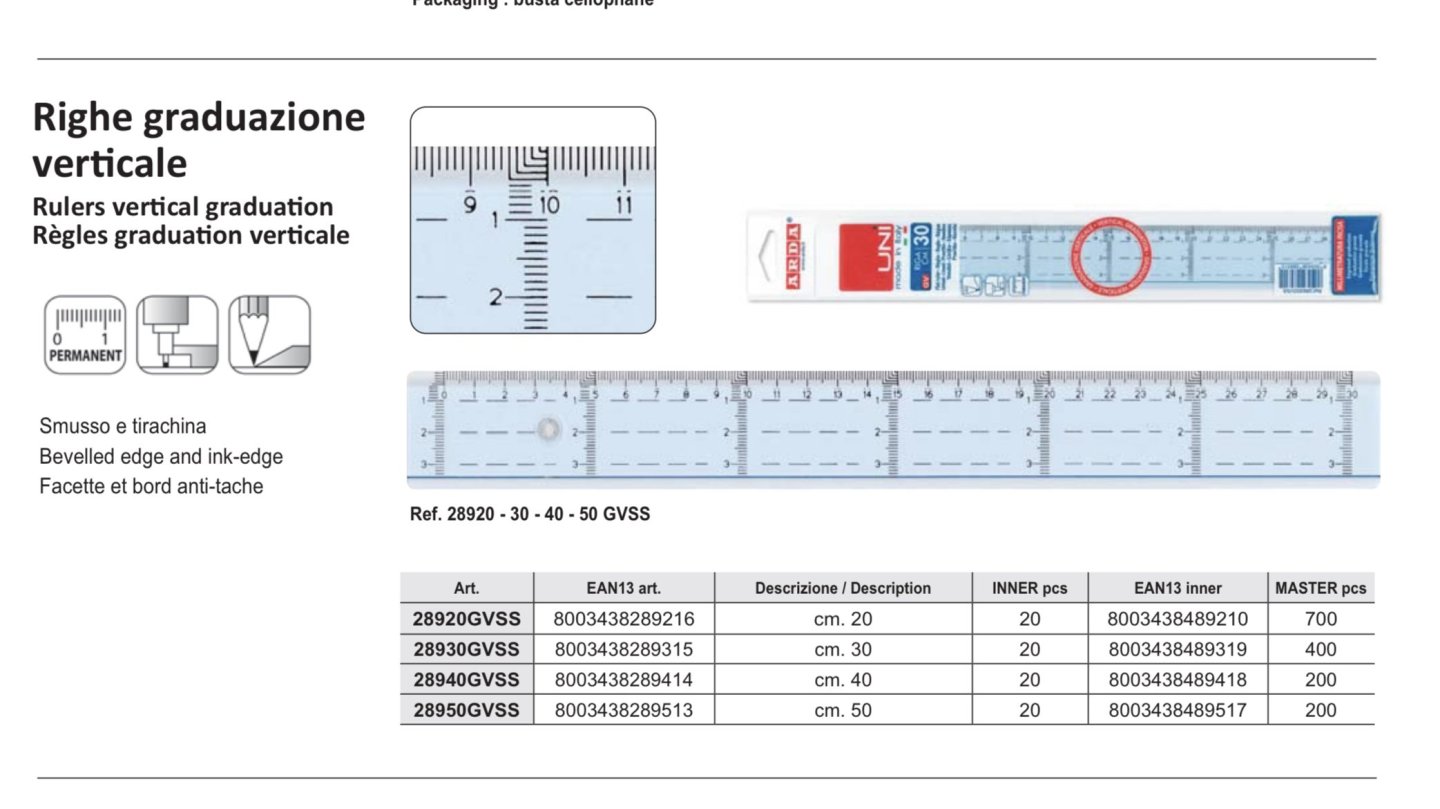
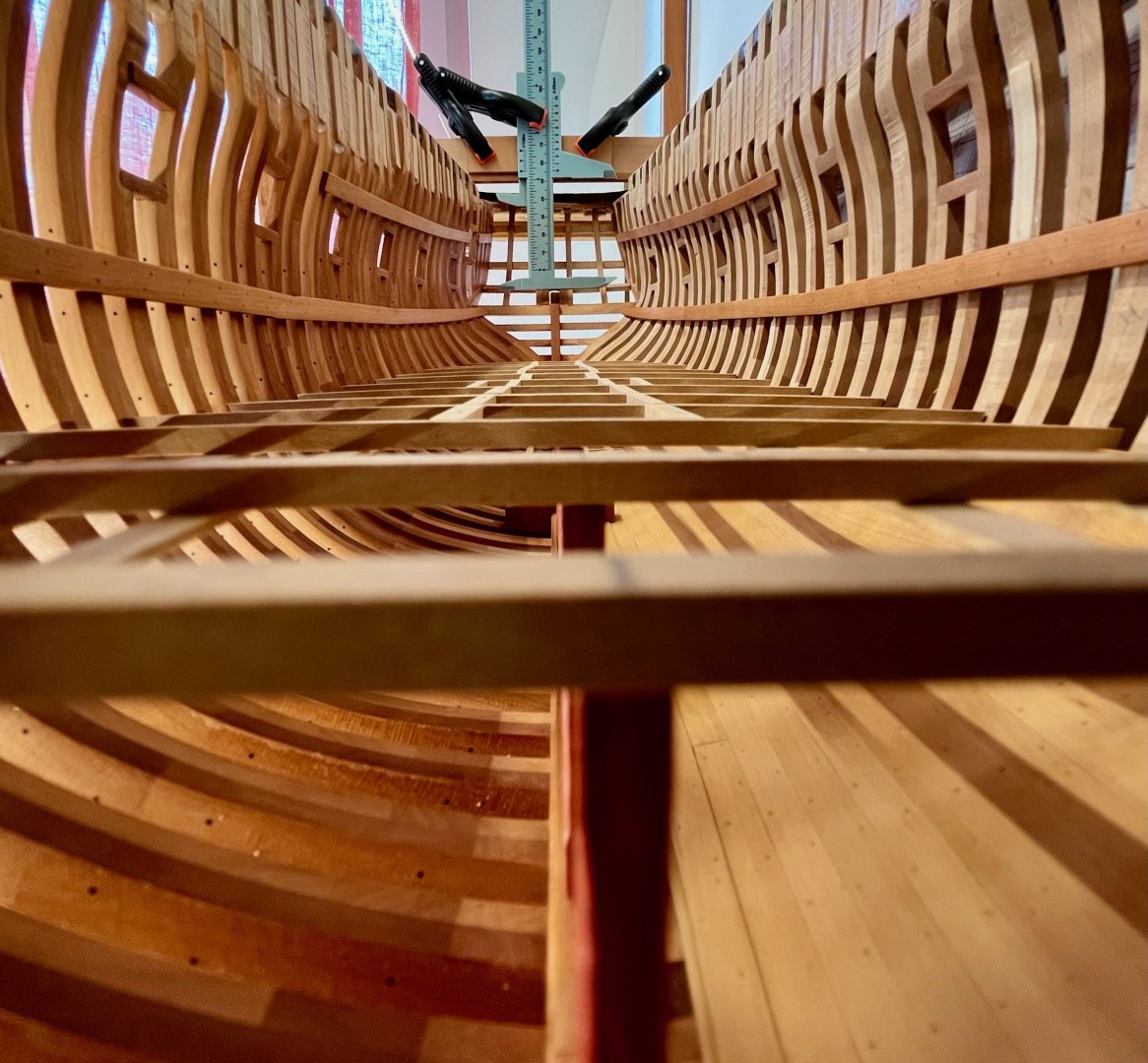
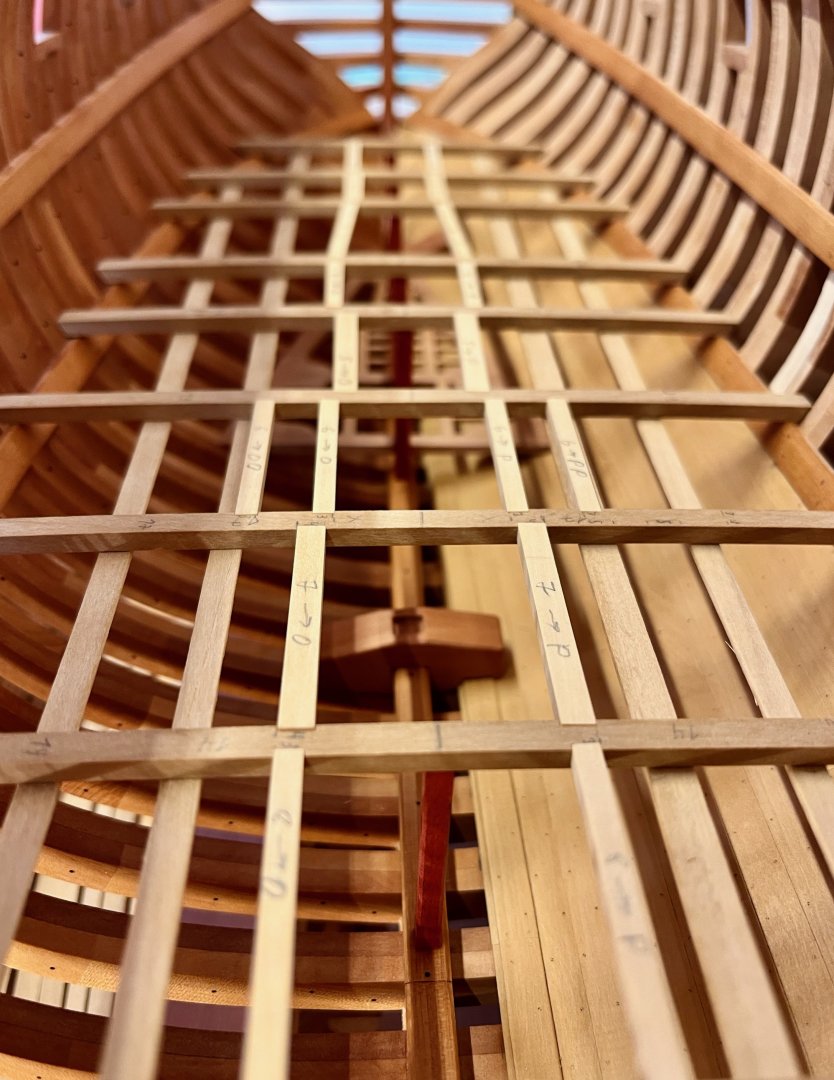
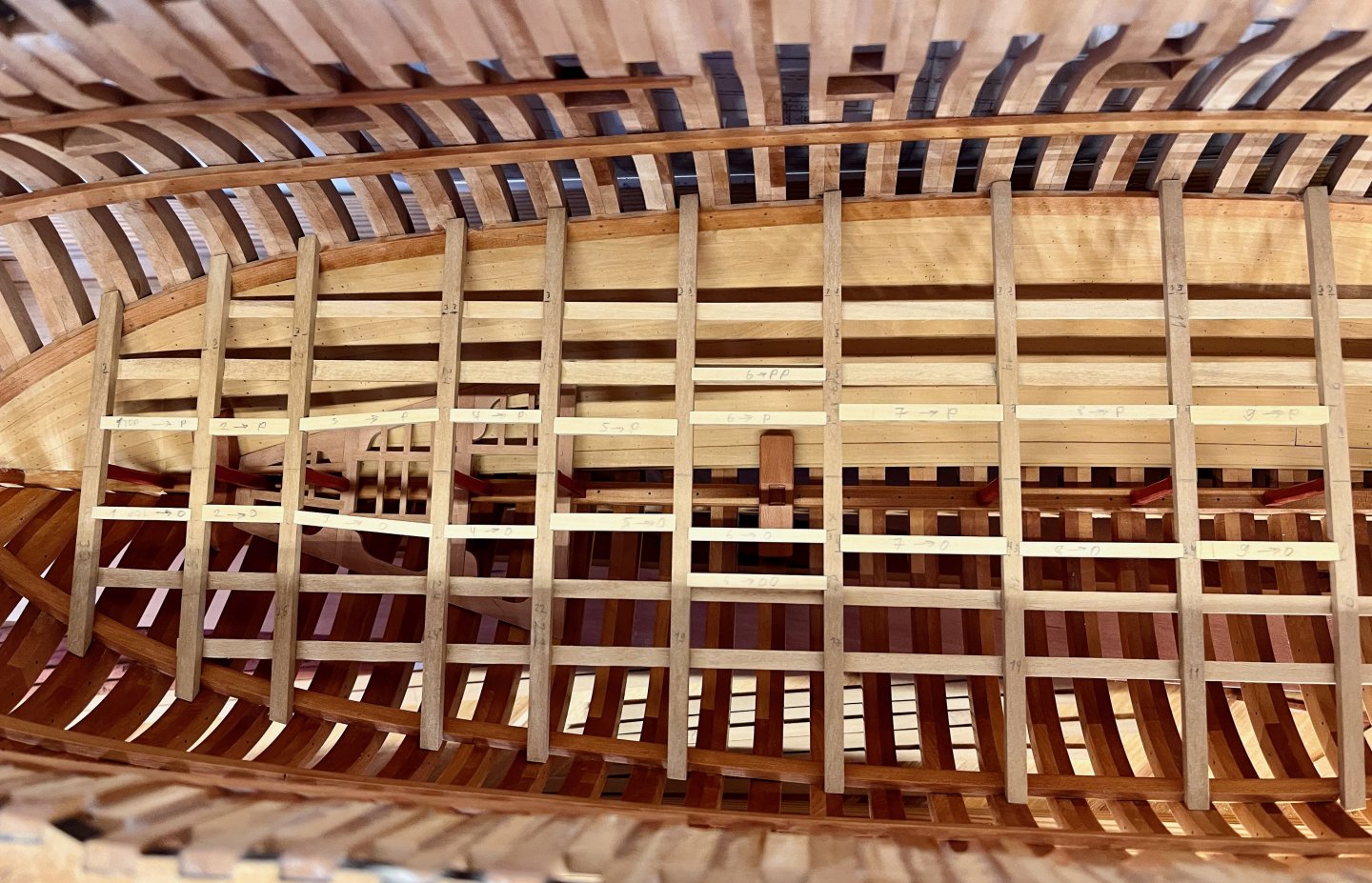
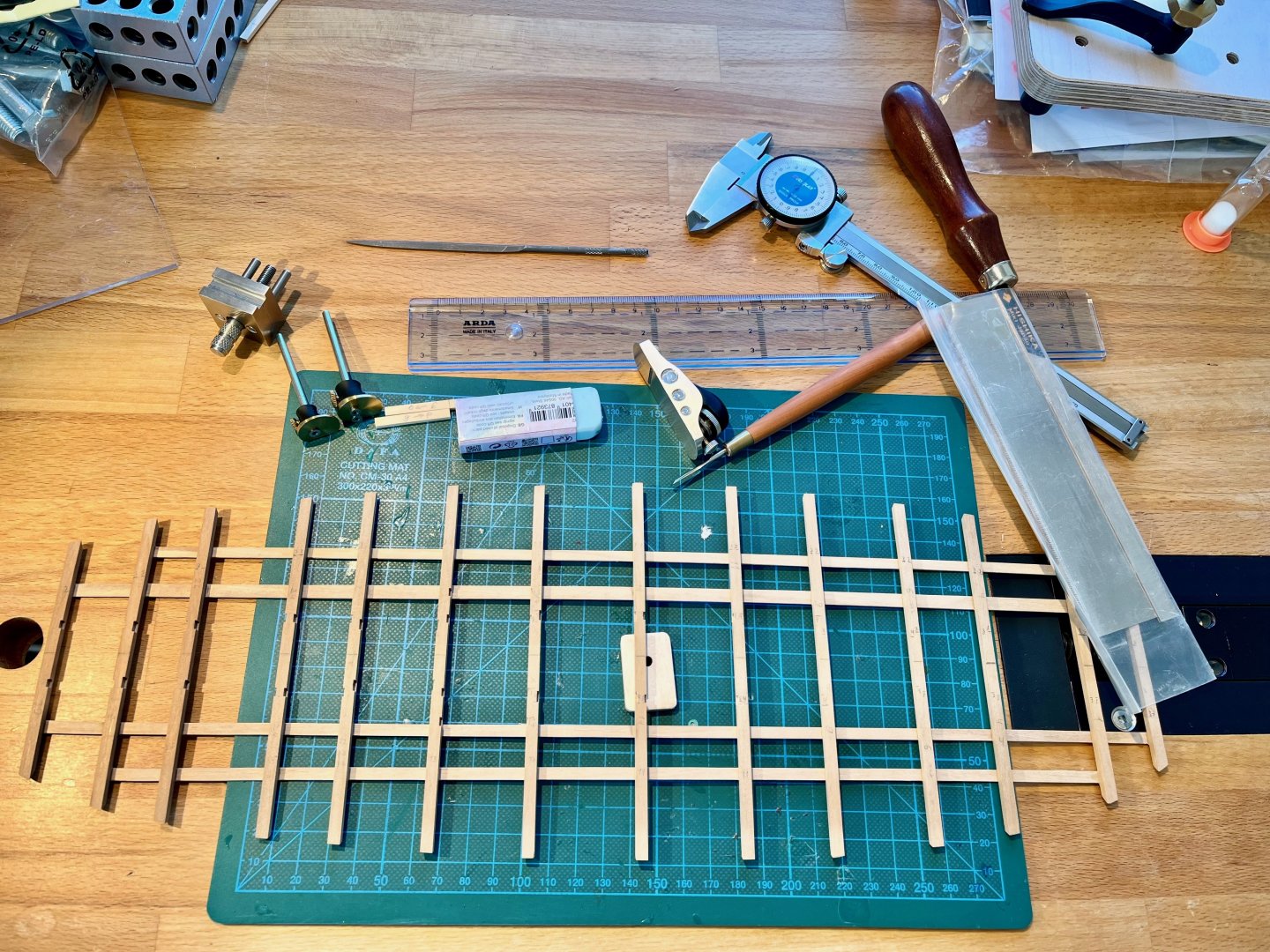
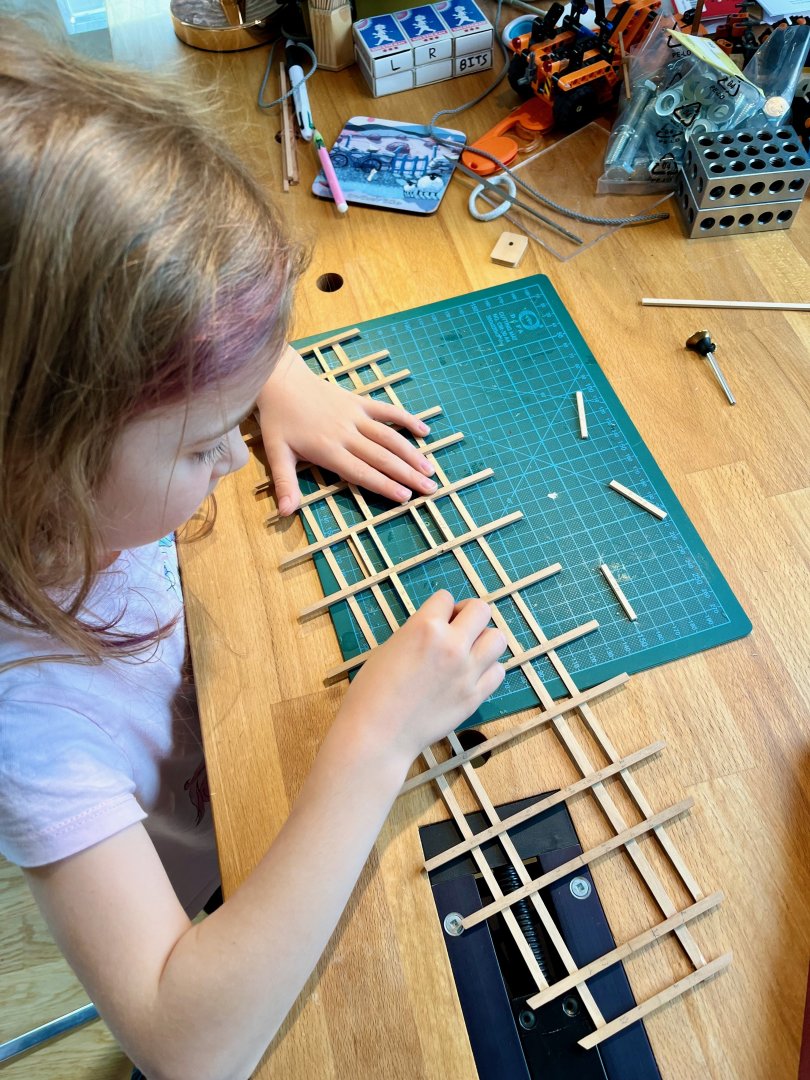
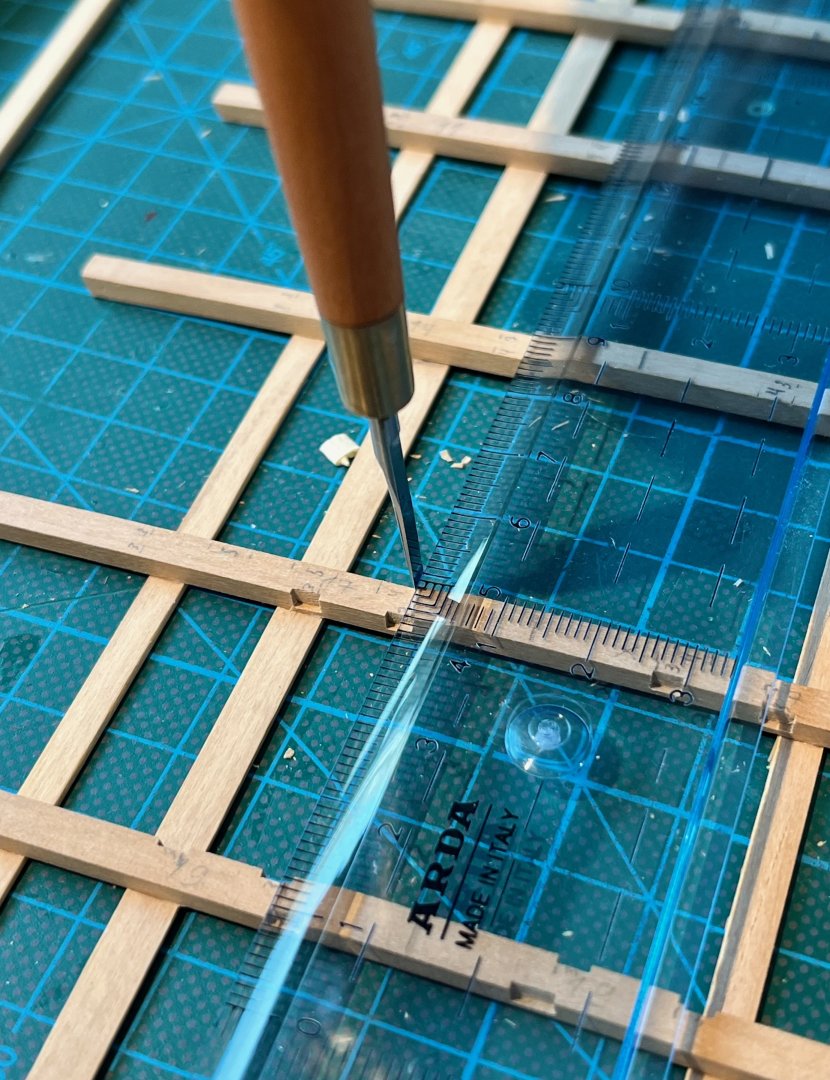
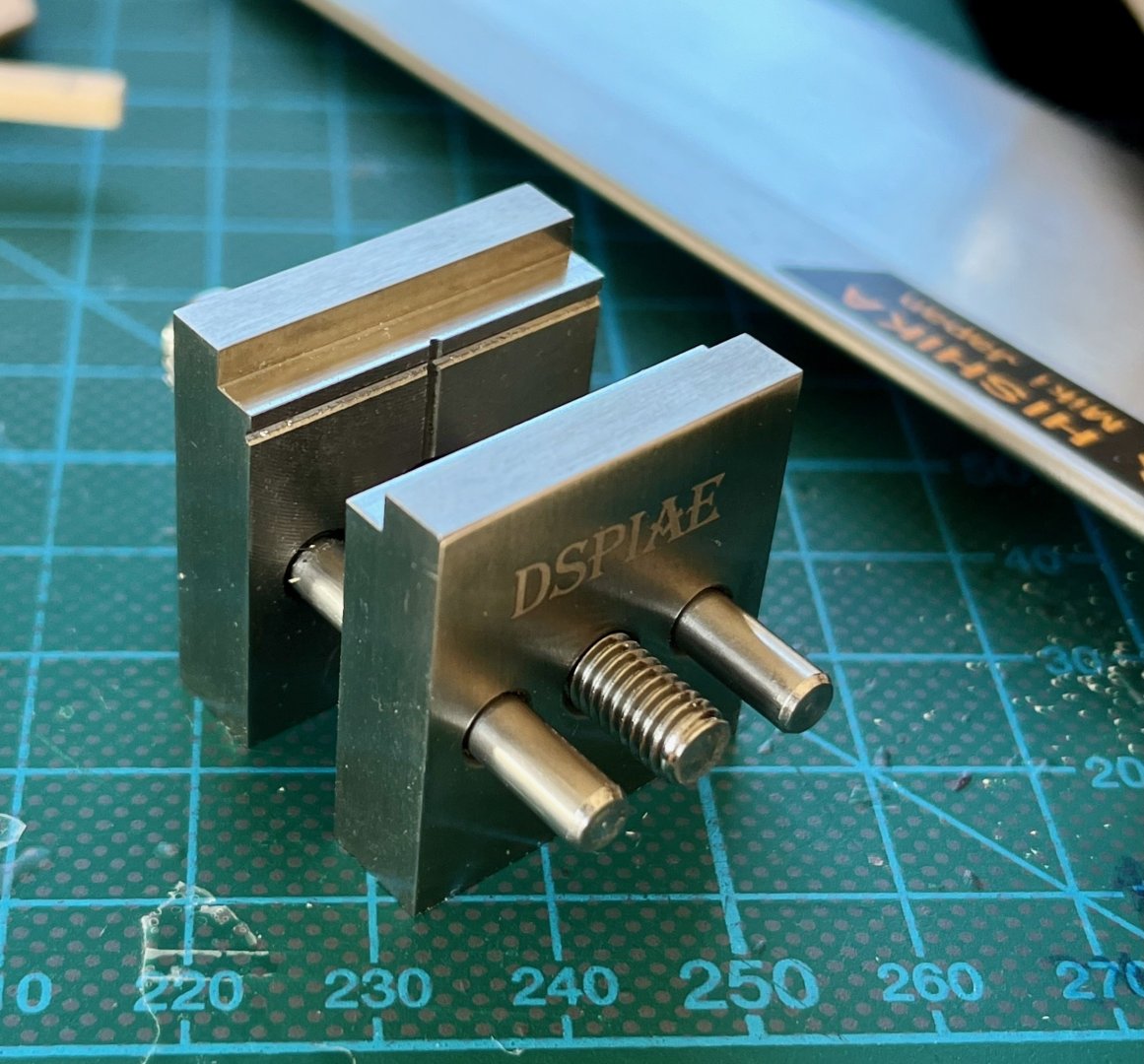
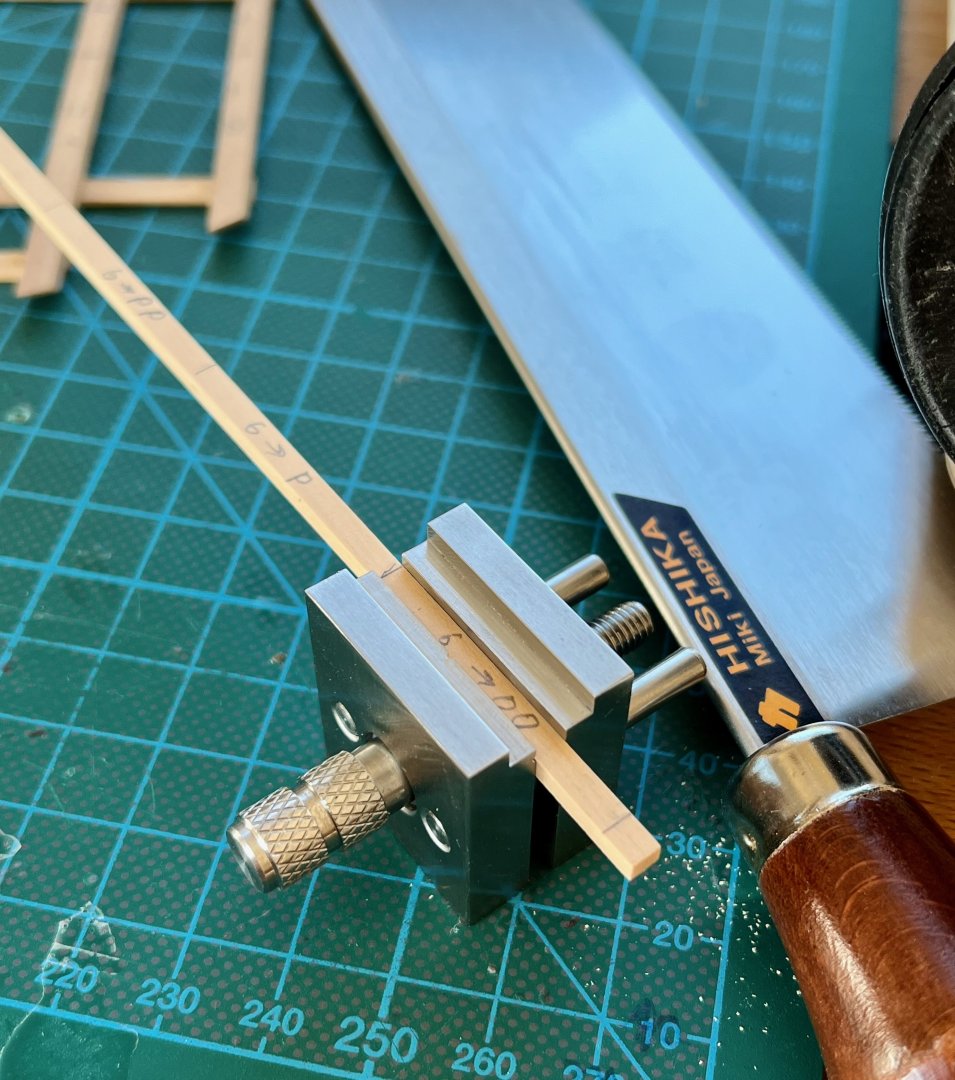
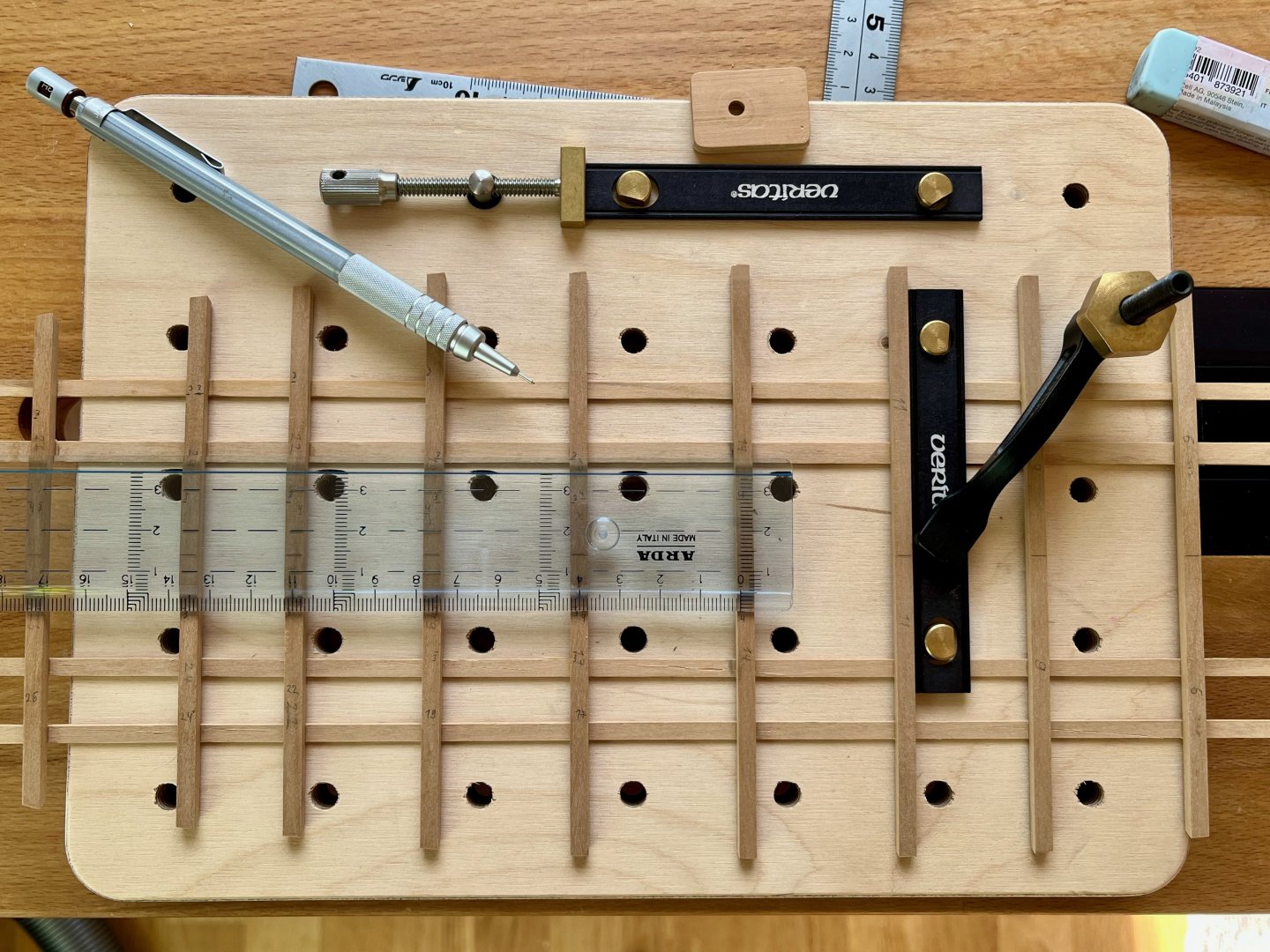
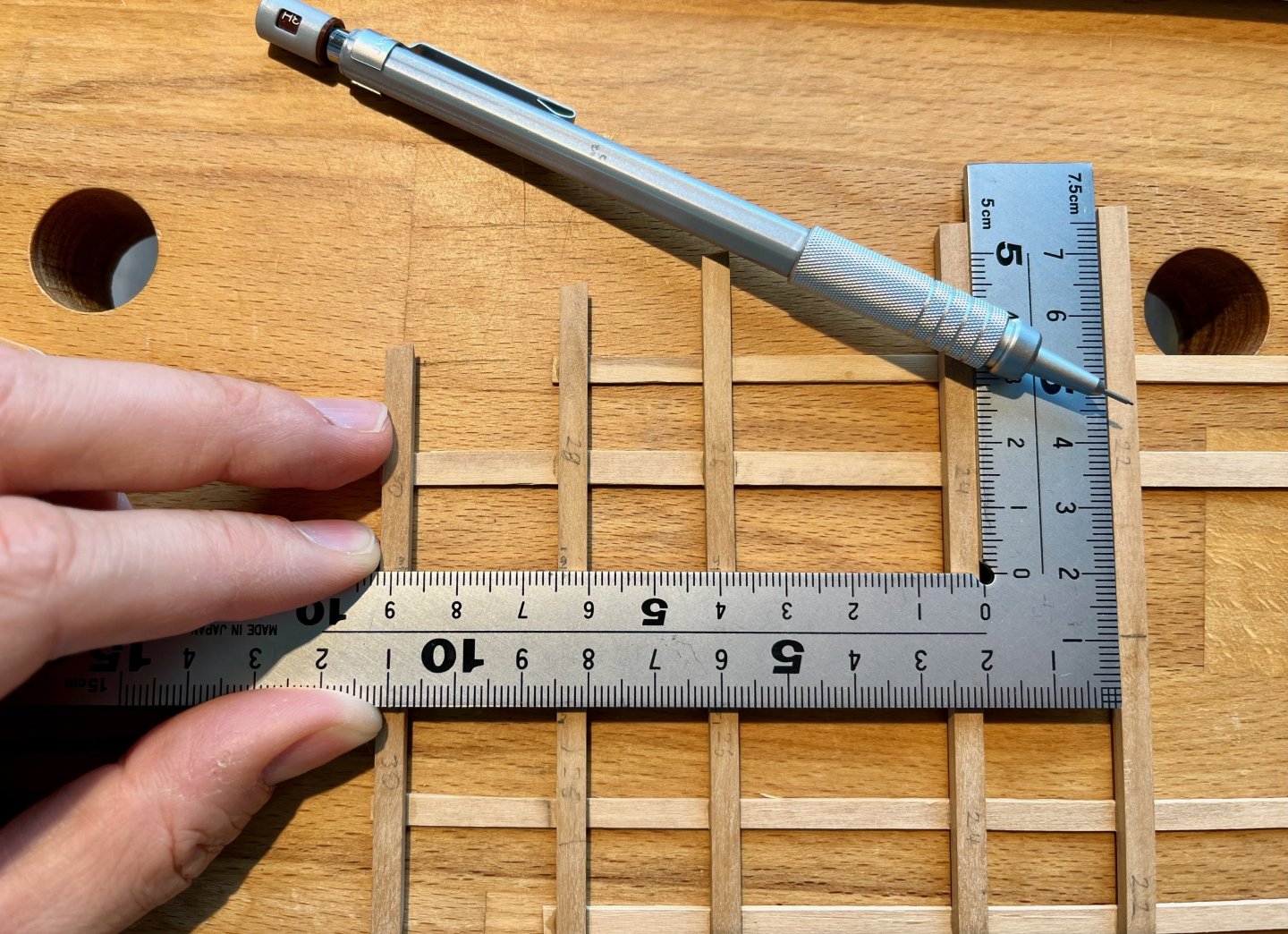

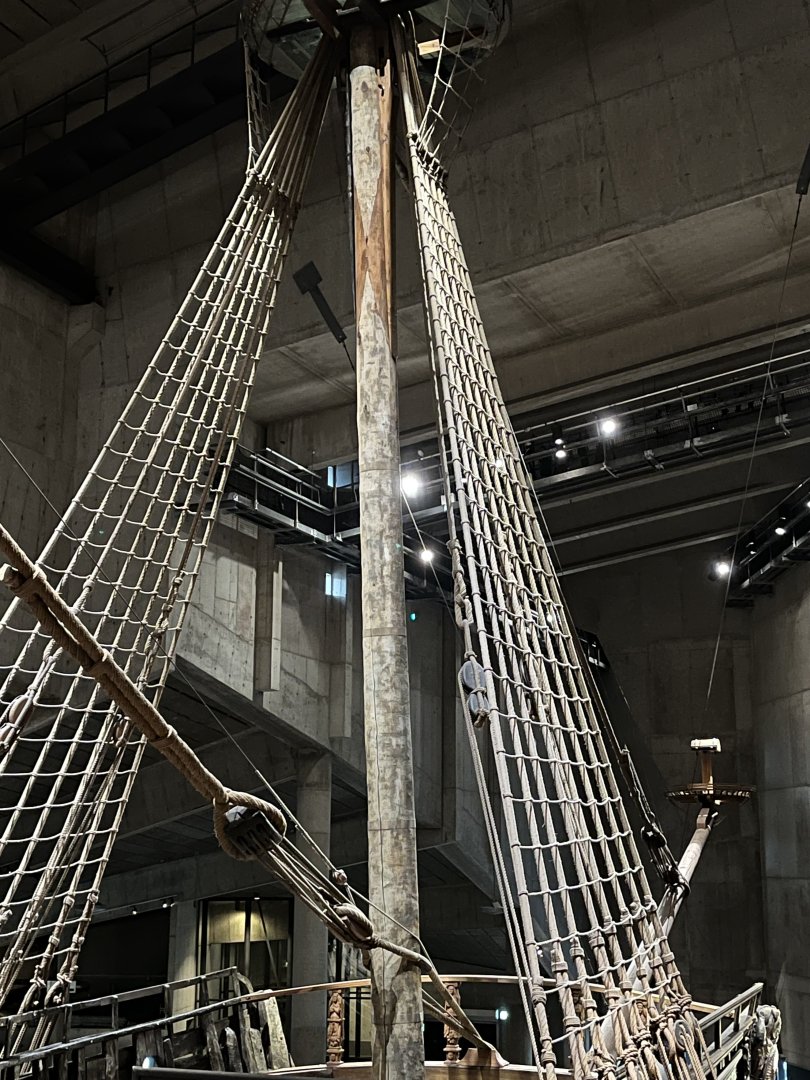
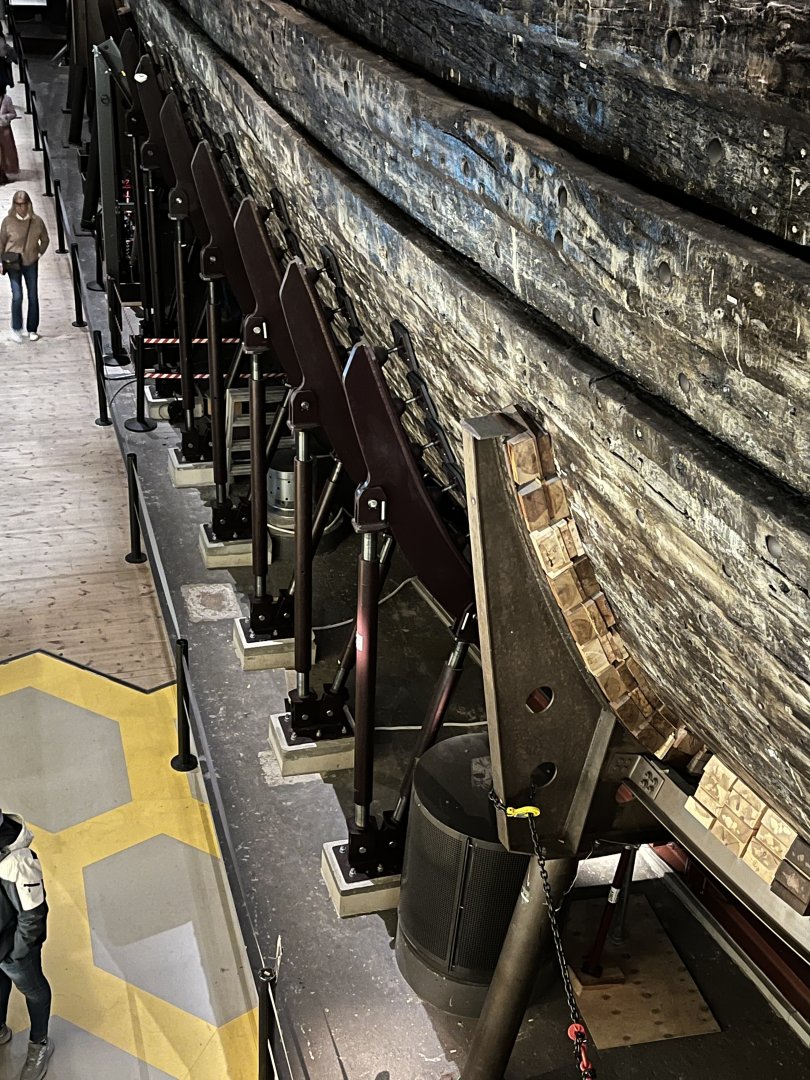
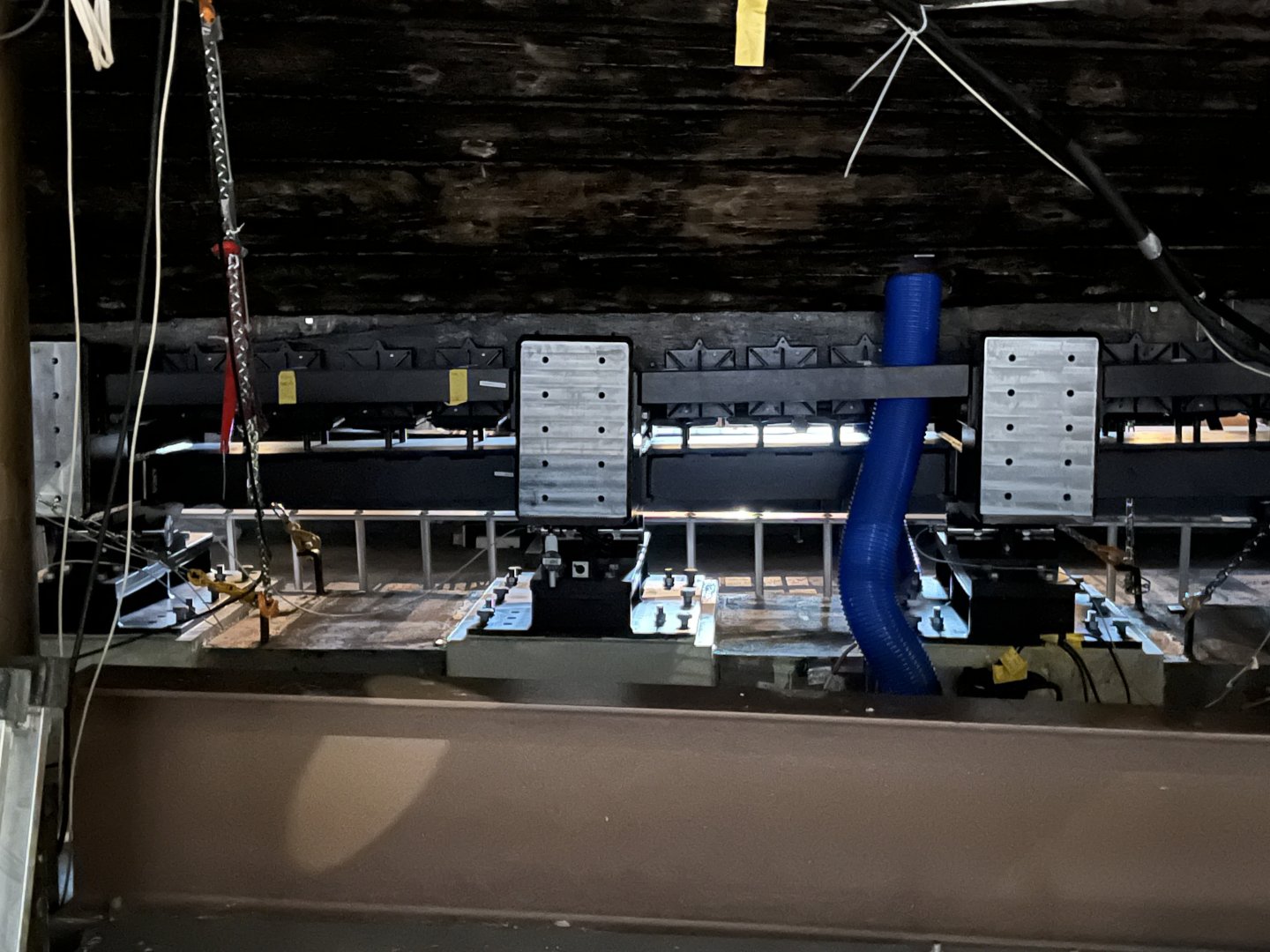
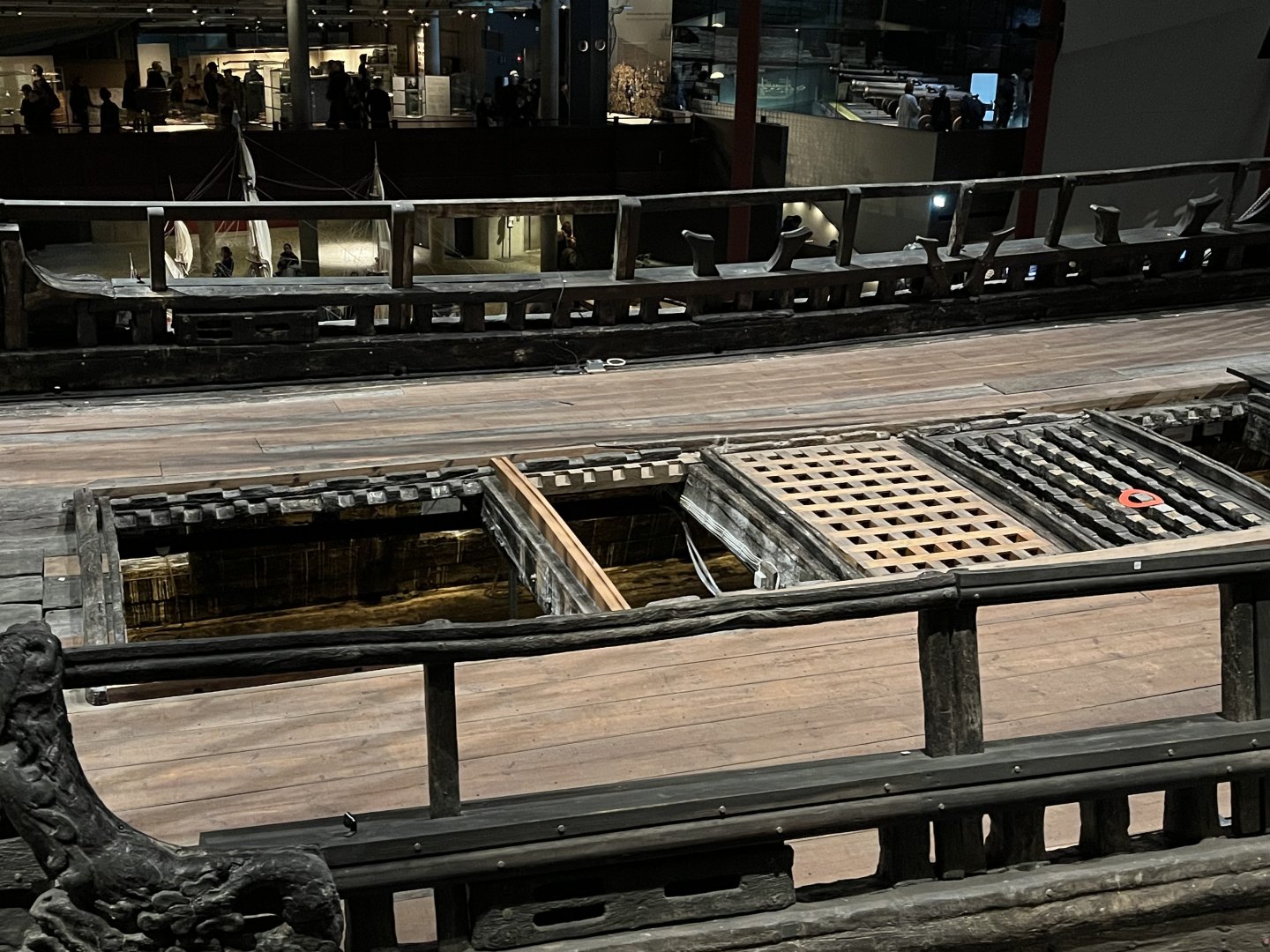
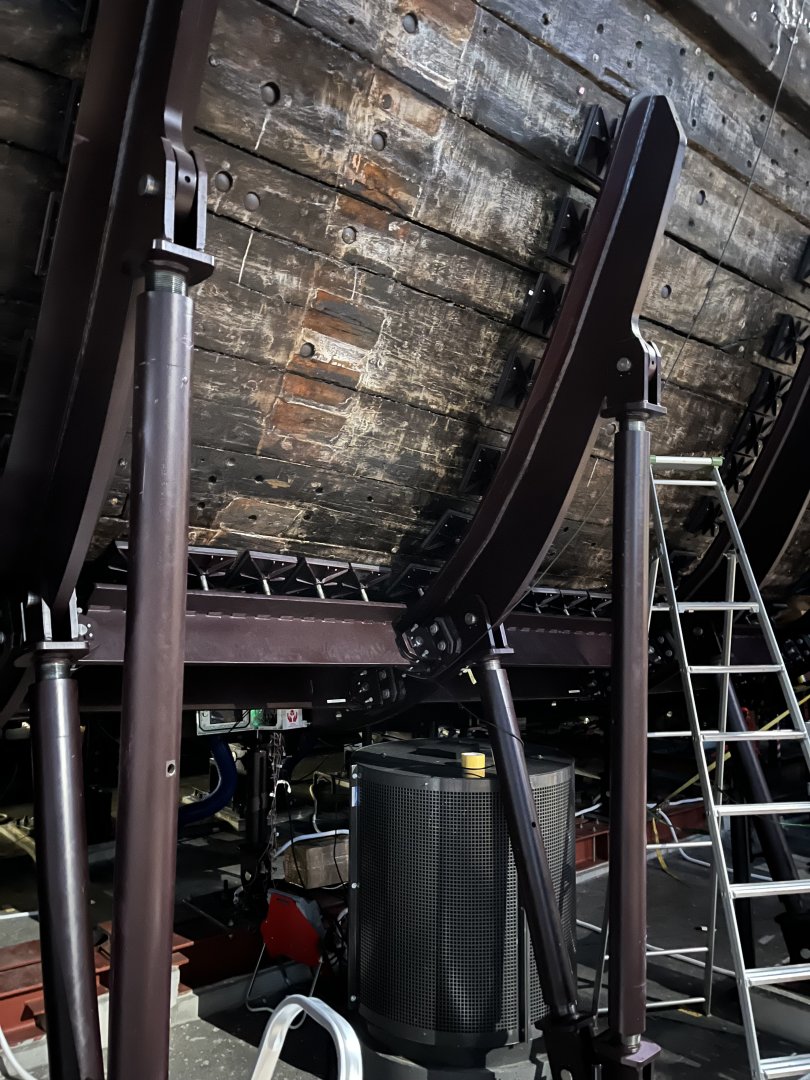
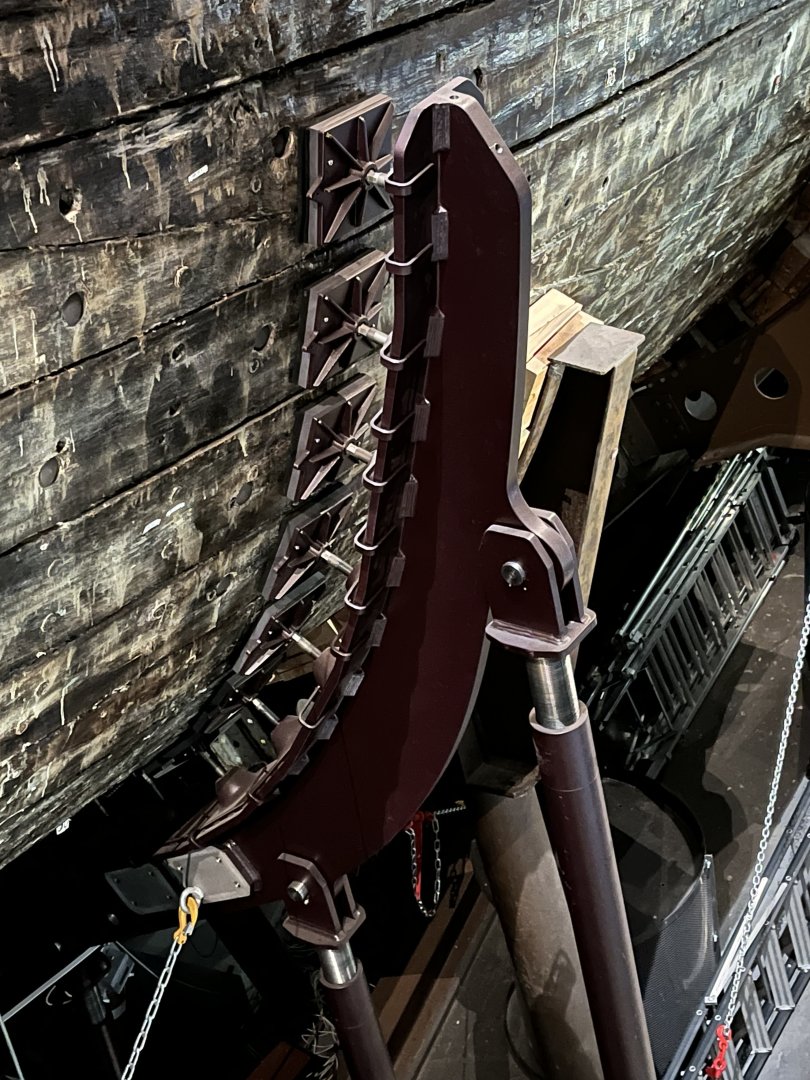
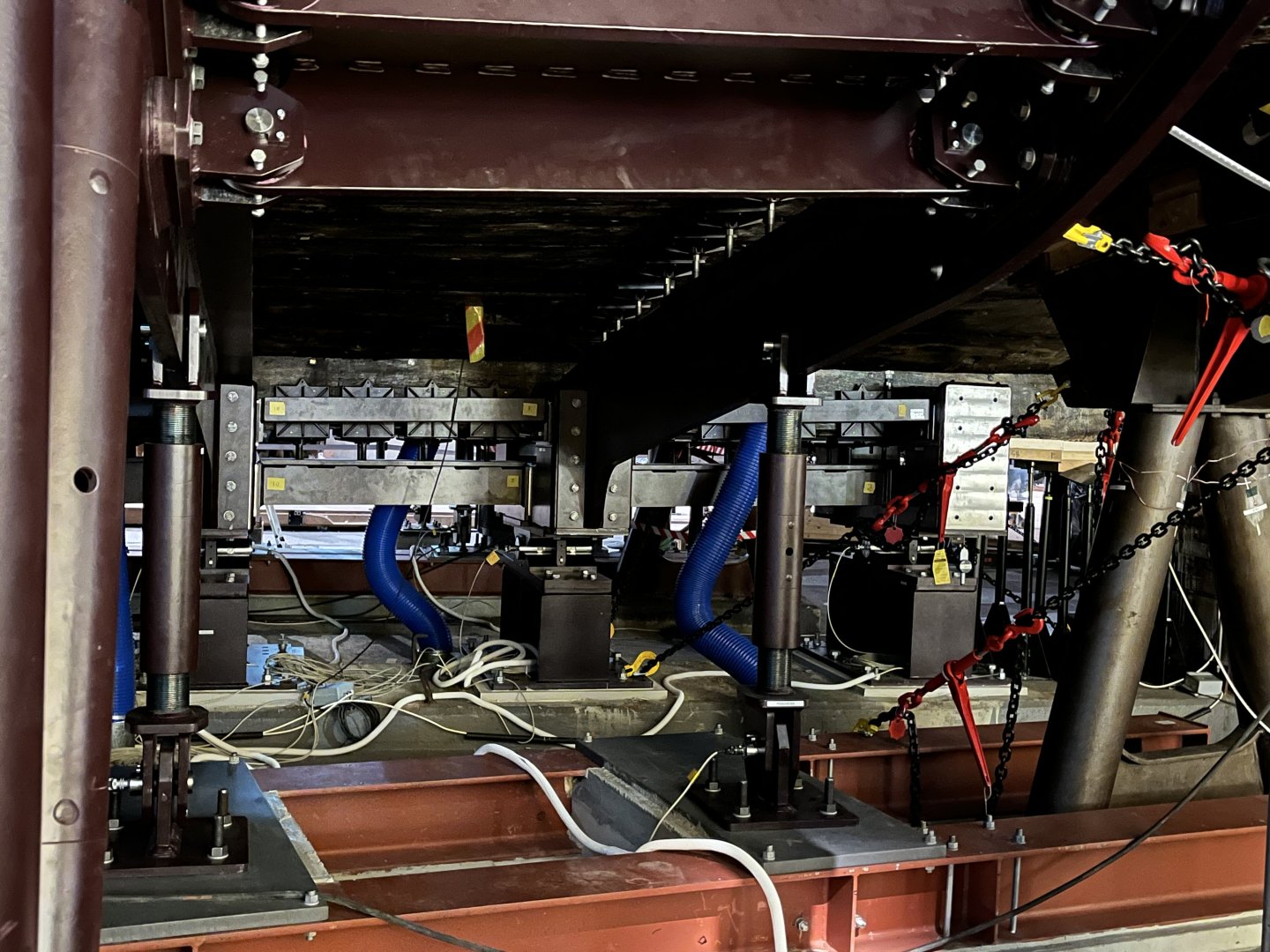
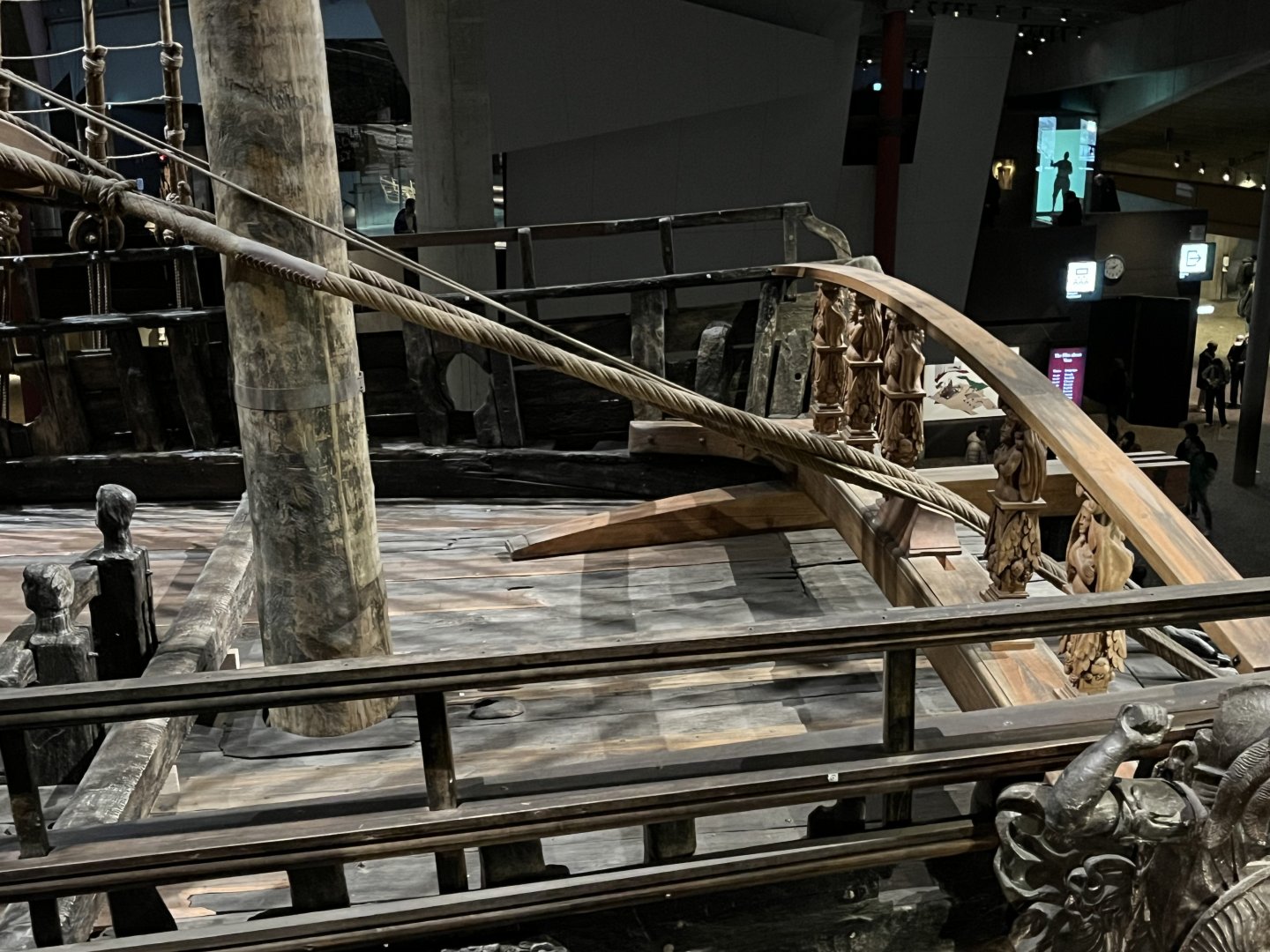
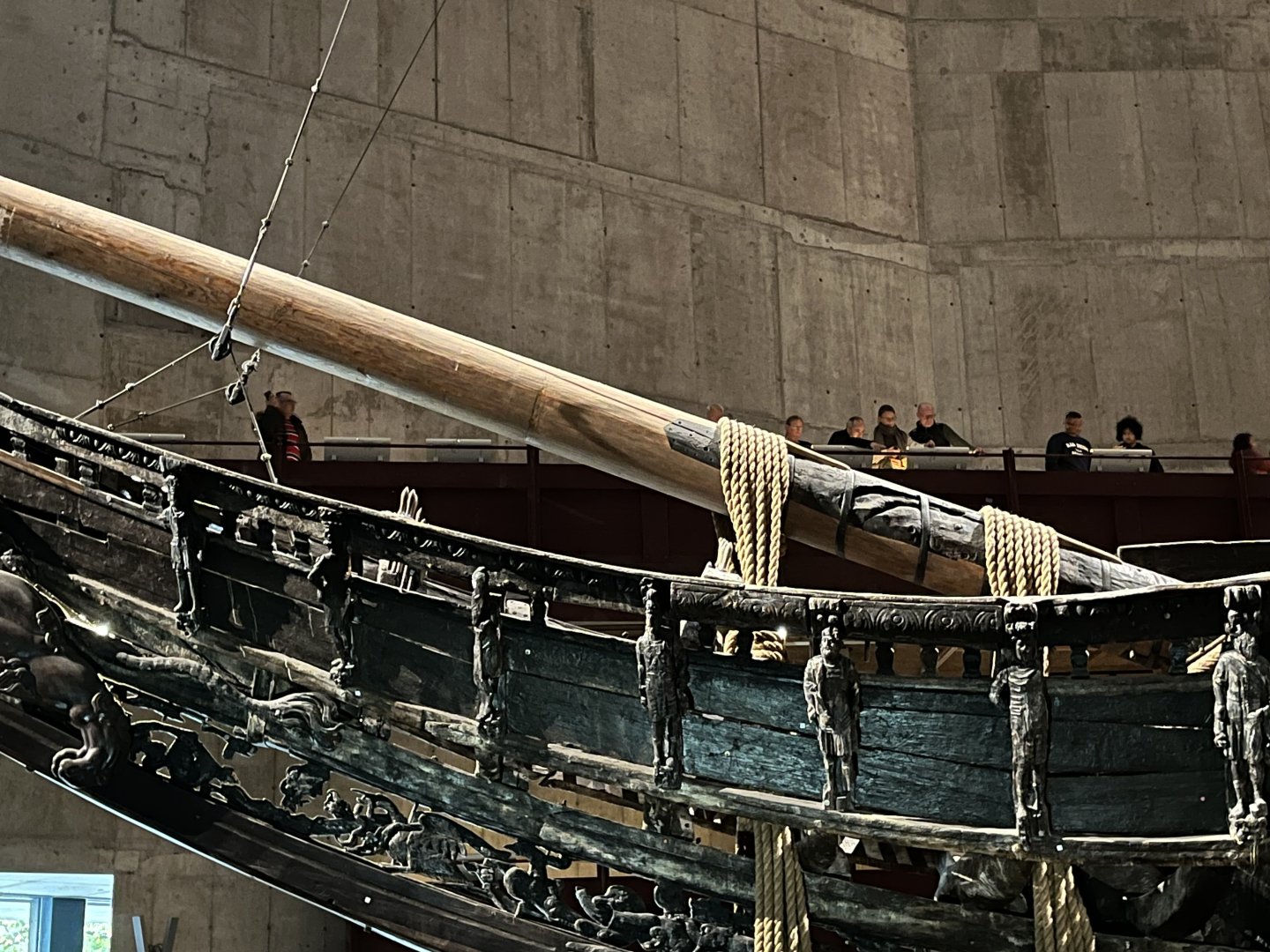
.thumb.jpeg.d934cde94343ca28dd025f3edf1b2dc0.jpeg)
